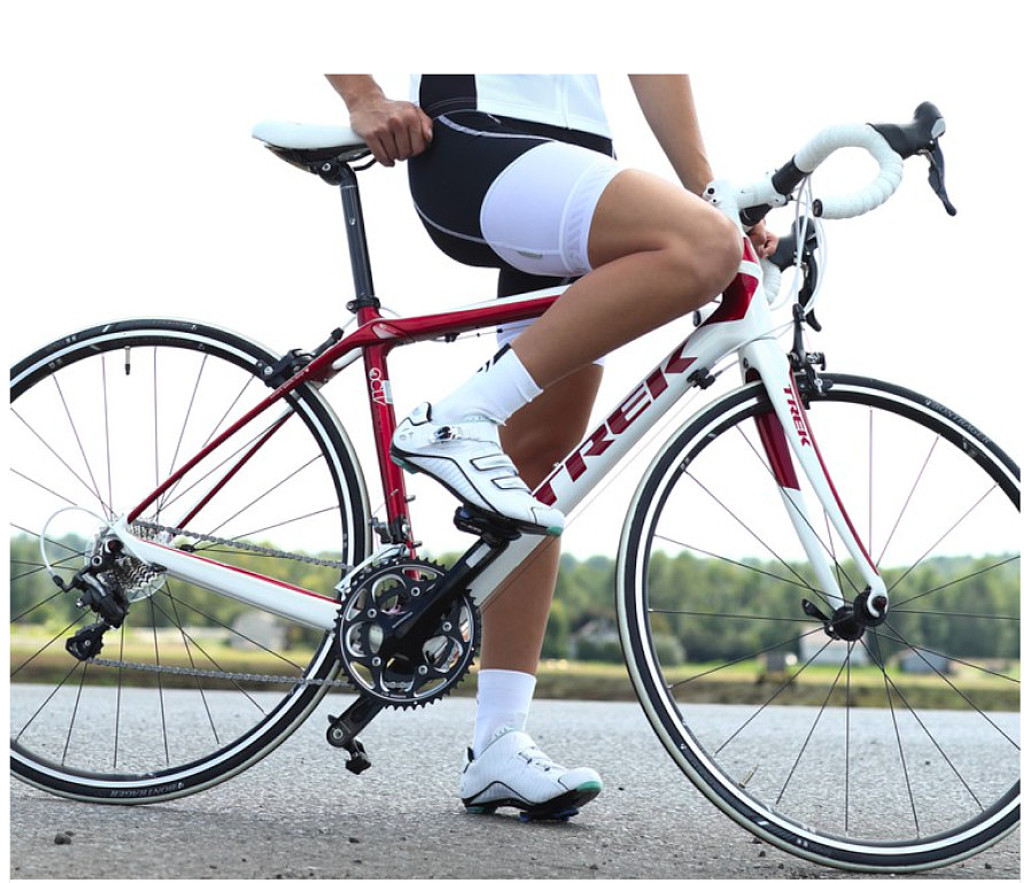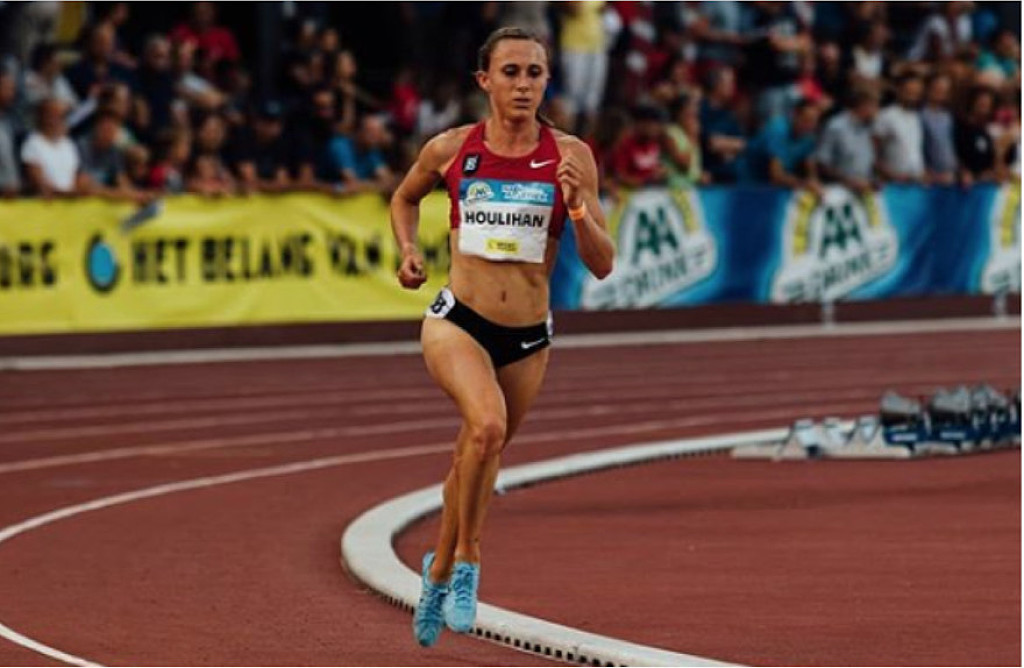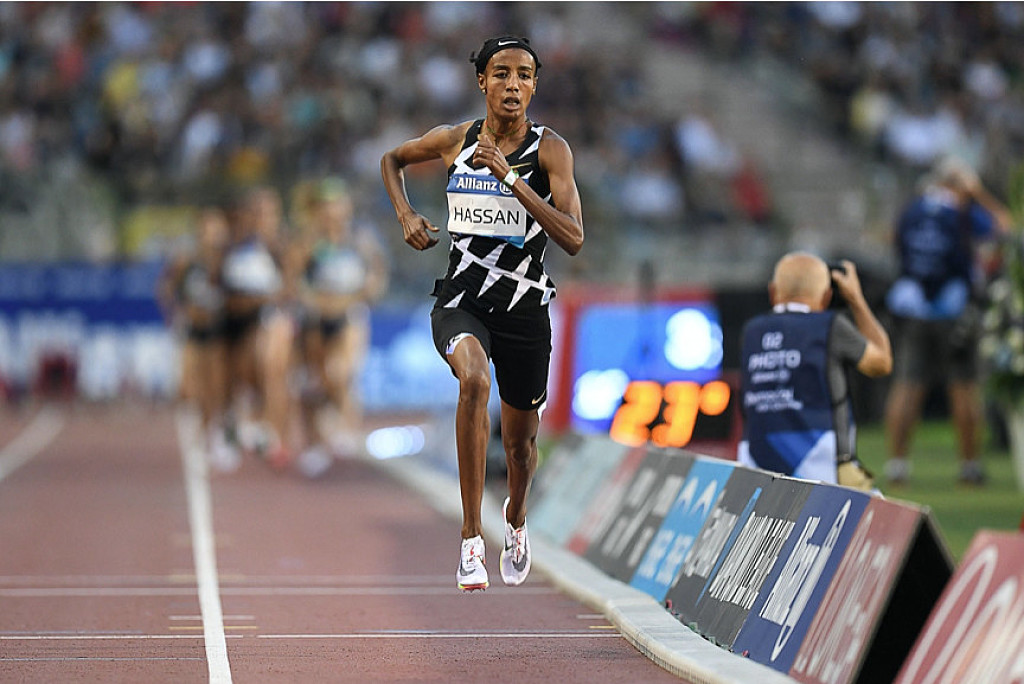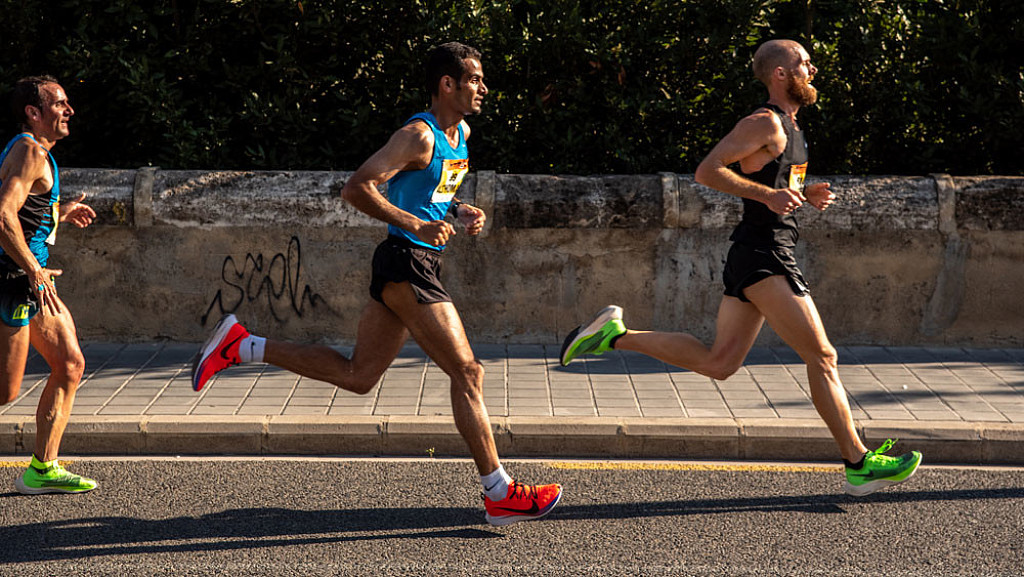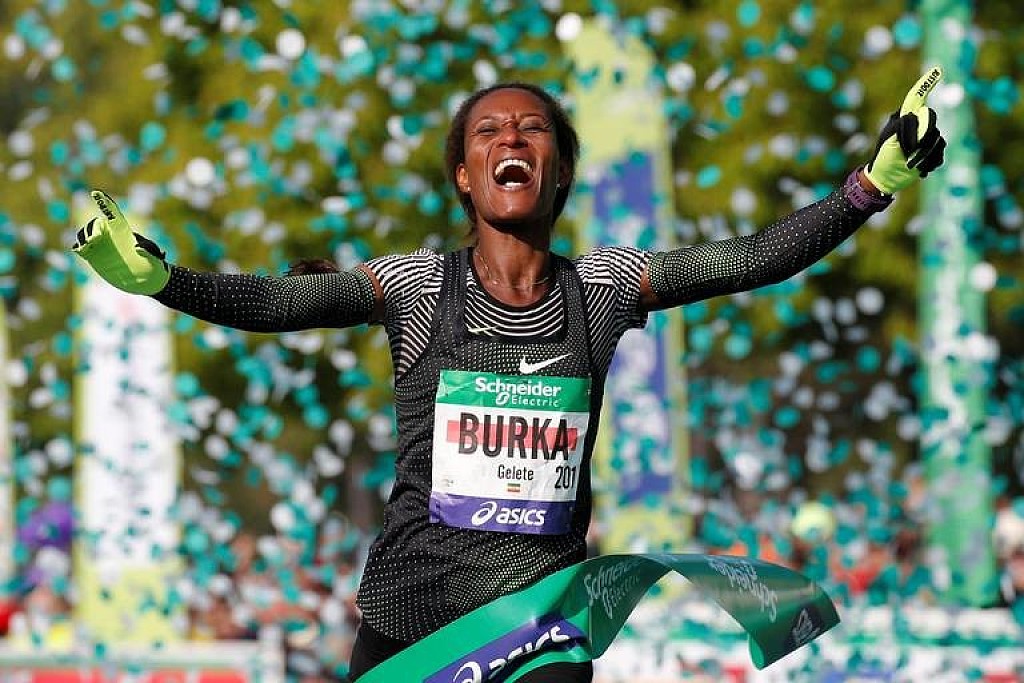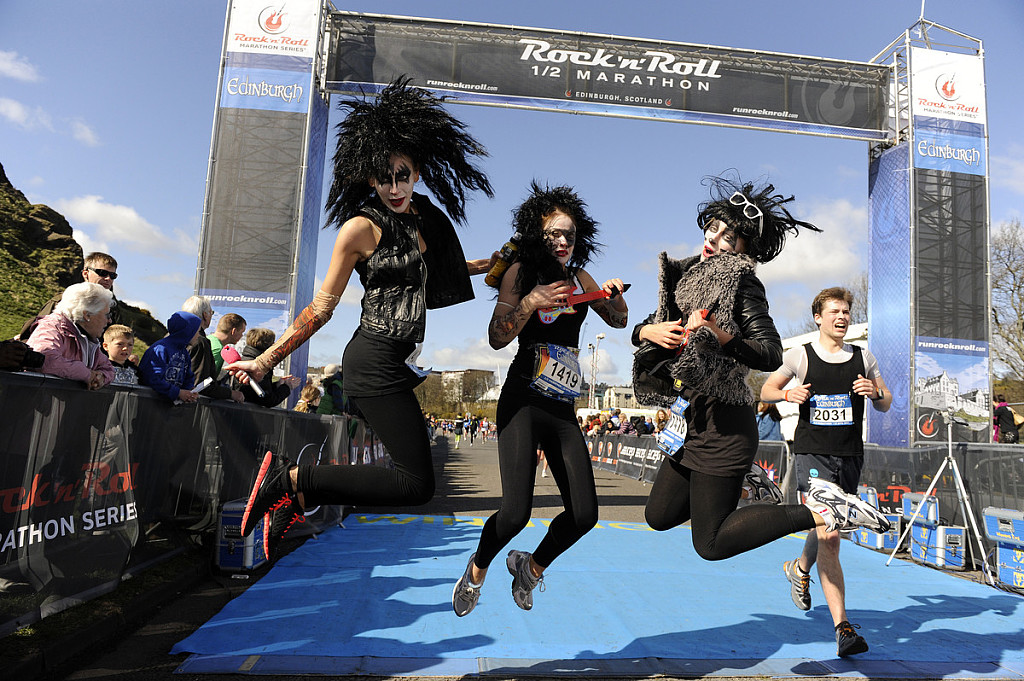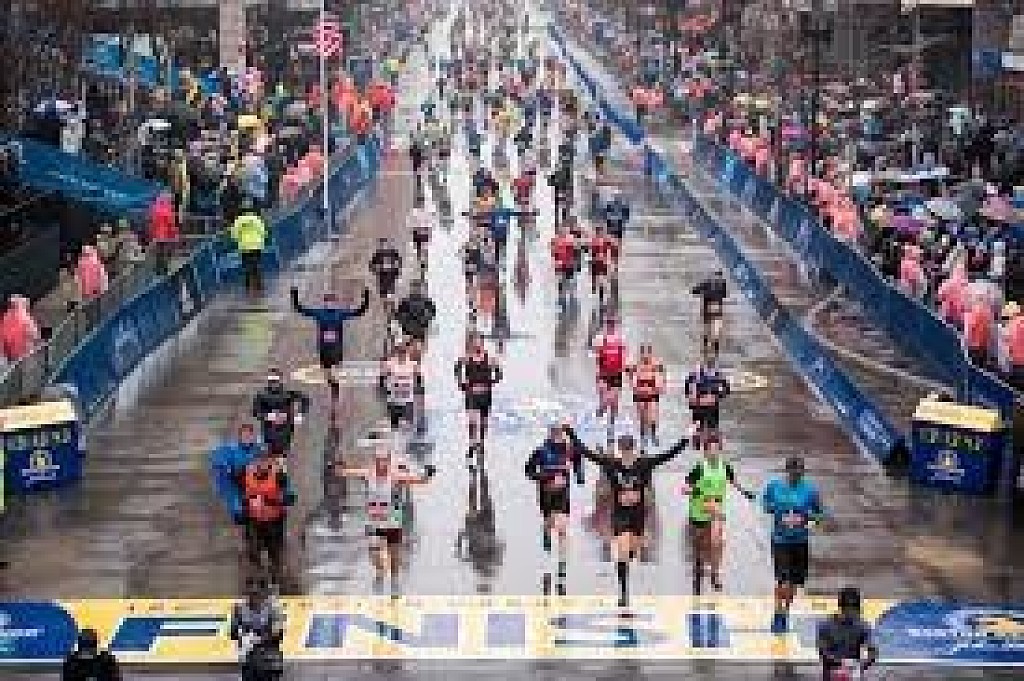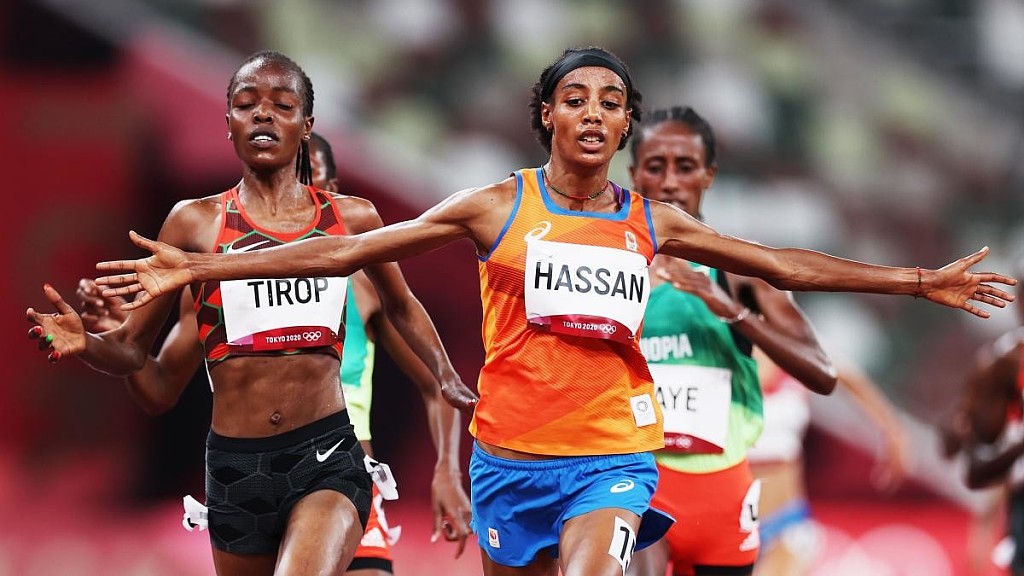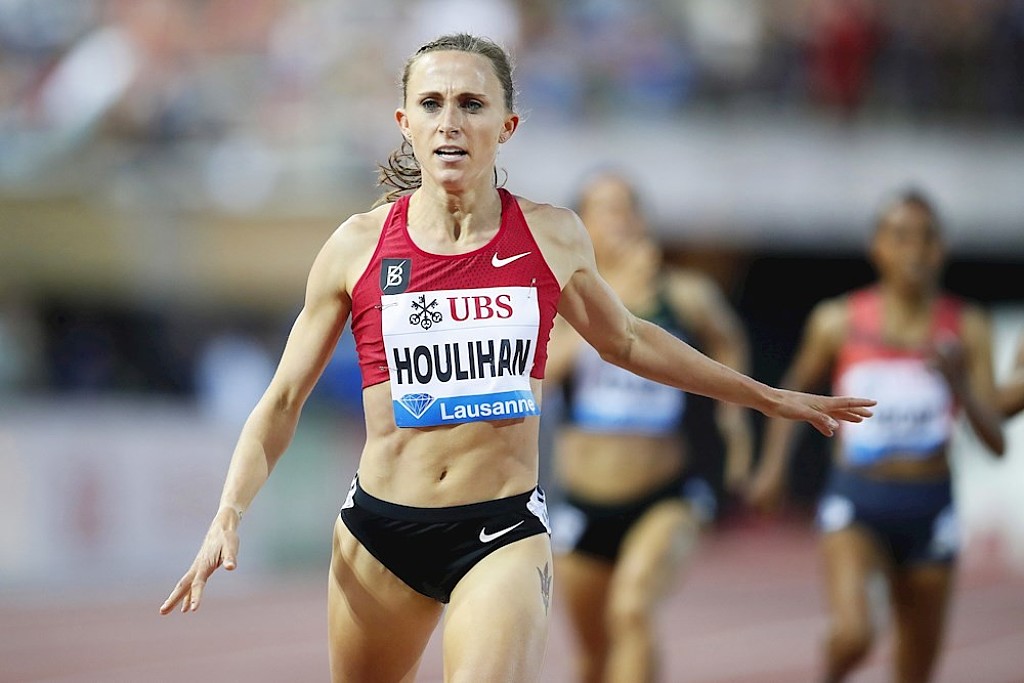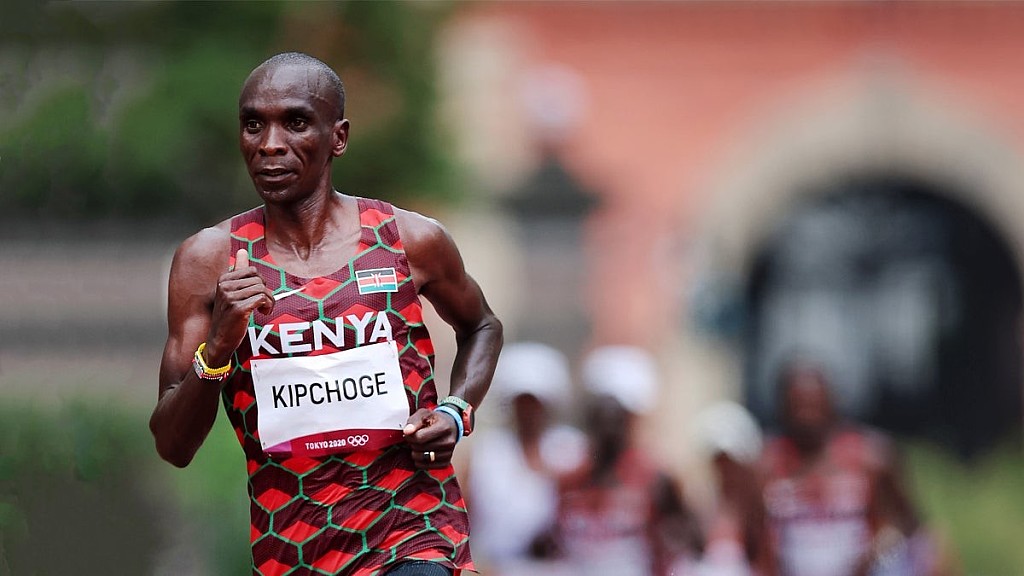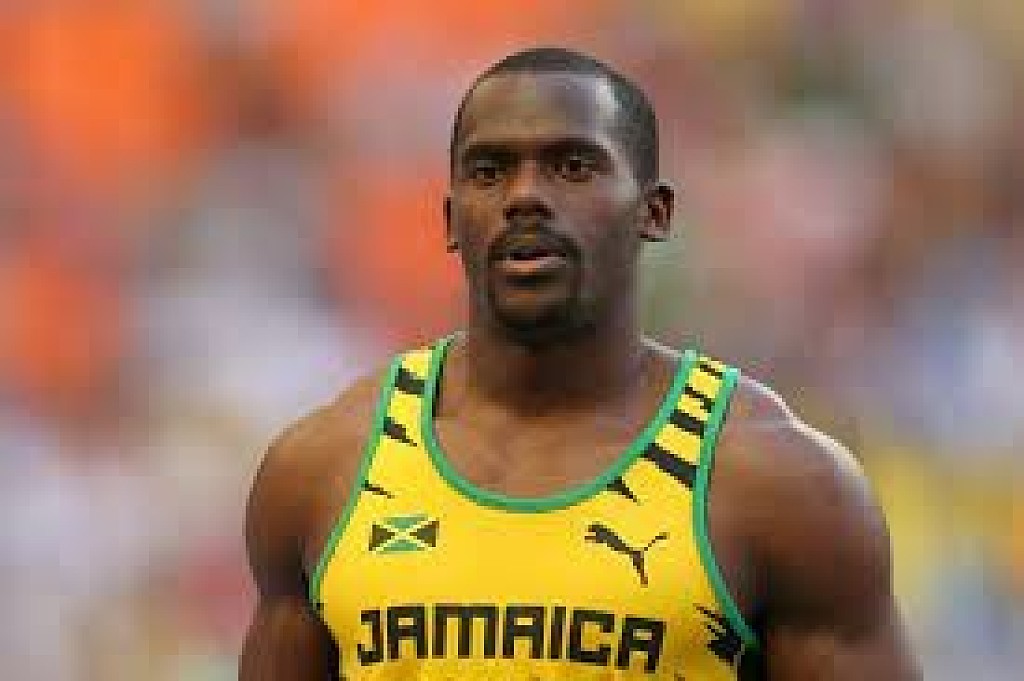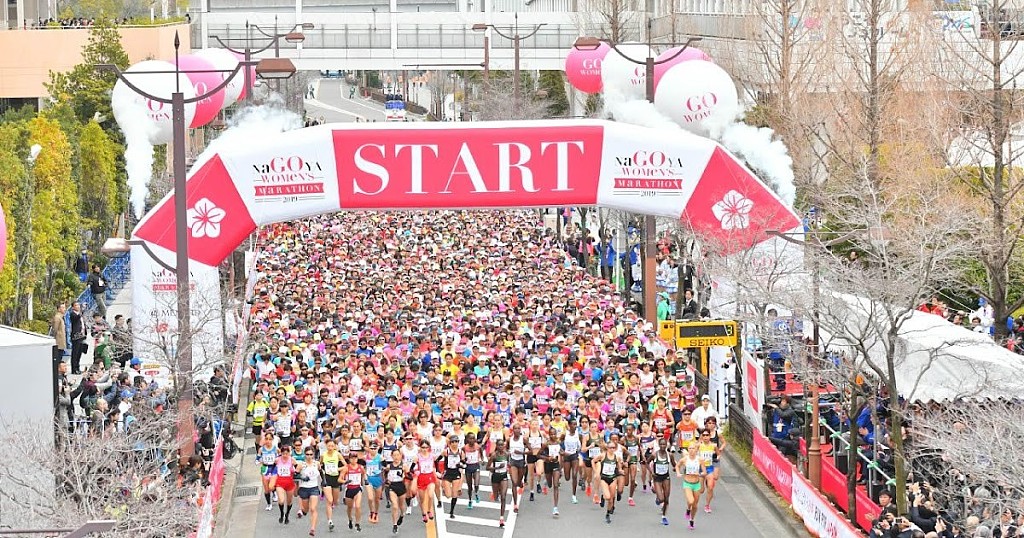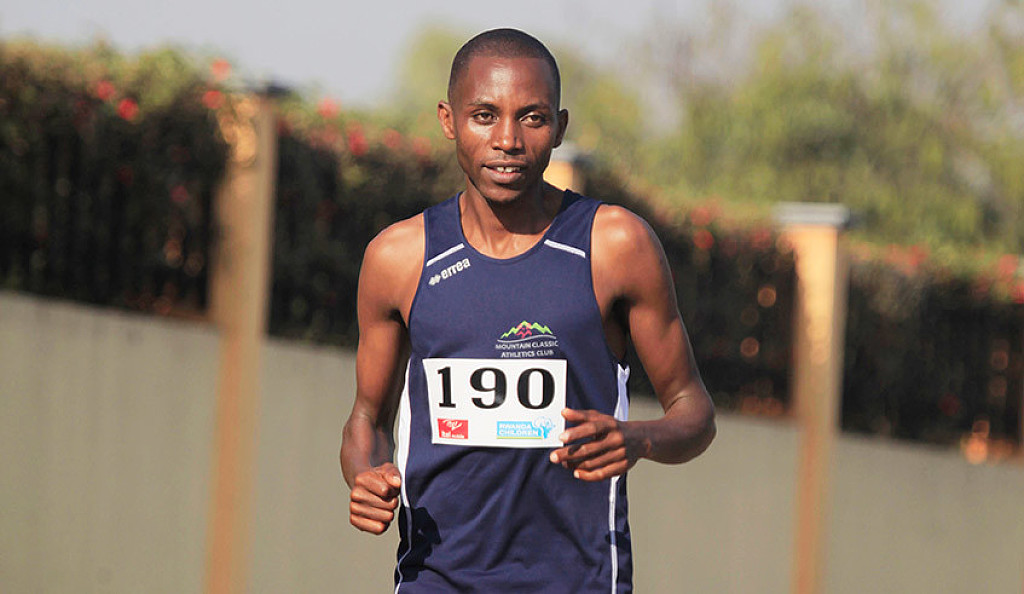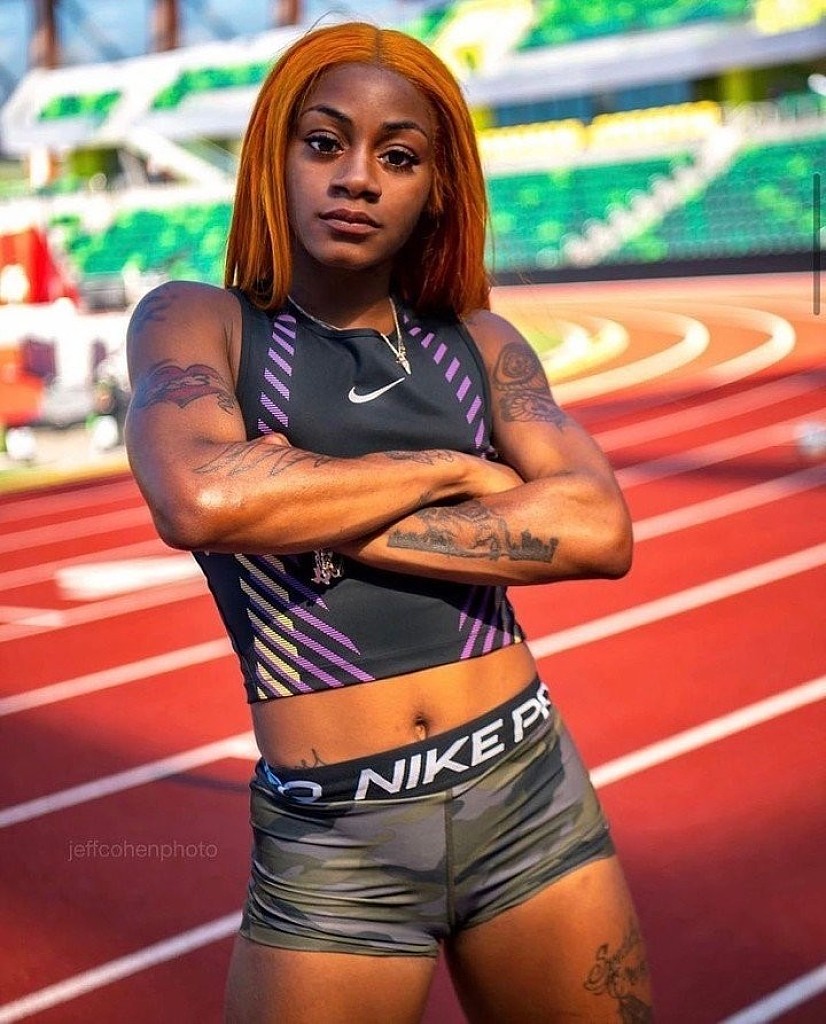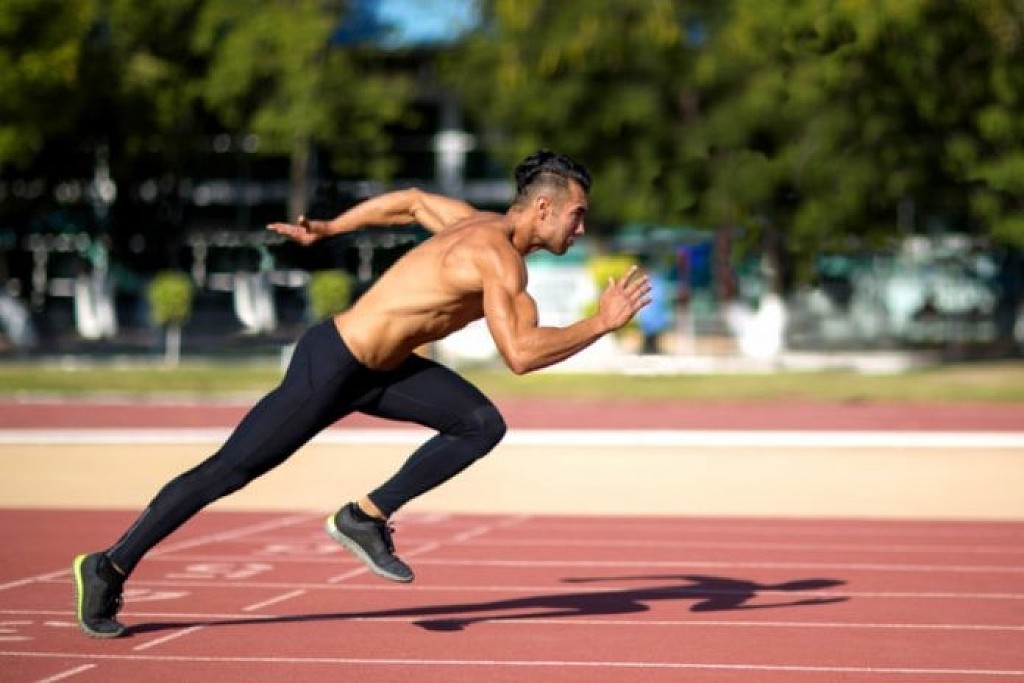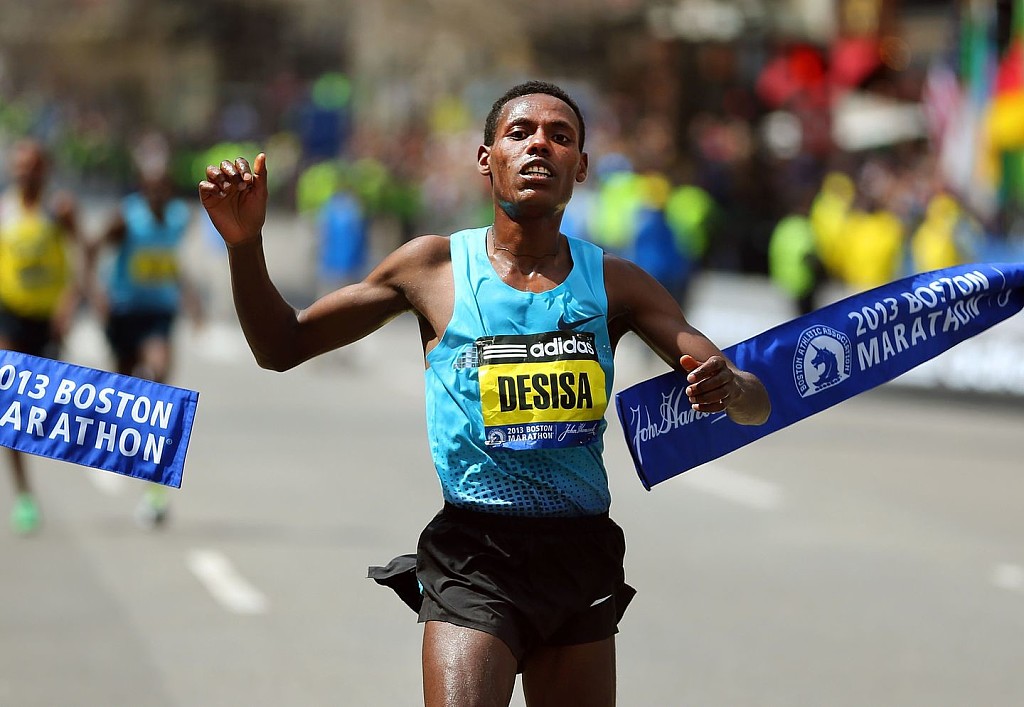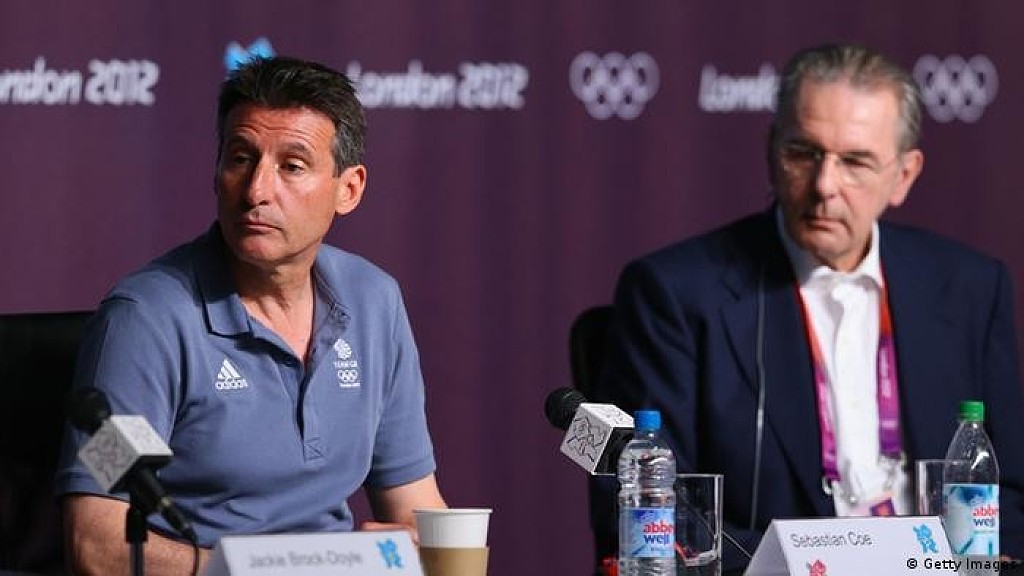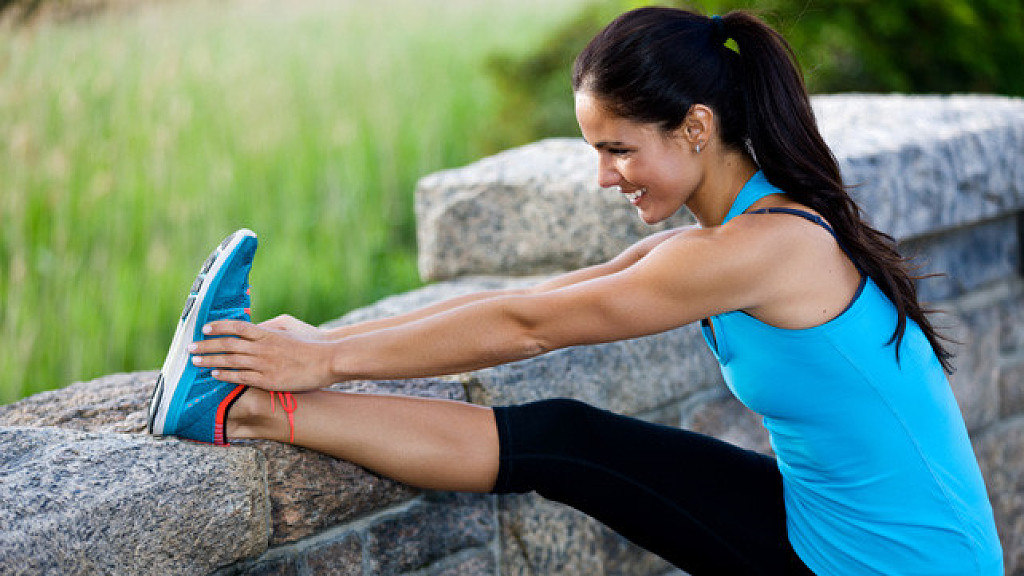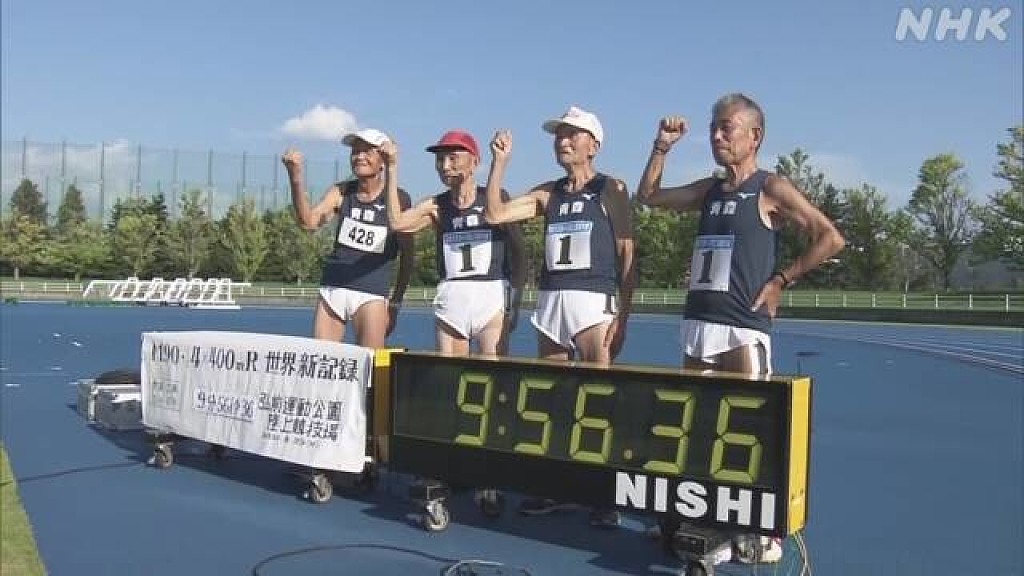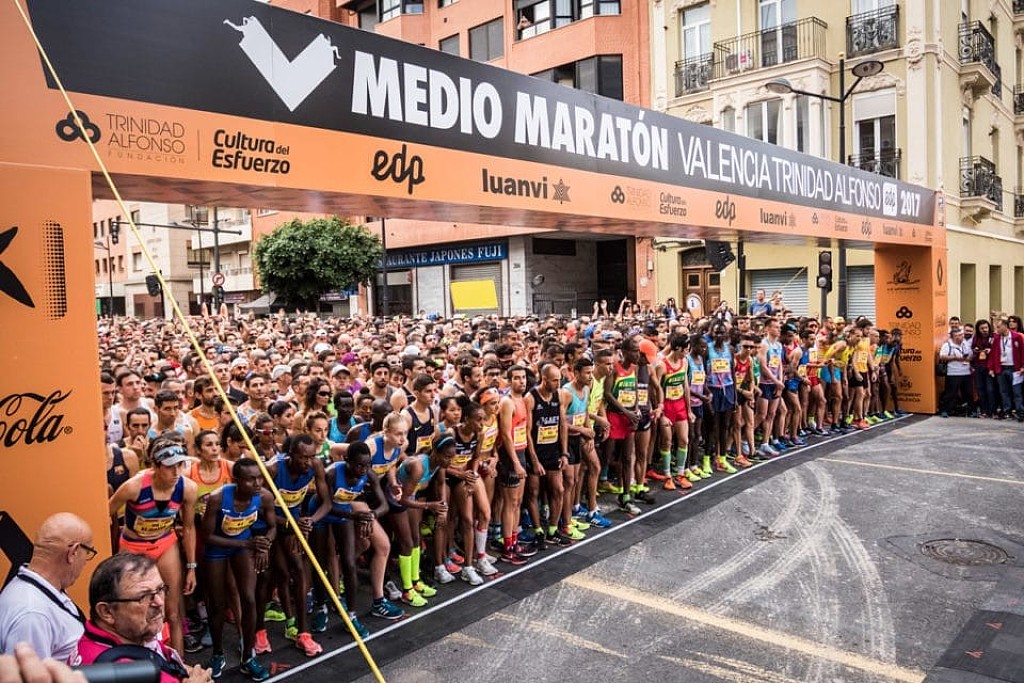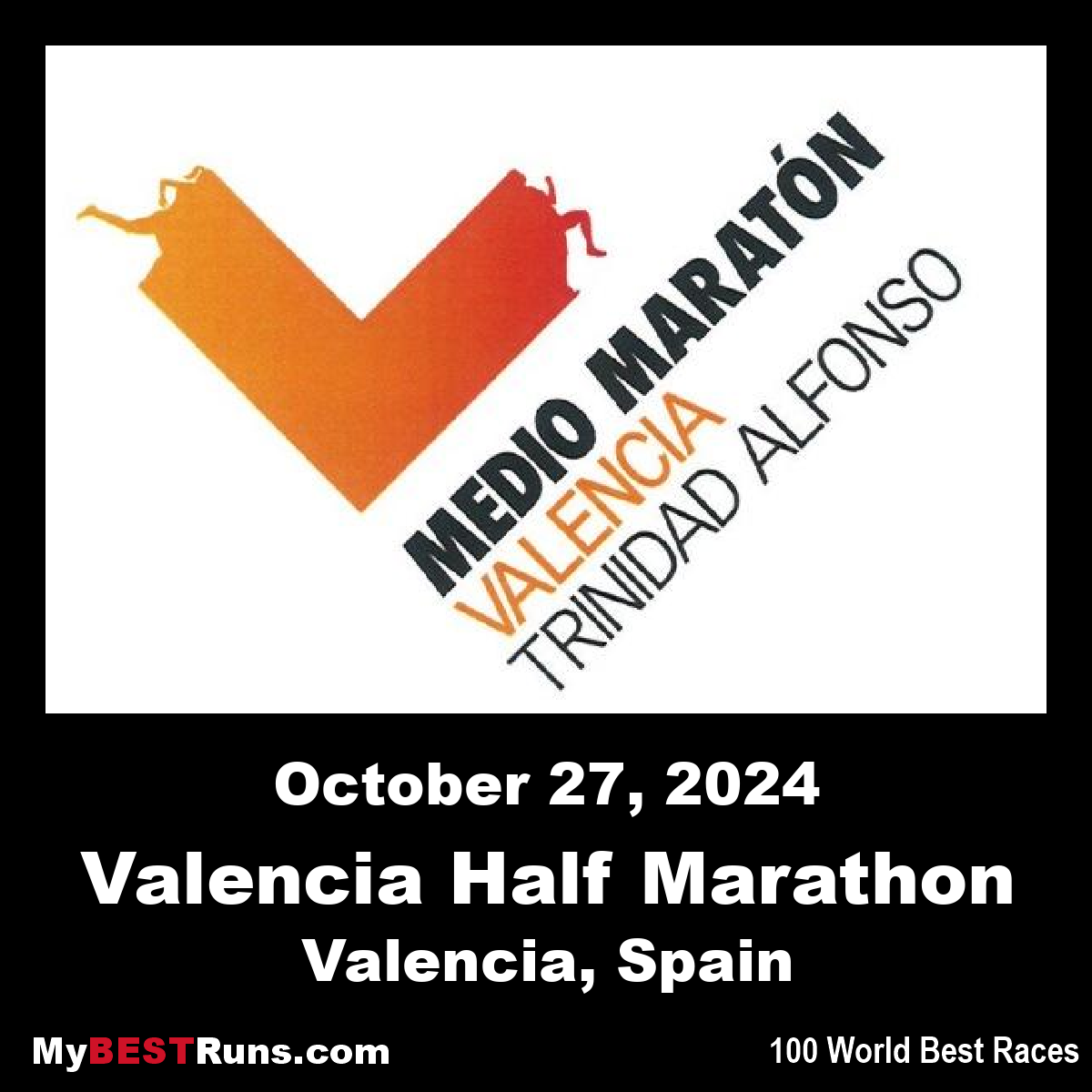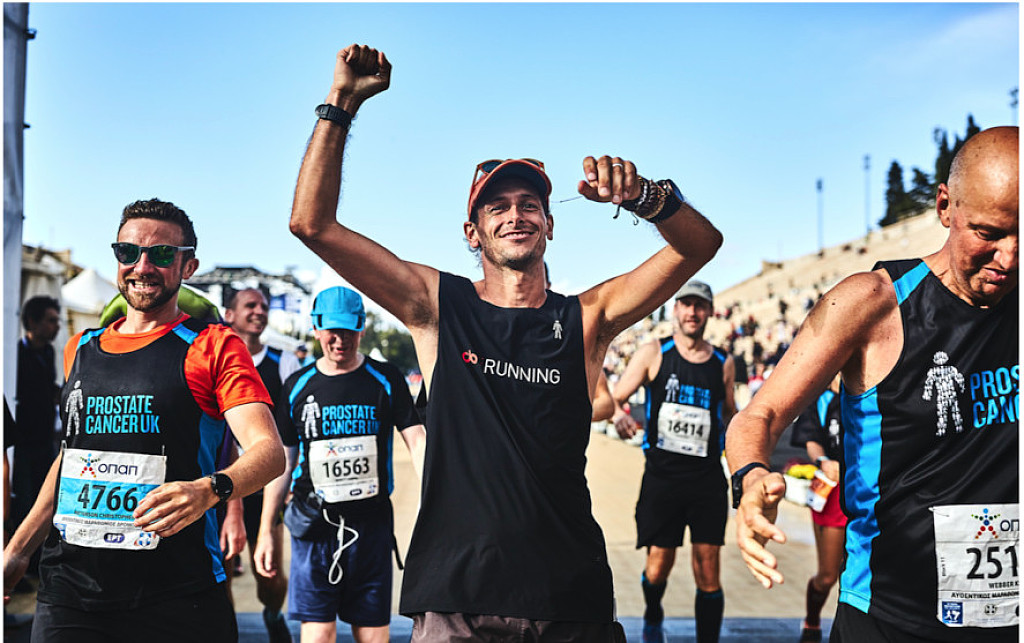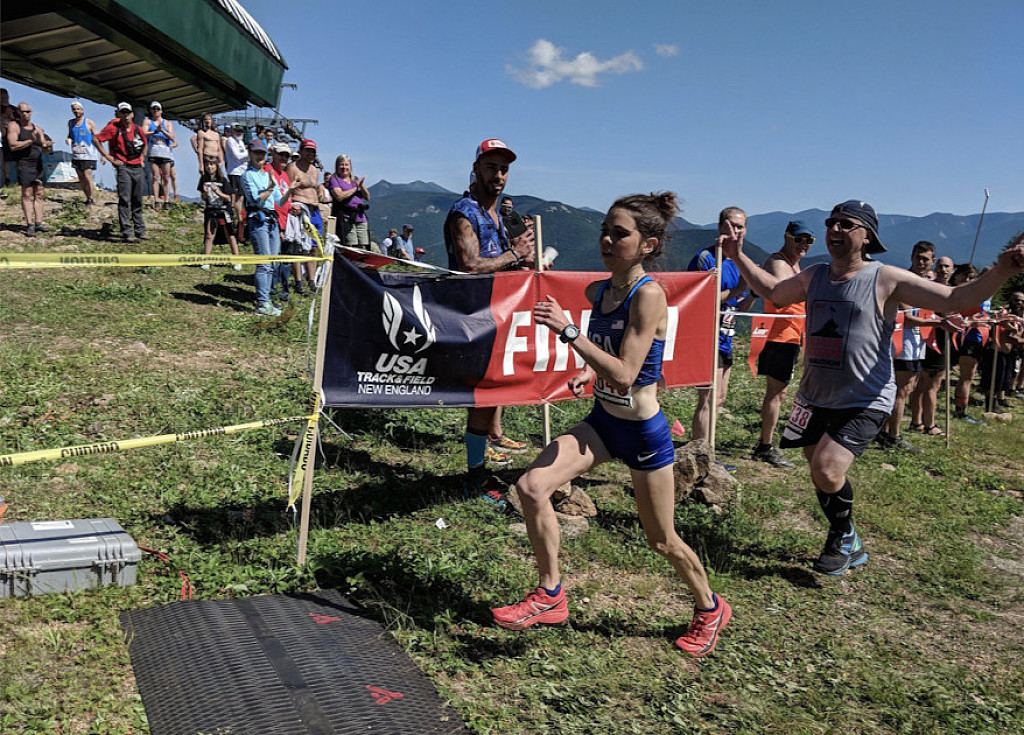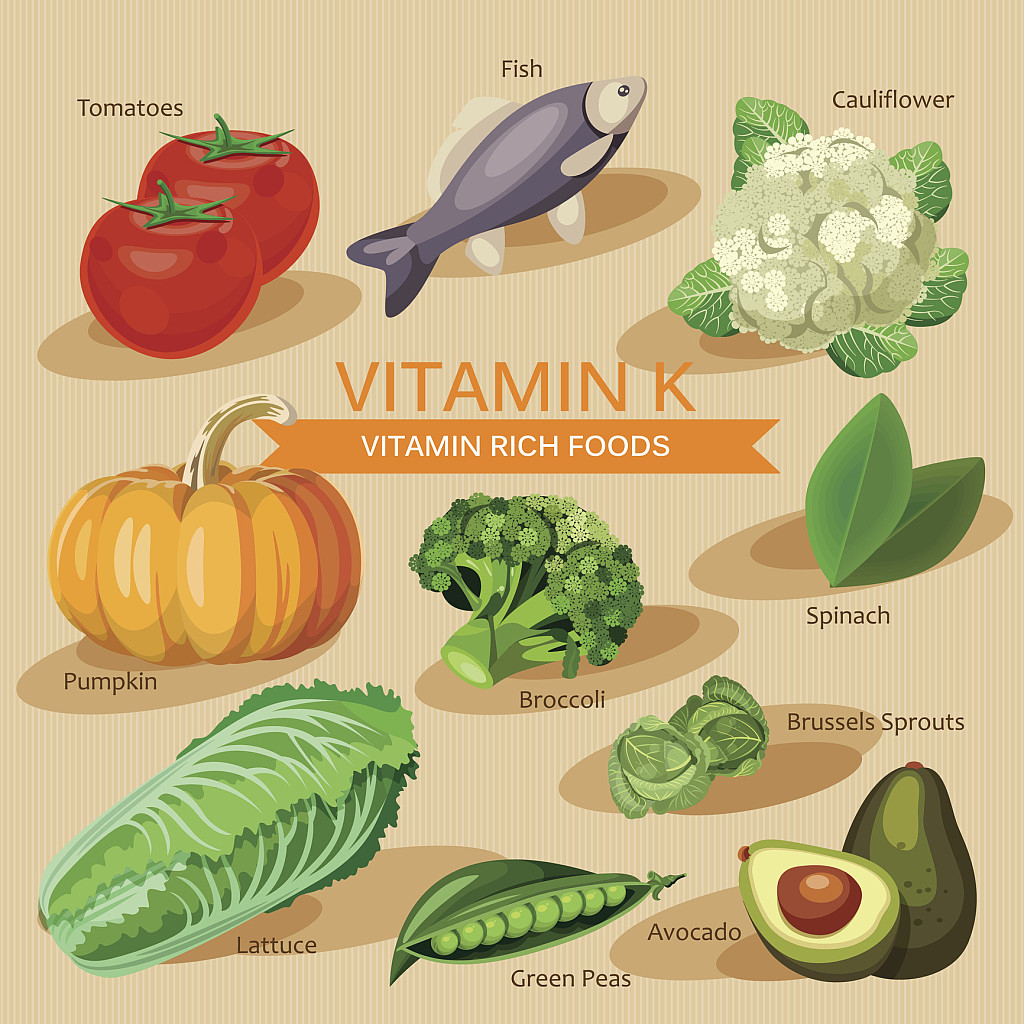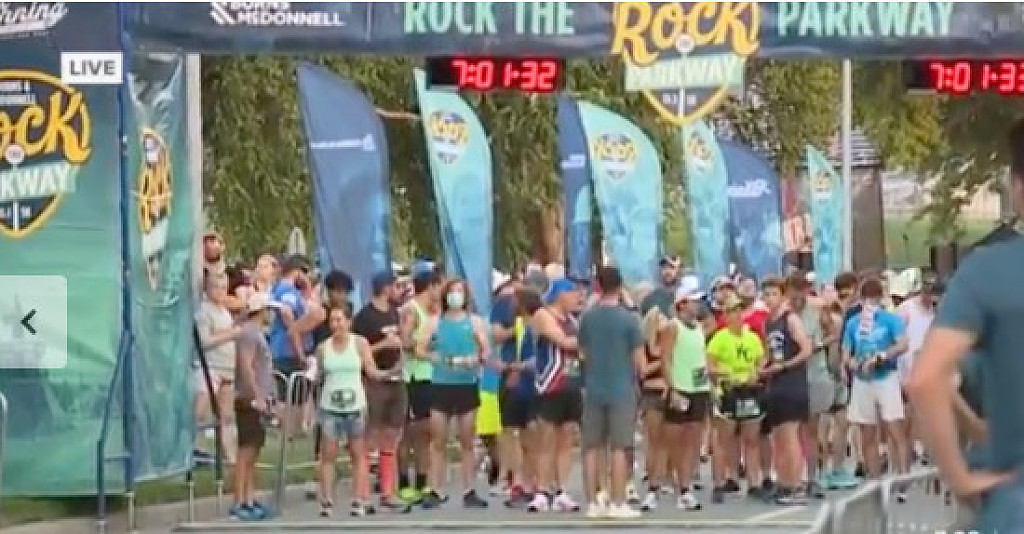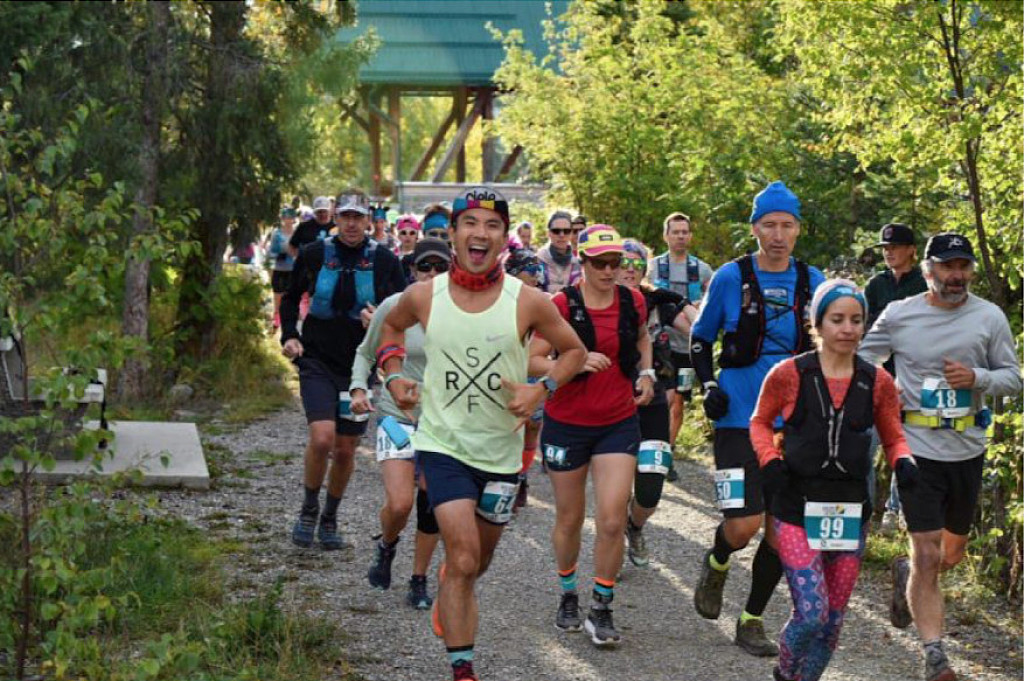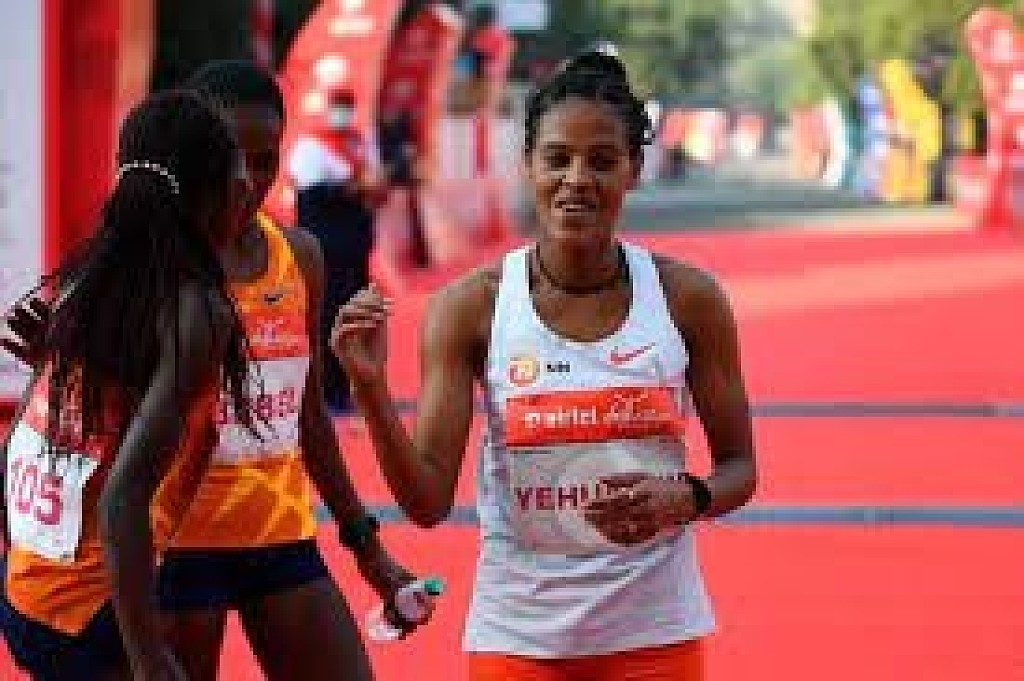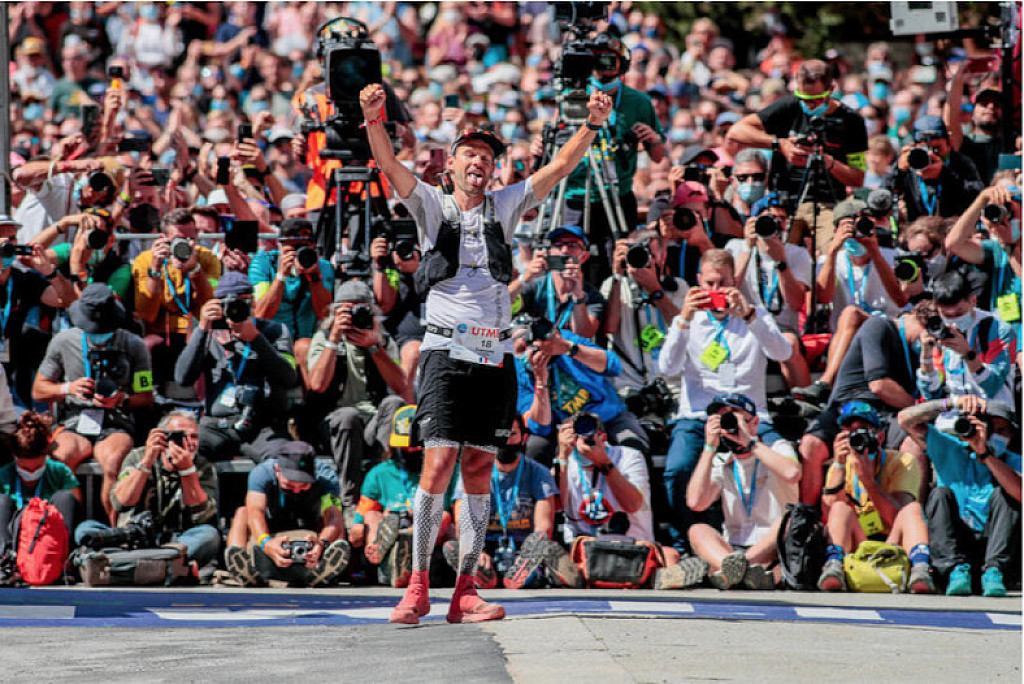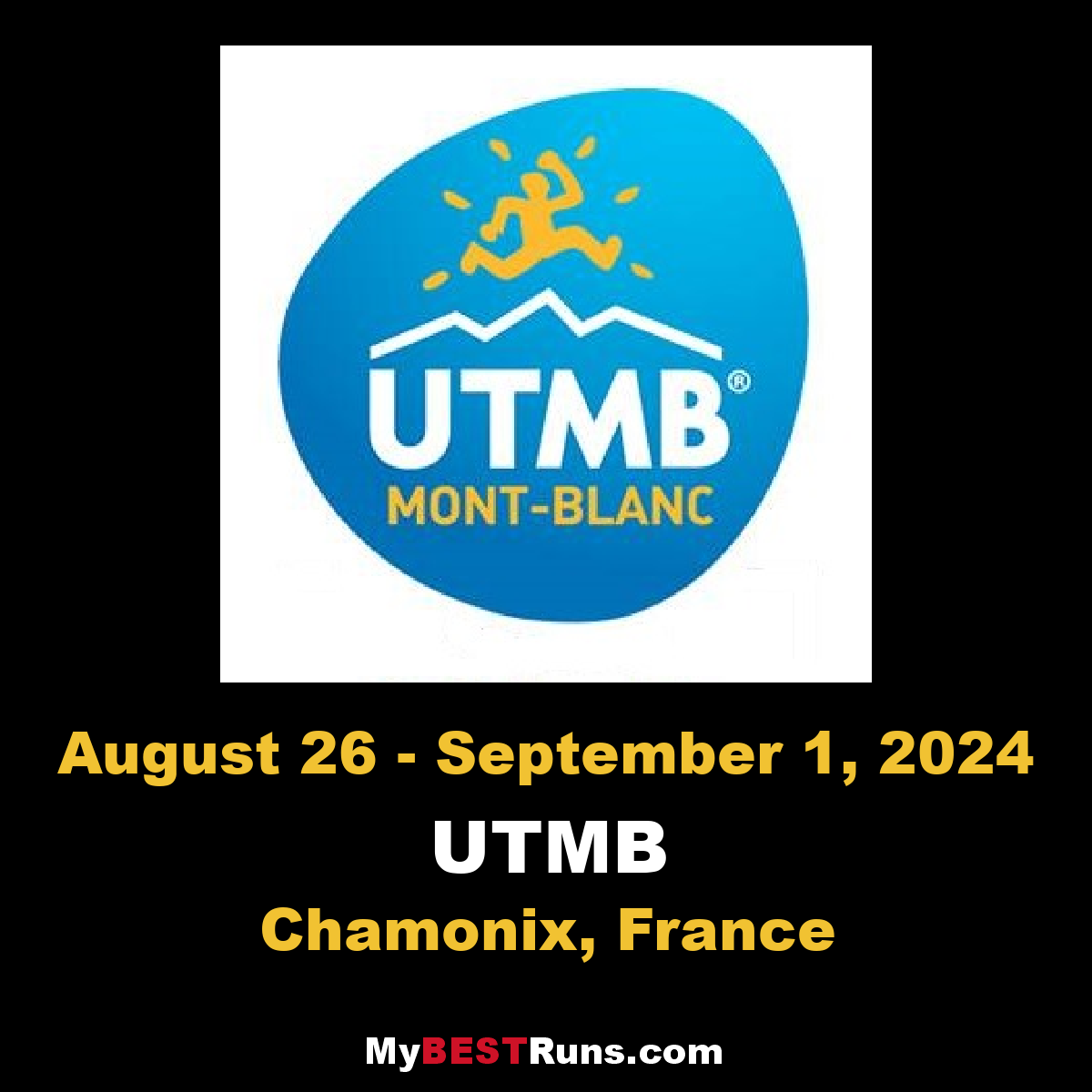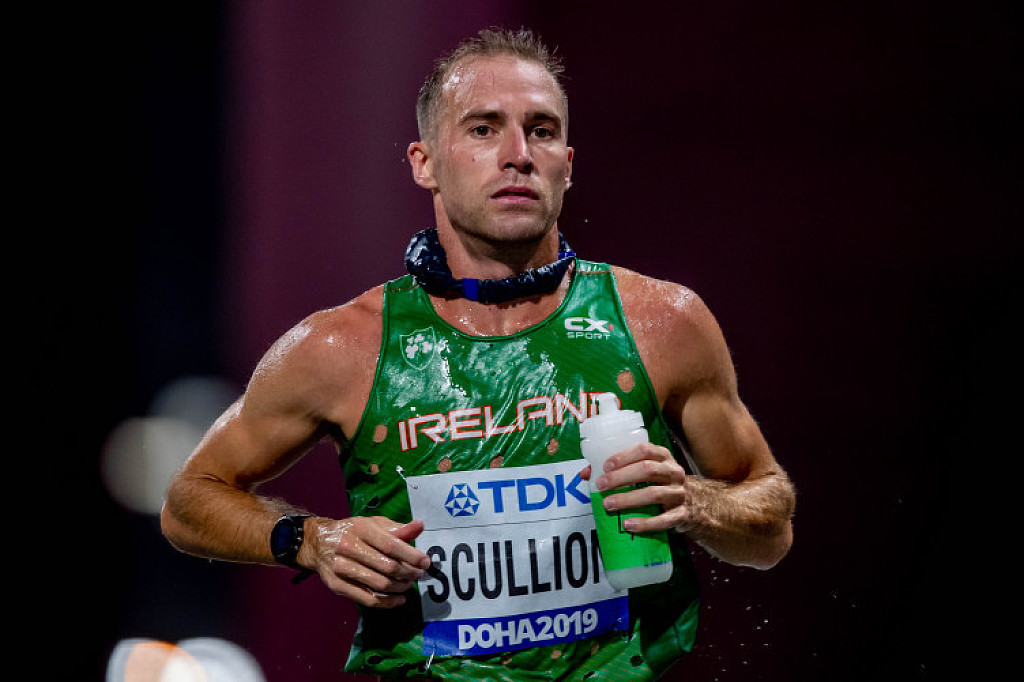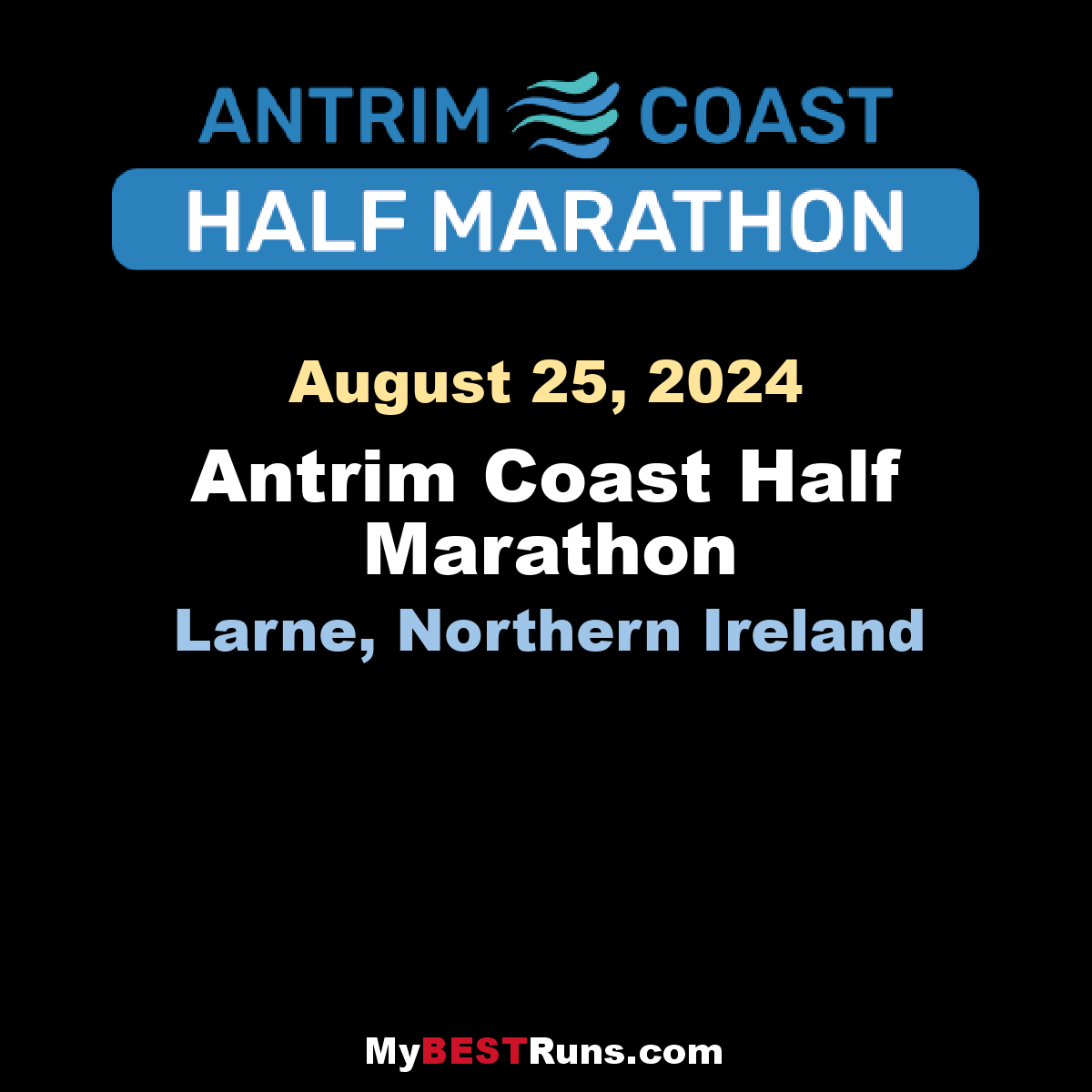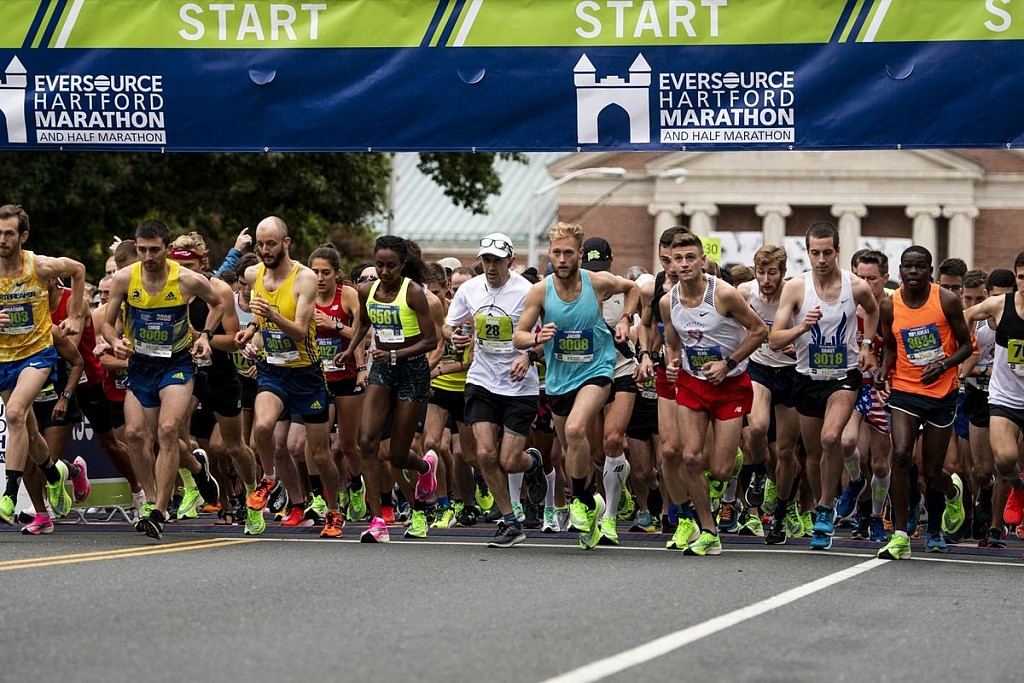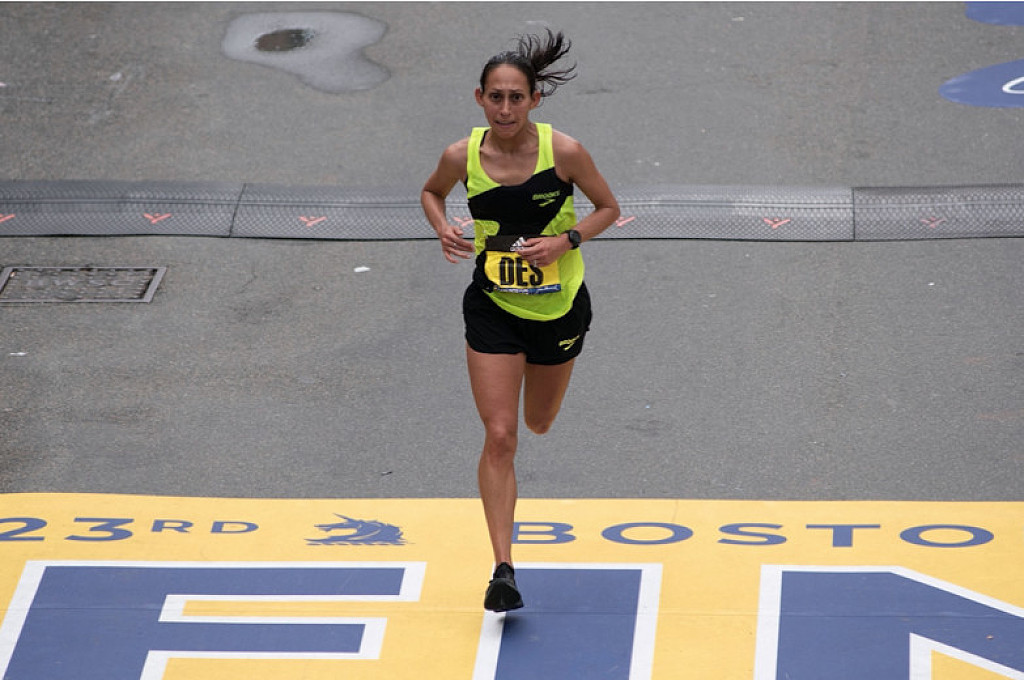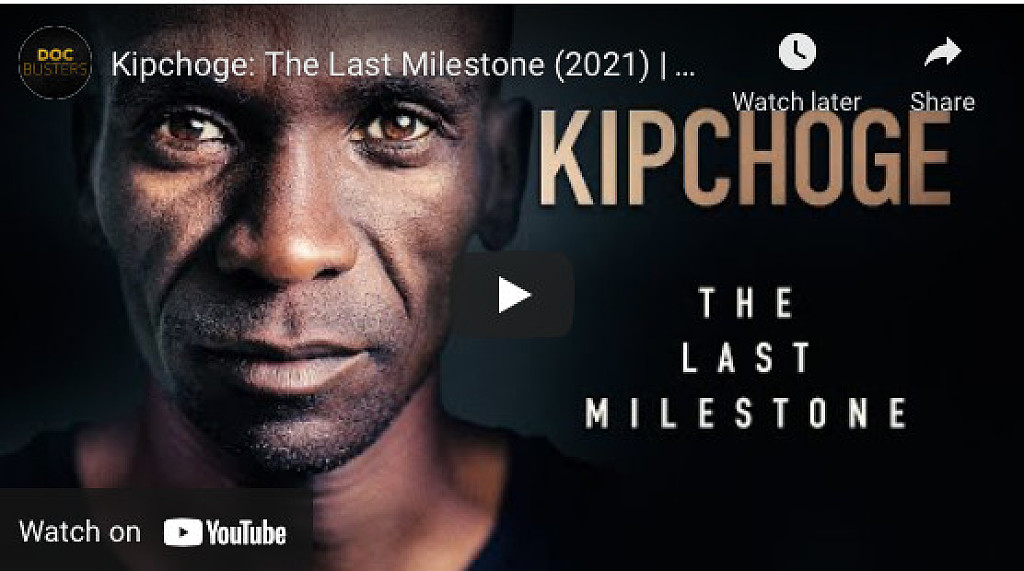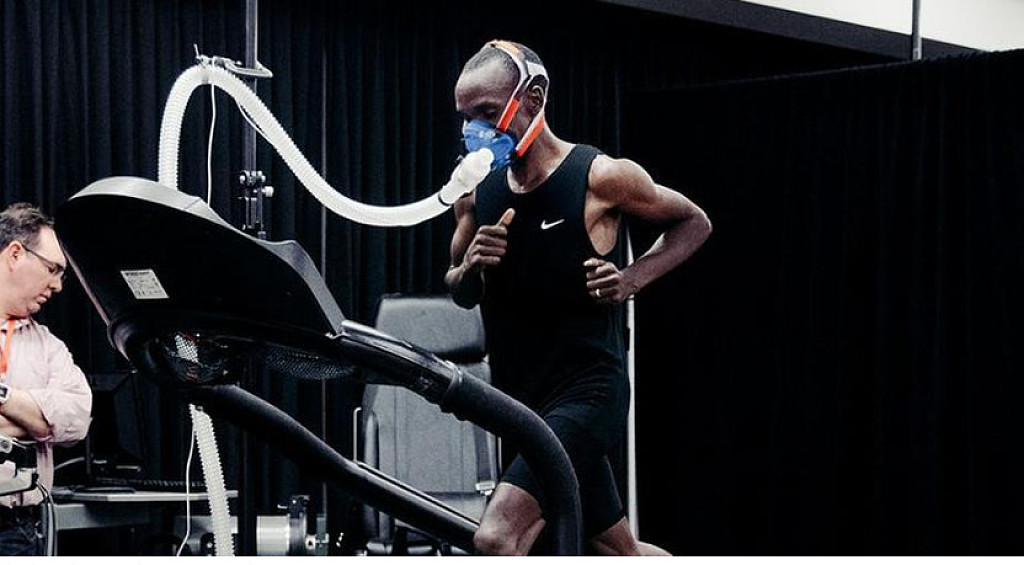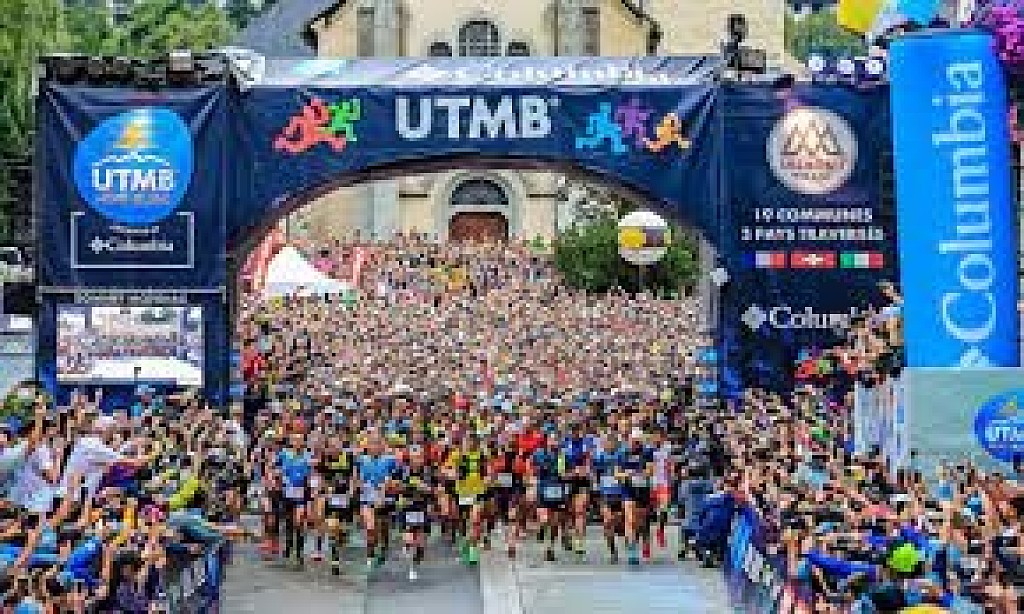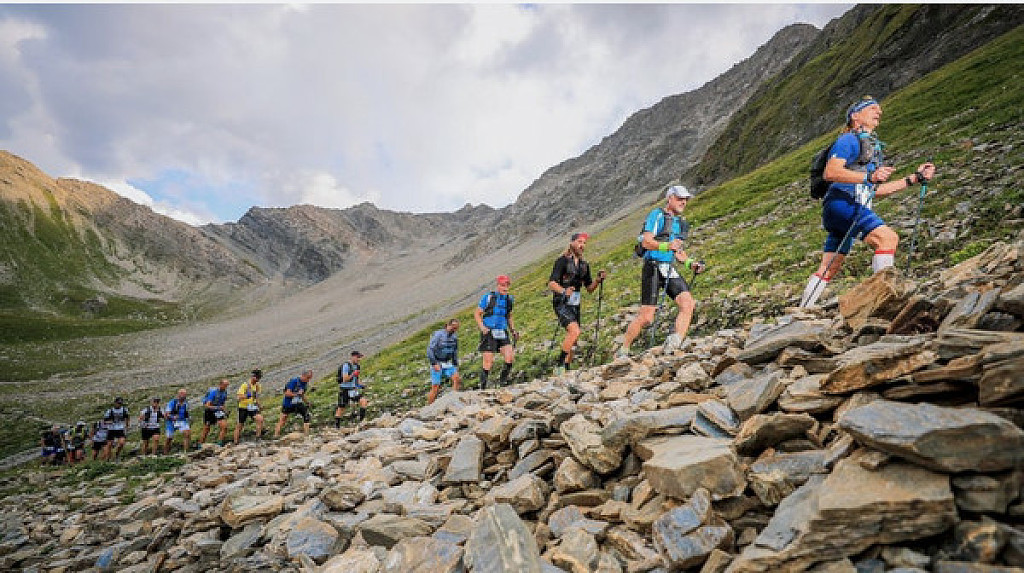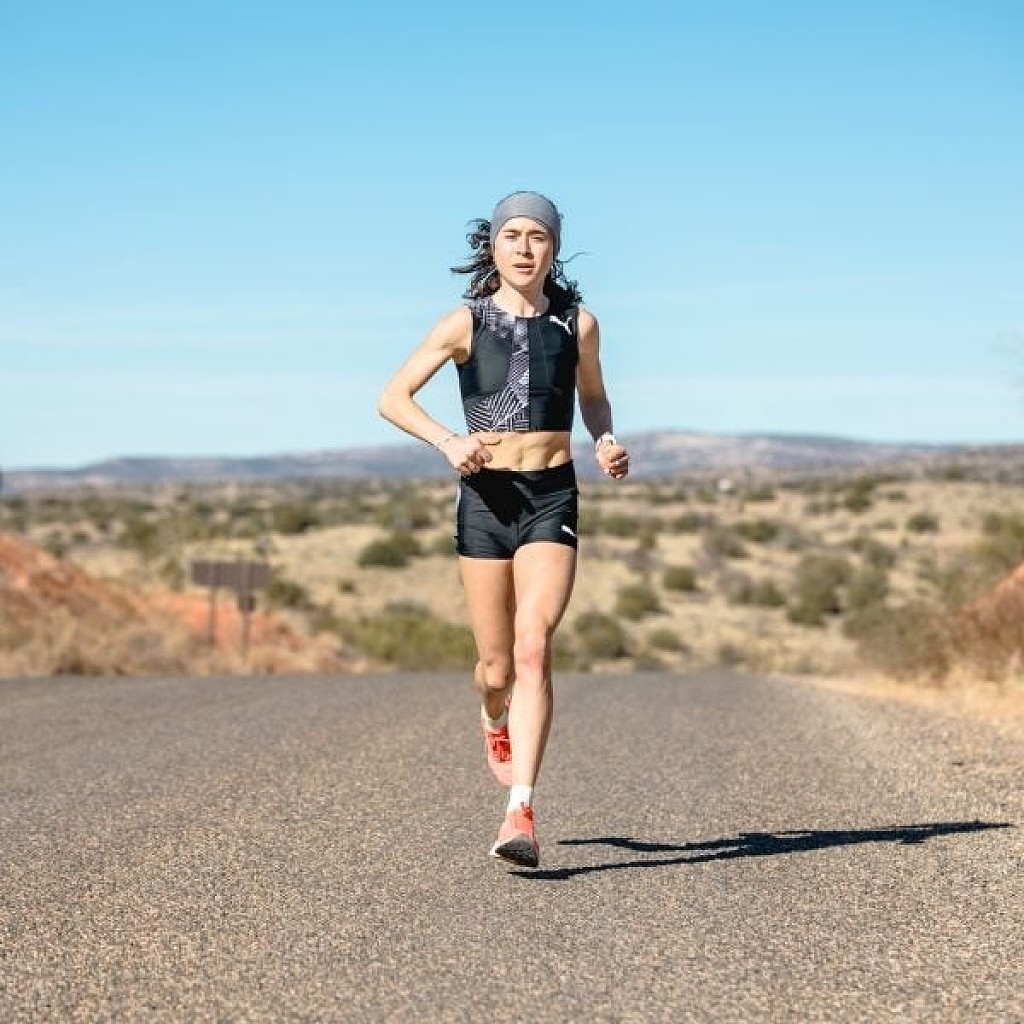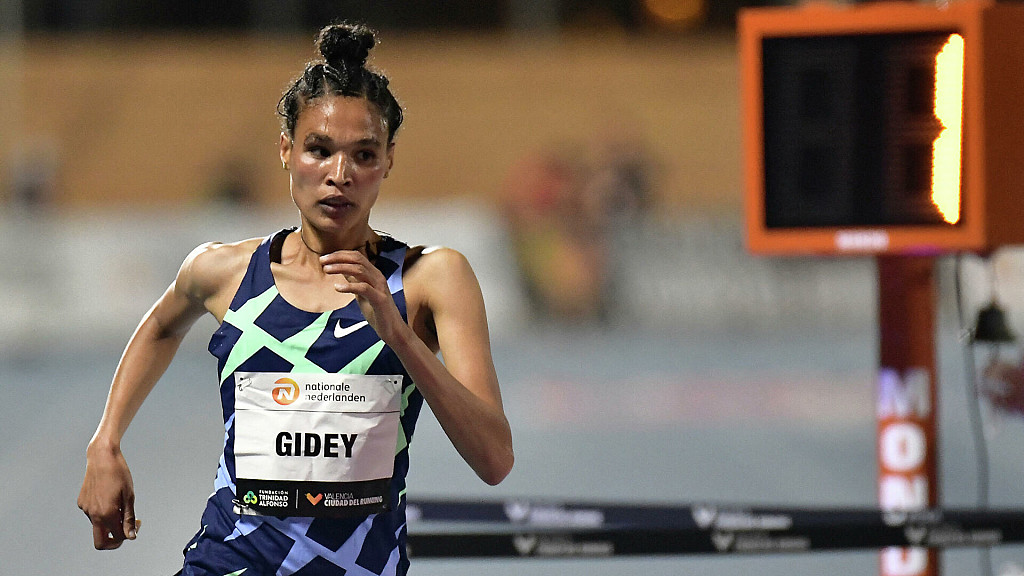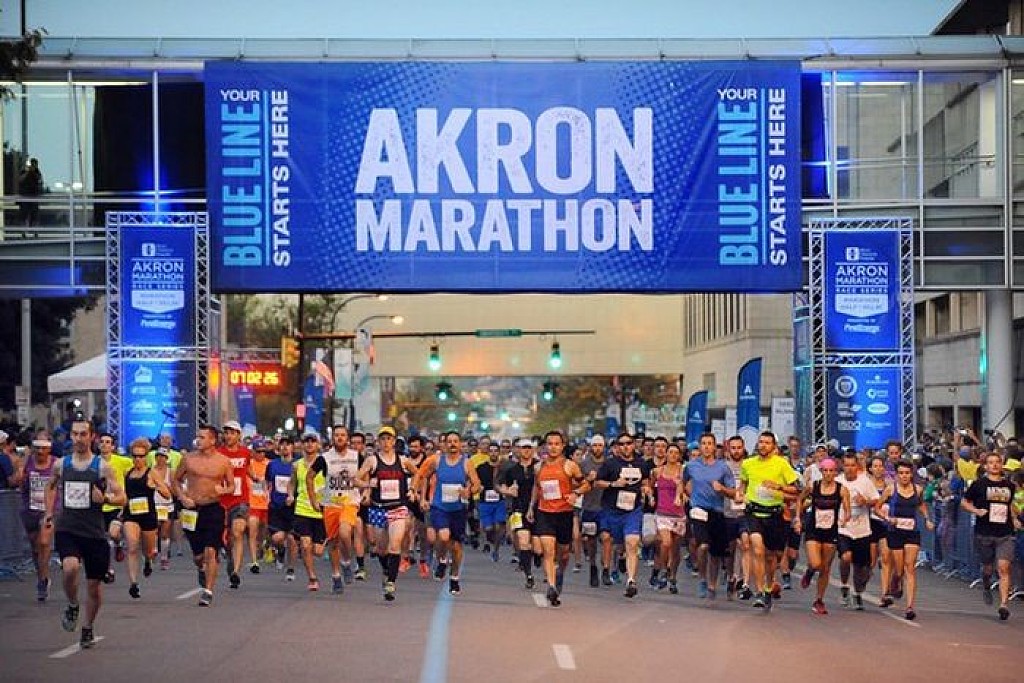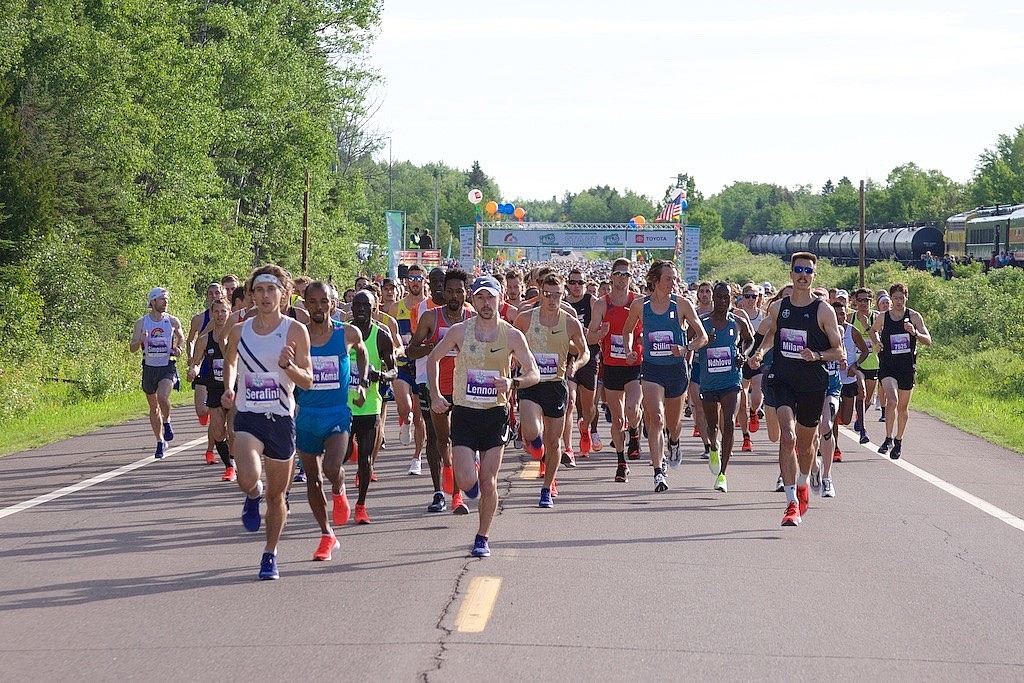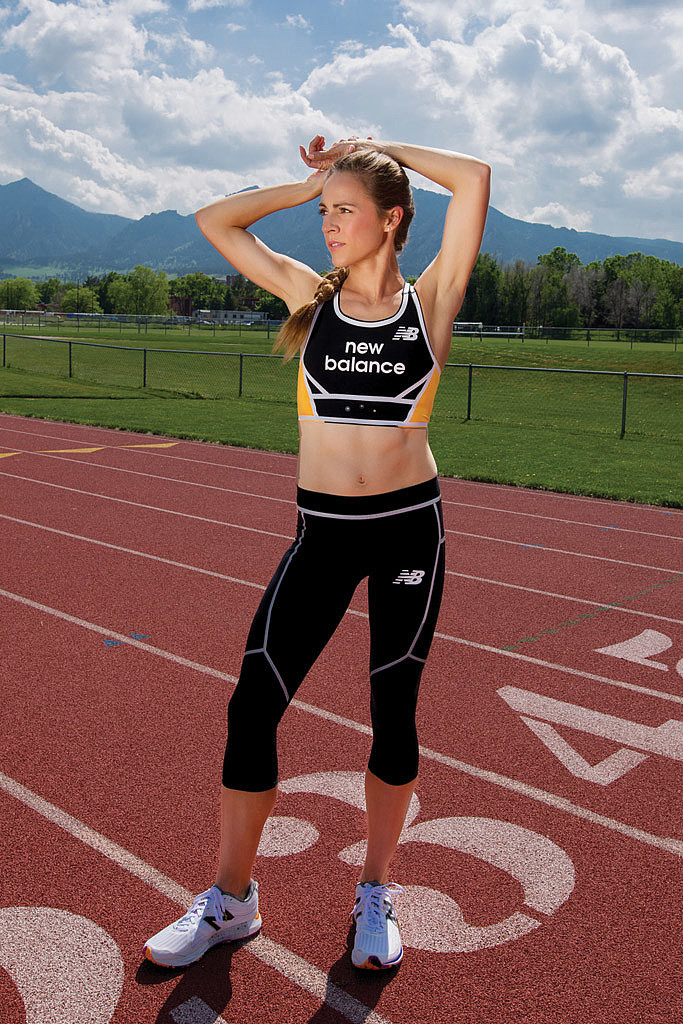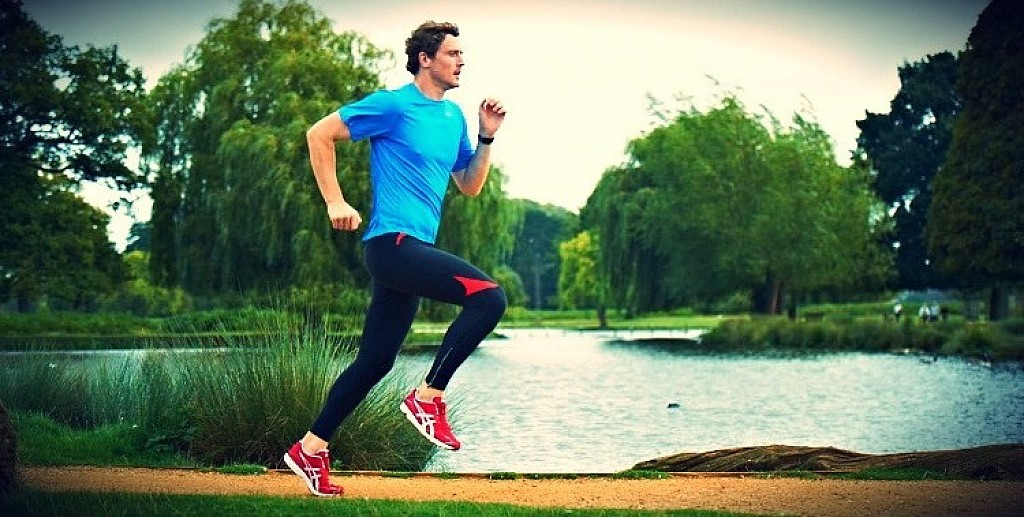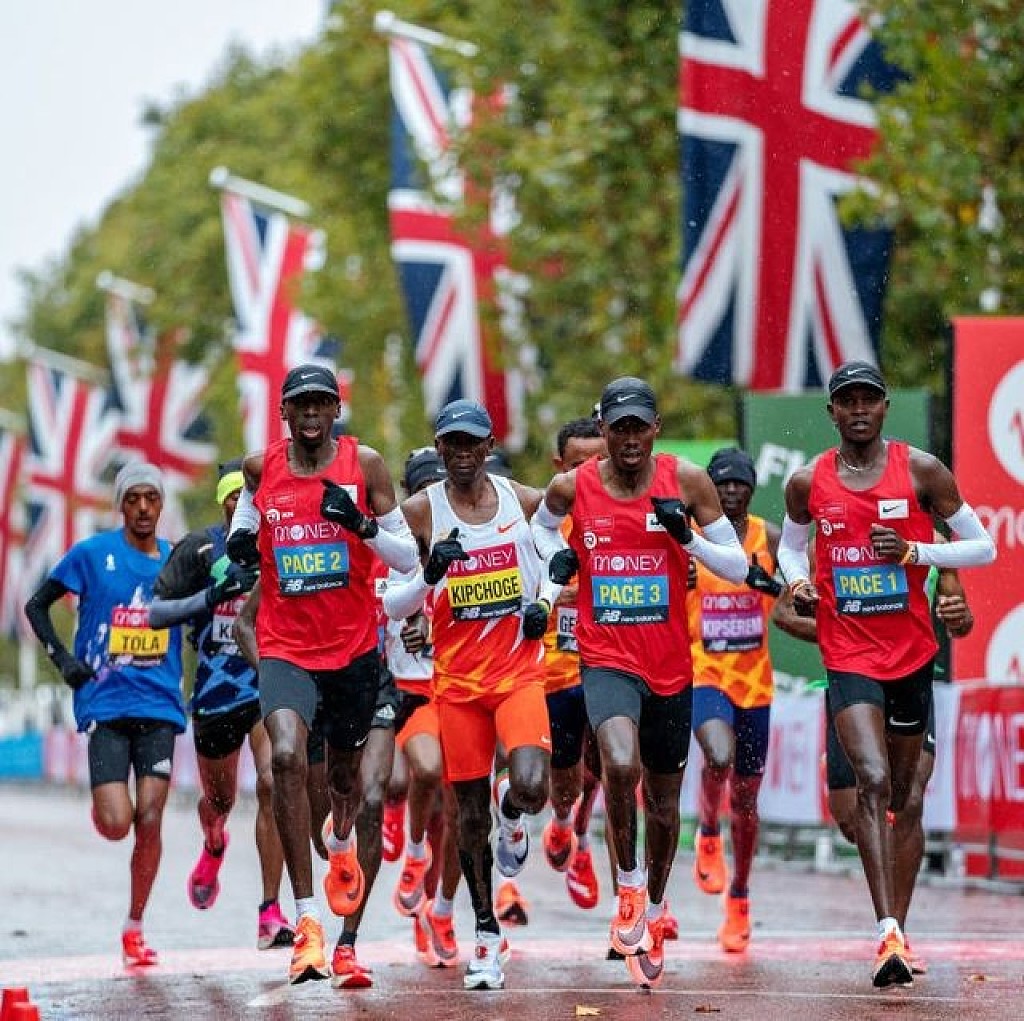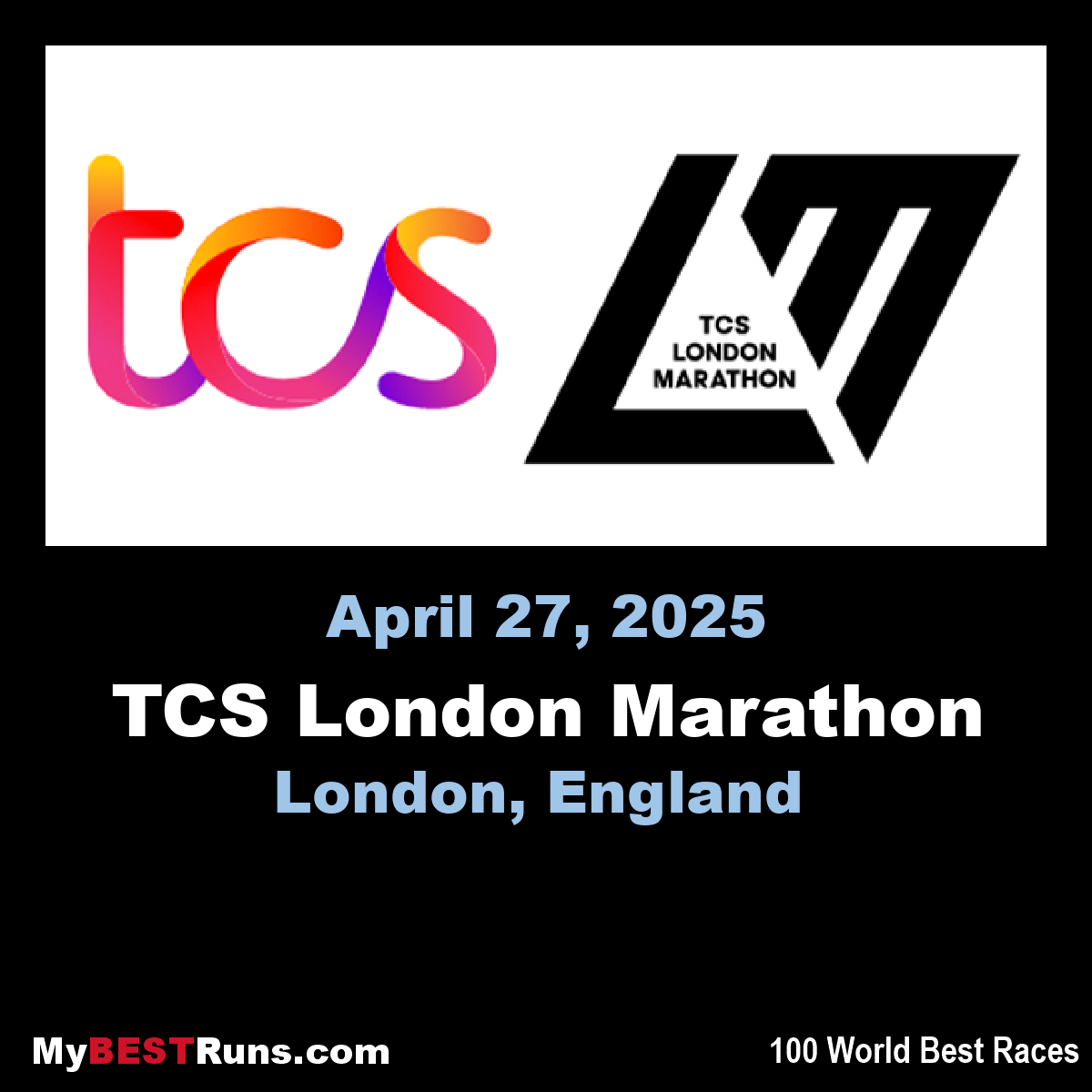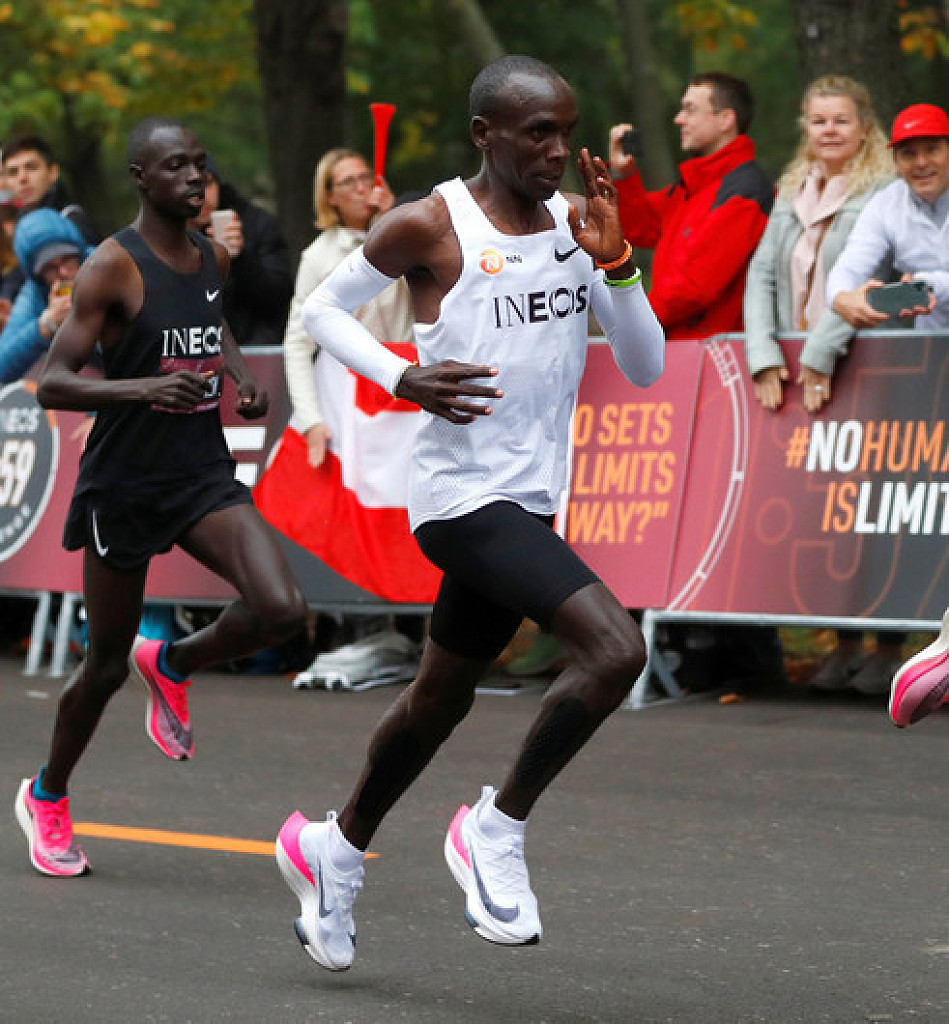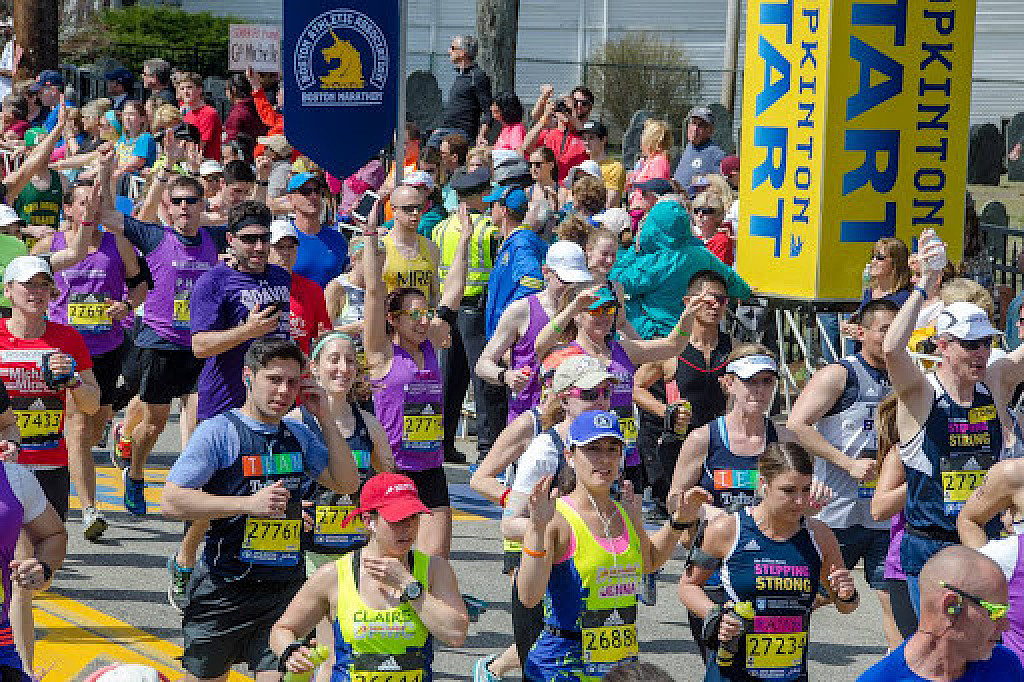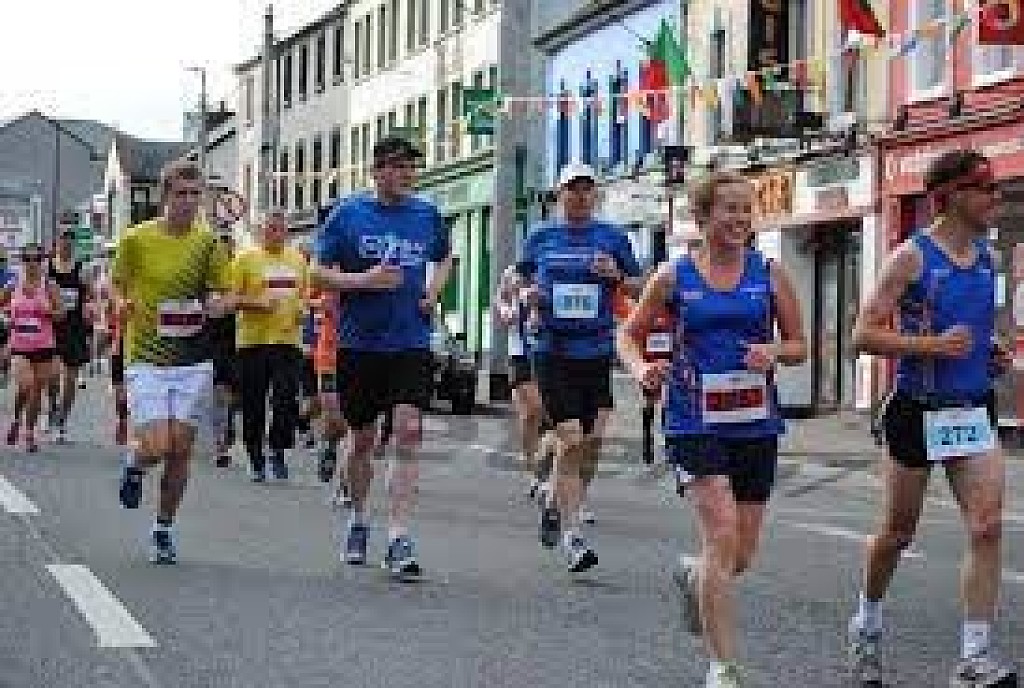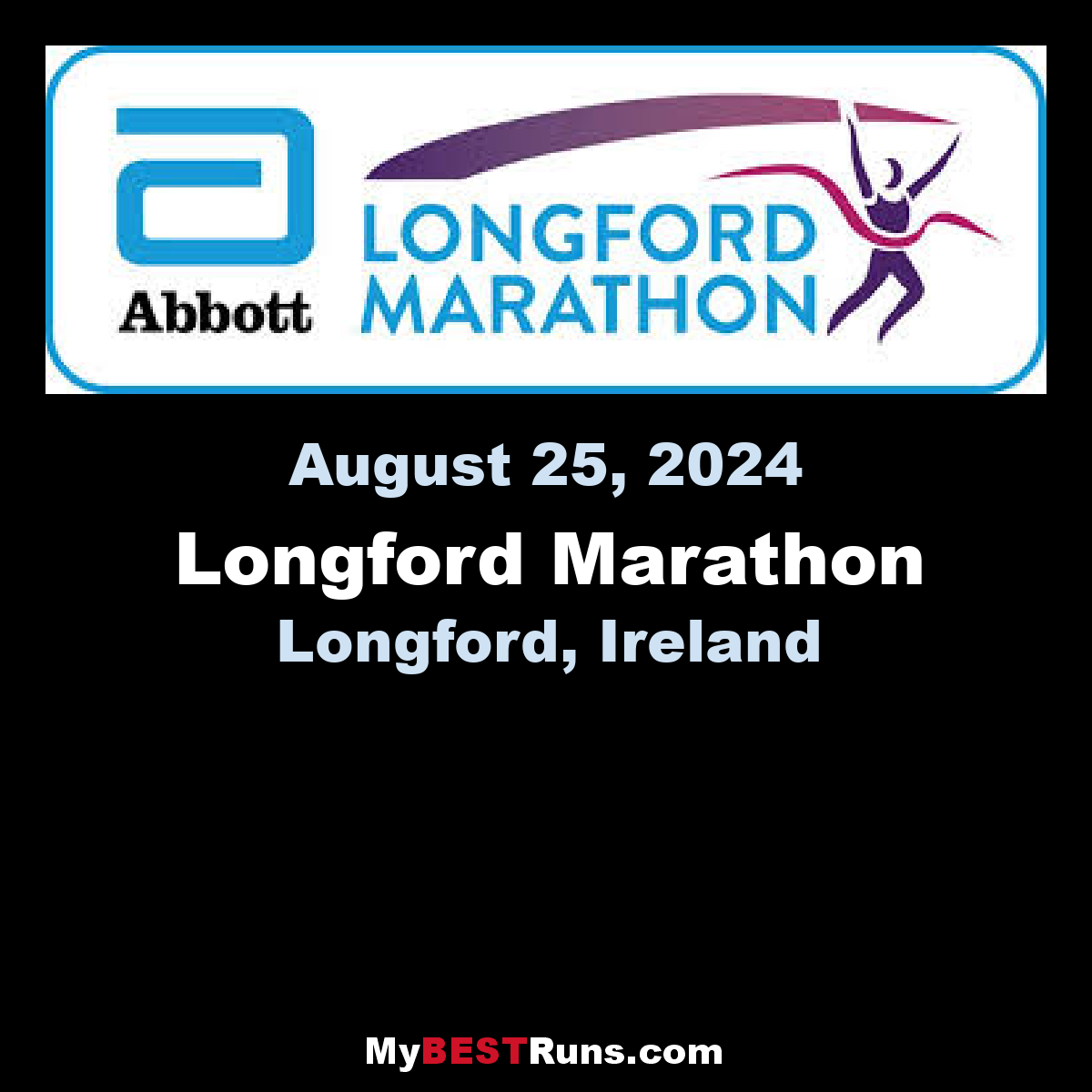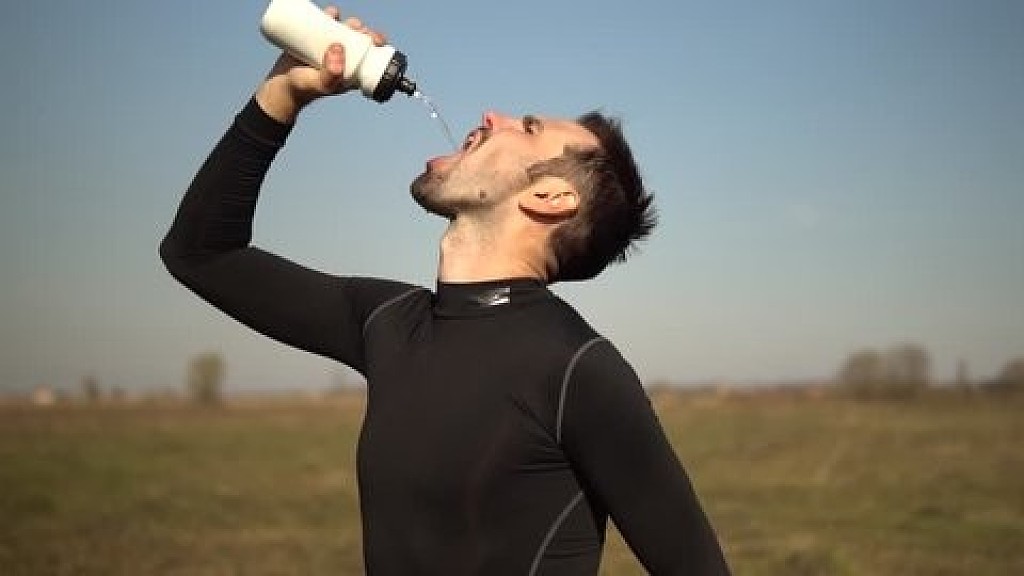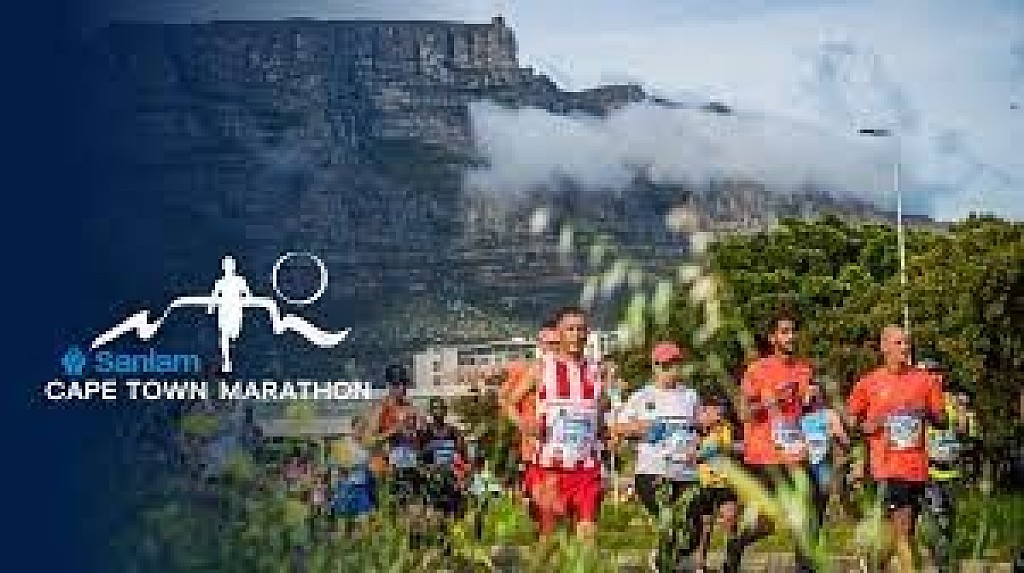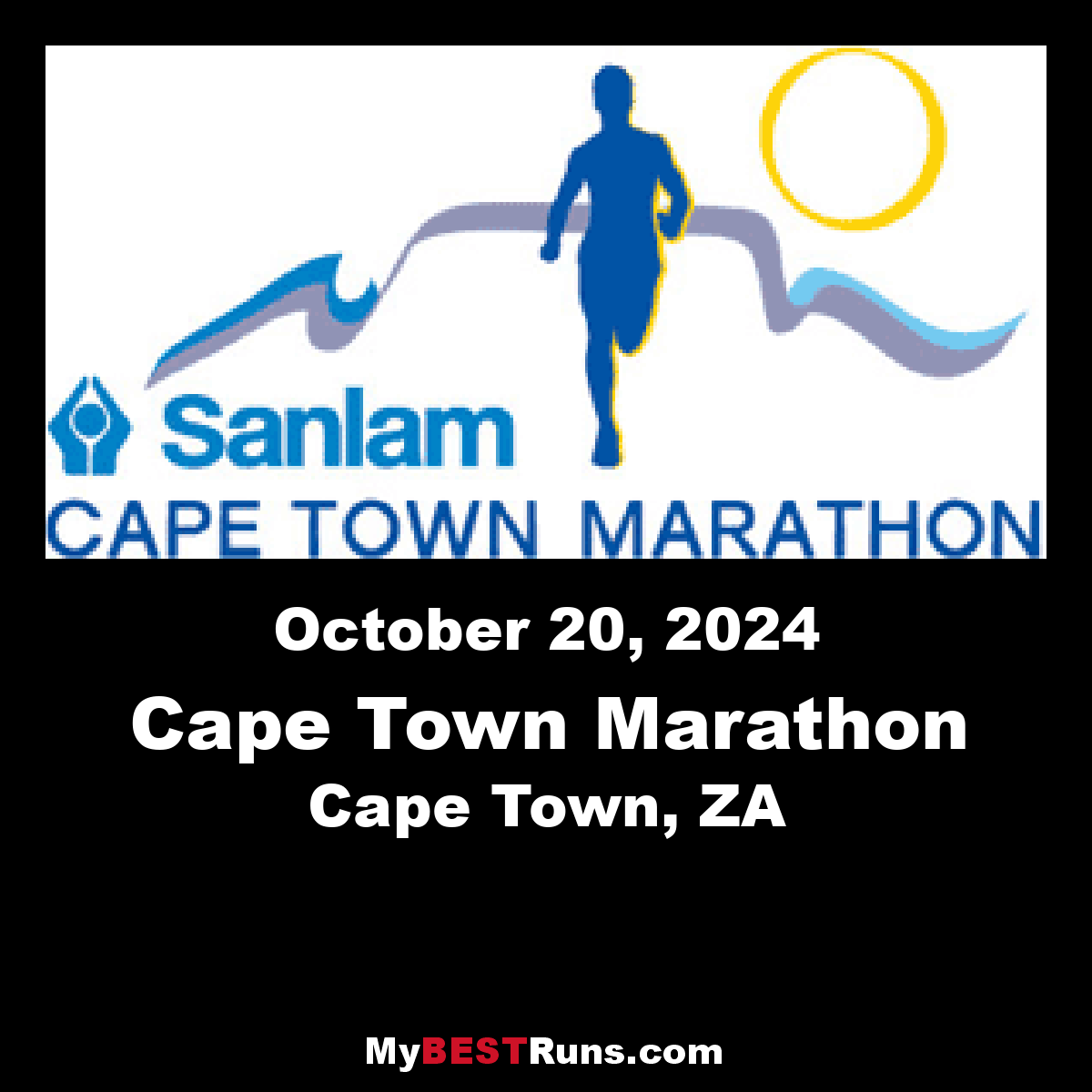Running News Daily
Running News Daily is edited by Bob Anderson in Mountain View, California USA and team in Thika Kenya, La Piedad Mexico, Bend Oregon, Chandler Arizona and Monforte da Beira Portugal. Send your news items to bob@mybestruns.com Advertising opportunities available. Over one million readers and growing. Train the Kenyan Way at KATA Running Retreat Kenya. (Kenyan Athletics Training Academy) in Thika Kenya. Opening in june 2024 KATA Running retreat Portugal. Learn more about Bob Anderson, MBR publisher and KATA director/owner, take a look at A Long Run the movie covering Bob's 50 race challenge.
Index to Daily Posts · Sign Up For Updates · Run The World Feed
What's the best alternative to running when you're injured?
Most runners will experience some form of injury at one point or another that prevents them from training, whether that be for a few days, weeks or even months. This, of course, can be very frustrating, and many will look for an alternative to running in order to maintain their fitness while they rehab their injury. There are plenty of options here to choose from, but which one is best? We’ve broken down some of the most common choices to help you pick the best option for you.
Cycling
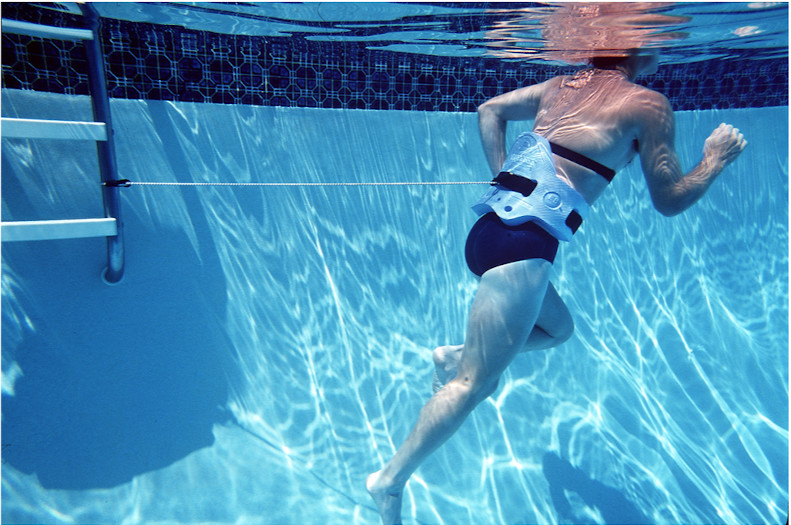

The great thing about cycling is that the fitness you gain on the bike can translate very well to running, and since it’s a non-weight-bearing activity, it’s a great option for injured runners. Cycling can also strengthen areas of the body where runners can sometimes be weak, like the quads, outer hips and glutes, which can help prevent other injuries in the future.
Cycling is also one of the most accessible options for injured runners, and those who aren’t comfortable out on the roads can opt to use a stationary bike inside if they have one. Most gyms have stationary bikes as well, so if you have a gym membership, now is a great time to use it. There are a few drawbacks to cycling, and depending on your injury, the bike could make it worse. There is also a learning curve when it comes to adapting your running workouts to the bike, and if you’re cycling indoors, the stationary bike can be pretty boring.
Elliptical
The elliptical is another good option for injured runners who have a gym membership, since not very many people have one in their homes. The best part about the elliptical is that it very closely mimics the motion of running, without the pounding associated with hitting the pavement. Like with the stationary bike, the drawback here is that it can be very monotonous. Some people prefer to use an assault bike, which can be less boring, but they aren’t as common in most gyms and so tend to be less accessible for the average runner.
Pool running
Pool running, or aqua jogging, allows you to run while removing the full effect of gravity. It’s a good option because it gives you the opportunity to work on your form and get your heart rate up with little to no impact on your joints. The biggest benefit to pool running is it is most similar to actual running in respect to your movement and biomechanics and you can replicate just about any type of running workout in the pool, from tempos to intervals to long runs. The downside, of course, is that it can be very boring, and you do need access to a pool in order to do it.
Swimming
Most people find swimming more interesting than pool running, and it can be a very good full-body workout. The downside is that unless you’re already a proficient swimmer, it can be difficult to get a true aerobic workout from swimming. For this reason, it is better as a supplement to other types of cross-training.
The Alter-G treadmill
The Alter-G treadmill involves running on a treadmill while your entire lower body is encompassed in a chamber that allows you to reduce the amount of gravity (or pressure) on your body to take you from 100 per cent bodyweight down to as little as 20 per cent body weight. It’s great because it allows you to get back to running faster, while still protecting yourself from impact. Of course, just like running on a regular treadmill, the Alter-G can get very boring, but in this case the boredom will cost extra. One of these machines can cost anywhere from $35,000-$75,000, which makes them prohibitively expensive for most people. Most people will instead use one at sports medicine or rehab clinic, but they can be difficult to locate and will still set you back about $35 to $50 per session.
So which should you choose?
The type of cross-training you choose will depend on a number of factors, including the type and severity of your injury, what you have available to you and of course, your own preference. When it comes to cost, accessibility and efficacy, most runners will find cycling, the elliptical and pool running to be their best bet, but our list doesn’t include every running alternative out there, so make sure you talk to a physiotherapist or sports medicine practitioner before beginning a cross-training regime, as they’ll be able to guide you to which option is best for your specific injury.
(09/04/2021) ⚡AMPCAS report on Shelby Houlihan explains reasons for four-year ban
In June, American 1,500m record-holder Shelby Houlihan was given a four-year ban by the Athletics Integrity Unit (AIU) after testing positive for the steroid nandrolone in December 2020. The Bowerman Track Club athlete appealed the ban and attempted to prove her innocence, since the athlete was hoping to race at the U.S. Olympic trials, but the Court of Arbitration for Sport (CAS) upheld her suspension. The AIU has now released the 44-page decision into her case, upholding the ban. Houlihan will not be able to compete until January, 2025.
To recap, the substance found in Houlihan’s sample was nandrolone, specifically 19-norandrosterone (19-NA), a steroid sometimes found in pork offal (pig organ meat). She claimed the positive result was due to having ingested pork offal in burrito from a food truck the night before she was tested, but the CAS did not accept her explanation and upheld the AIU’s charge. Houlihan also submitted a hair test and a lie detector test, both supporting her innocence, but these were found to be inadequate.
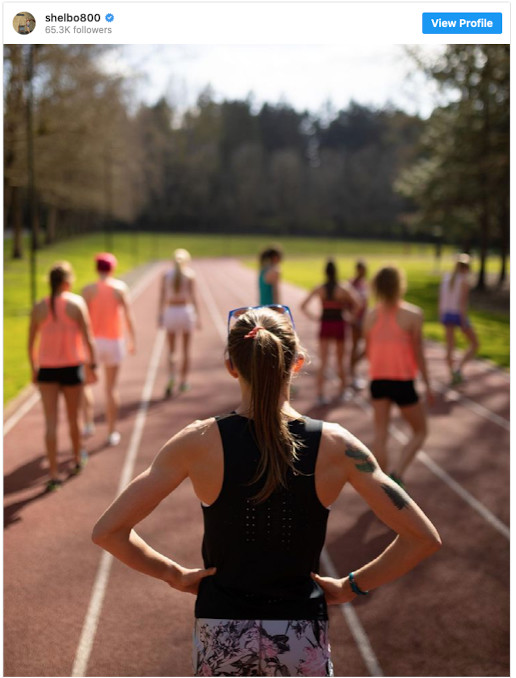
The decision included the following statement regarding the evidence against Houlihan:
“The Athlete’s explanation that the 19-NA in her sample resulted from her consumption of the meat of an uncastrated boar simply cannot be accepted. The explanation presupposes a cascade of factual and scientific improbabilities, which means that its composite probability is (very) close to zero.”
Specifically, the CAS panel found that though it was possible that Houlihan unwittingly ingested the meat of an uncastrated boar, for various reasons it was highly unlikely, and moreover, that even if she had, it would not account for the relatively high levels of nandrolone found in her samples. It found that the nandrolone found in her samples was consistent with that found in products commonly sold on the Internet for the purpose of enhancing athletic performance.
Several of Houlihan’s teammates defended her as a clean athlete, including Courtney Frerichs, who was with her when she ate the burrito (and who ate from the same food truck). Frerich’s sister, Lindsey Frerichs, who also ate with them that night, provided a witness statement, as did Bowerman coach Shalane Flanagan and athletes Matt Centrowitz (whom Houlihan was dating at the time) and Karissa Schweizer.
Despite their testimonies, the court found Houlihan to be guilty, saying she failed to provide a plausible explanation for the presence of nandrolone in her urine sample, and concluded that the anti-doping rule violation she was charged with must have been intentional.
The ban forced Houlihan to miss the U.S. Olympic trials and the Tokyo Olympics, where she was assumed to be a medal favourite, and it will prevent her from competing at the upcoming World Championships and the Paris 2024 Summer Games.
Editor’s update Sept. 3, 2021: According to a story on LetsRun.com, Houlihan plans to appeal her case to the Swiss Federal Tribunal.
(09/04/2021) ⚡AMPDuplantis, Hassan and Cherry break meeting records in Brussels
Meeting records are hard to come by in the Wanda Diamond League, given it’s the premier one-day meeting circuit in the world, but three such marks fell at the Memorial Van Damme in Brussels on Friday (3), thanks to Mondo Duplantis, Sifan Hassan and Michael Cherry.
When the men’s pole vault got underway, some 40 minutes before the first track event, the King Baudouin Stadium was still filling up. By the time the contest reached its climax three hours later, with all other disciplines having long finished, Duplantis commanded the attention of every single person inside the venue.
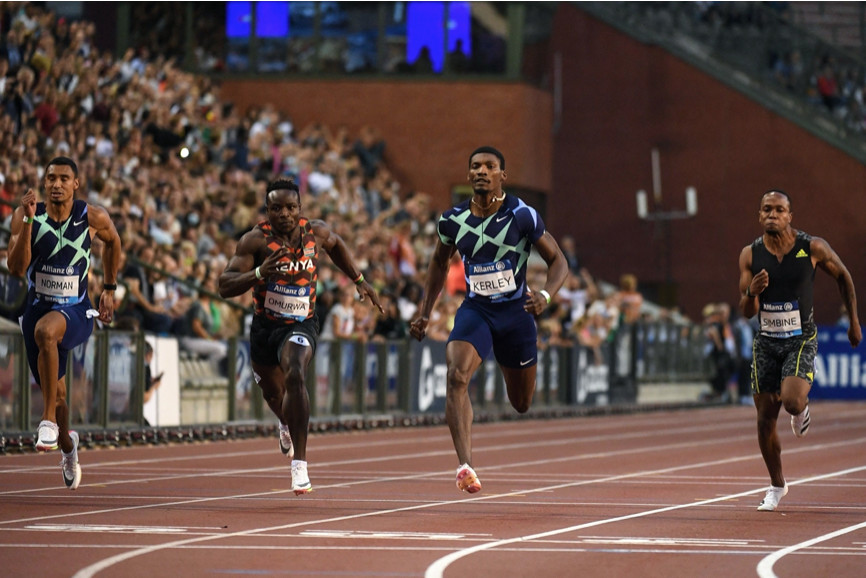
Though the world record once again evaded Duplantis tonight, the 28,000 spectators – the largest gathering for an athletics meeting since the start of the Covid-19 pandemic – were treated to a vaulting masterclass from a legend of the sport.
The Olympic champion opened at 5.50m, skipped 5.65m and then got over 5.75m and 5.85m on his first tries. Four other men were left in the competition at this point, but only two of them got over 5.85m; Olympic silver medallist Christopher Nilsen did it on his first try, while US compatriot KC Lightfoot scraped over on his third attempt.
The US duo couldn’t quite manage 5.91m tonight, though, but Duplantis once again went clear at the first time of asking to confirm his victory. The 21-year-old Swede then raised the bar to 6.05m in a bid to add some height to his own 6.00m meeting record from last year. He brought the bar down with his first two tries, but got over it on his third attempt.
The bar was then raised to the would-be world record height of 6.19m. Following a short wait while the technical officials ensured all was set for a record attempt, Duplantis took to the runway but wasn’t particularly close to clearing the bar on his first attempt. His second try was significantly closer, and his third attempt was also decent, but a world record wasn’t to be tonight.
Nevertheless, Duplantis wasn’t disappointed with his winning height of 6.05m. Only he, Sergey Bubka and two-time world champion Sam Kendricks have ever vaulted higher outdoors.
"I was really close to the world record," said Duplantis. "Everything was perfect, it was just up to me. I haven't had such an amazing atmosphere during a competition in a really long time."
Almost a month has passed since Sifan Hassan’s final race at the Olympic Games, where she won two gold medals and one bronze. Having raced just once during that time, the Dutch distance star arrived in Brussels well rested and ready to take on the mile.
She was the only athlete capable of sticking with the pacemakers as they led through the first 400m in 1:02.03. By the time the second pacemaker reached the 800m point in 2:04.97, with Hassan still in close attendance, the rest of the field was about 30 metres adrift.
With a lap to go, it was clear from the wavelight technology that an improvement on Hassan’s 4:12.33 world record was not on the cards in Brussels, though it never really seemed as though that was her ambition for the race anyway. By this stage, her lead had grown to 50 metres and she kicked for the final lap, going on to win by more than six seconds.
Her winning time of 4:14.74, the fifth-fastest performance in history, smashed Faith Kipyegon’s meeting record by two seconds. Ethiopia’s Axumawit Embaye was second in 4:21.08, closely followed by Australia’s Linden Hall, who broke her own Oceanian record with 4:21.38.
“Since the start of the pandemic, we haven’t had such a big crowd and I’m so happy to see them,” said Hassan. “We haven’t experienced it for nearly two years; it makes you feel special. It’s amazing, I really love it.”
In Tokyo last month, Michael Cherry was beaten to the 400m bronze medal by just 0.02 as Kirani James pipped the US sprinter at the line. Today’s race in Brussels was the first clash between the pair since the Olympic final, and Cherry ran like a man with a point to prove.
He went out hard, as did James, and by half way the duo had started to open up a clear gap on the likes of Isaac Makwala and Liemarvin Bonevacia.
James almost drew level with Cherry on the final bend, but Cherry had another gear left and forged ahead down the home straight, crossing the line in a lifetime best of 44.03 to take 0.03 off Michael Johnson’s meeting record from 1998.
James finished second in 44.51 with Makwala taking third place in 44.83.
The meeting record may have remained intact in the women’s high jump, but it proved to be one of the most enthralling contests of the night.
Olympic champion Mariya Lasitskene breezed through the first few heights and hadn’t recorded any failures up to and including 1.98m. World silver medallist Yaroslava Mahuchikh, who needed three attempts to clear 1.95m, also got over 1.98m on her first try, while Olympic silver medallist Nicola McDermott needed two jumps to clear it.
But McDermott was then the first to go clear at 2.00m, getting over on her first try, then Lasitskene did likewise. Mahuchikh succeeded on her second attempt at 2.00m, but then nailed 2.02m on her first attempt, taking the lead at a critical point of the competition.
Lasitskene missed once and then passed to 2.04m, while McDermott had two misses at 2.02m before registering a third failure at 2.04m. Neither of the trio managed to get over 2.04m, leaving Mahuchikh as the winner. It was just the second time in Diamond League history that three women have cleared 2.00m in the same competition.
With Lasitskene having won in Lausanne and McDermott winning in Paris, Mahuchikh’s triumph in Brussels means all three Olympic medallists have achieved Diamond League wins since the Tokyo Games.
Kerley makes Diamond League history
Olympic 100m silver medallist Fred Kerley won the short sprint, becoming the first man to win over 100m, 200m and 400m in the Wanda Diamond League.
World leader Trayvon Bromell blasted into an early lead and held his form well, but Kerley rallied and held off the additional challenge from Michael Norman in lane seven, dipping well on the line to take the victory in 9.94.
Bromell held on to take second place in 9.97, just 0.01 ahead of Michael Norman (9.98), completing a US sweep of the top three places.
Christine Mboma, also an Olympic silver medallist, won the women’s 200m. The Namibian teenager came through strongly in the closing stages to edge in front of Jamaica’s Shericka Jackson and world champion Dina Asher-Smith.
Mboma stopped the clock at 21.84 while Jackson took second place in 21.95. Asher-Smith recorded a season’s best of 22.04 in third, and US 100m champion Sha’Carri Richardson was a few strides adrift in fourth place (22.45).
Burundi’s Francine Niyonsaba produced a similarly well-timed finish to win the 5000m.
Once the last of the pacemakers dropped out at 2000m, Niyonsaba took up the running at the front of the pack with two-time world champion Hellen Obiri close behind. The Kenyan led for a brief stint too, passing through 3000m in a swift 8:42.57.
Niyonsaba, who finished fifth over 10,000m at the Tokyo Olympics, led again for most of the final kilometre, but Obiri kicked into the lead when the bell sounded for the final lap. She appeared to be on her way to victory, but Ethiopia’s Ejgayehu Taye came back strongly and briefly led with about 90 metres to go, then a rejuvenated Niyonsaba came back to take the lead in the closing stages, crossing the line in a national record of 14:25.34.
Taye took second place in 14:25.63 with Obiri claiming third in 14:26.23. World silver medallist Margaret Chelimo Kipkemboi set a PB of 14:27.12 in fourth as the top seven women finished inside 14:32 – unprecedented depth for a 5000m race.
Goule, Rotich and McSweyn take middle distances
Exactly one month since her eighth-place finish at the Tokyo Olympics, Jamaica’s Natoya Goule rebounded with a satisfying win over 800m, beating several women who finished ahead of her at the Games.
With the pacemaker passing through the first lap in 56.99, the field was still relatively tightly bunched with 300 metres to go. Goule held the lead, but Olympic silver medallist Keely Hodgkinson moved on to the Jamaican’s shoulder on the final bend and looked poised to strike.
Goule had saved something for the finish, though, and she held off the challenge from the British teenager, winning in 1:58.09. Hodgkinson was second in 1:58.16 from compatriot Jemma Reekie (1:58.77).
Stewart McSweyn led an Australian 1-2 in the men’s 1500m. The Oceanian record-holder overtook a fading Mohamed Katir on the home straight to win in 3:33.20 with compatriot Oliver Hoare taking second place (3:33.79). Poland’s Michal Rozmys was third in 3:33.96.
Olympic silver medallist Ferguson Cheruiyot Rotich was a comfortable winner of the non-scoring men’s 800m, crossing the line in 1:43.81 to win by more than a second from Belgium’s Eliott Crestan (1:45.24).
Hurdles victories for Dos Santos and Visser
Racing for the first time since taking Olympic bronze and moving to third on the world all-time list, Brazil’s Alison dos Santos won the men’s 400m hurdles with his trademark strong finish.
Kyron McMaster of the British Virgin Islands led for most of the race, making up the stagger on Dos Santos, drawn one lane outside him, by the half-way point. Dos Santos stuck with McMaster around the final bend and drew level with Jamaica’s Jaheel Hyde. McMaster hit the penultimate hurdle, throwing off his rhythm slightly as he went into the final barrier. Dos Santos, meanwhile, came off the 10th hurdle much better and went on to win in 48.23.
McMaster finished second in 48.31 and Yasmani Copello took third place in 48.45.
The closest finish of the day came in the women’s 100m hurdles, in which Nadine Visser won by just eight thousandths of a second from Tobi Amusan, both timed at 12.69 (0.7m/s). Olympic bronze medallist Megan Tapper was third in 12.77.
Elsewhere, Steffin McCarter saved his best for last to win the men’s long jump. His sixth-round leap of 7.99m was not only the best in the ‘final three’ contest; it was also the top mark of the entire competition. Ruswahl Samaai was second thanks to his last-round leap of 7.89m, having jumped 7.95m earlier in the competition.
(09/04/2021) ⚡AMPHow much time do carbon shoes really take off?
Professor of biomechanics at BYU gives his perspective on the benefits of carbon-plated shoes.
Since Nike launched the original carbon-plated Nike Vaporfly, there has been a transition to the type of shoe runners are wearing. When the Vaporfly was released, it changed the game with a non-traditional look. Instead of being as lightweight as possible, the brands designed a bulkier shoe with lightweight foam plus a carbon plate to provide stiffness. When Eliud Kipchoge ran under 2:01 for Nike’s Breaking2 project, the carbon craze began.
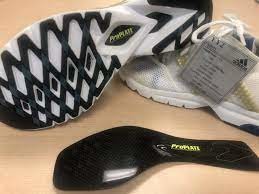
Many runners saw the way the shoe benefited the world’s best marathoner and thought, “I wonder how fast a carbon shoe would make me?”
Easton Allred, a cross-country runner with Brigham Young University, discussed the recent development of carbon shoes with professor of biomechanics Dr. Iain Hunter, who studies how people can run faster by the way they move, and the effect of footwear on their athletic performance. The two discuss whether carbon is beneficial and how much time it could take off your 5 km.
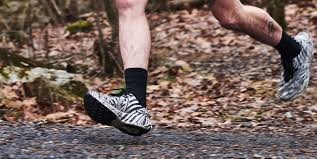
Dr. Hunter notes that half the hype around carbon-plated shoes is psychological, and most runners won’t see a benefit from the plate itself. “A common misconception is that it acts as a spring – the plate is actually in the shoe to hold the foam together,” Hunter said. Each carbon shoe is very individualized and based on many variables. For example, if you are a heel striker, the plate/foam will not generate as much responsiveness for a forefoot striker. “I am convinced that the shoes help with performance, but I doubt it’s as big an effect as a lot of people think,” Hunter adds.
Allred asks, “How much of a difference do you think it would make in a 5 K race?”
“Maybe two or three seconds per kilometre,” Hunter states. “A couple of seconds could be very meaningful to some runners, but there isn’t more than that.” The technology of racing flats before carbon shoes wasn’t far behind, and runners were still breaking world records in flats.
“We have done studies that there are extreme benefits to recovery with carbon shoes, since the foam is softer than racing flats,” Hunter states
With the book out on the benefits of carbon shoes, all brands have adapted to the same technology. The only difference between models would be the softness of the foam and the stiffness of the plate.
(09/03/2021) ⚡AMPby Marley Dickinson
Gelete Burka and Fabienne Schlumpf will head the women’s field of the Vienna City Marathon
With a personal best of 2:20:45 Ethiopia’s Gelete Burka will be the fastest woman ever on a start list for Austria’s most prestigious and biggest road running event.
The Vienna City Marathon will see its 38th edition next week and organizers currently have registered a total of around 25,000 athletes. While this includes races at shorter distances there will be 6,000 marathon runners. Some of the events will take place on the Saturday.
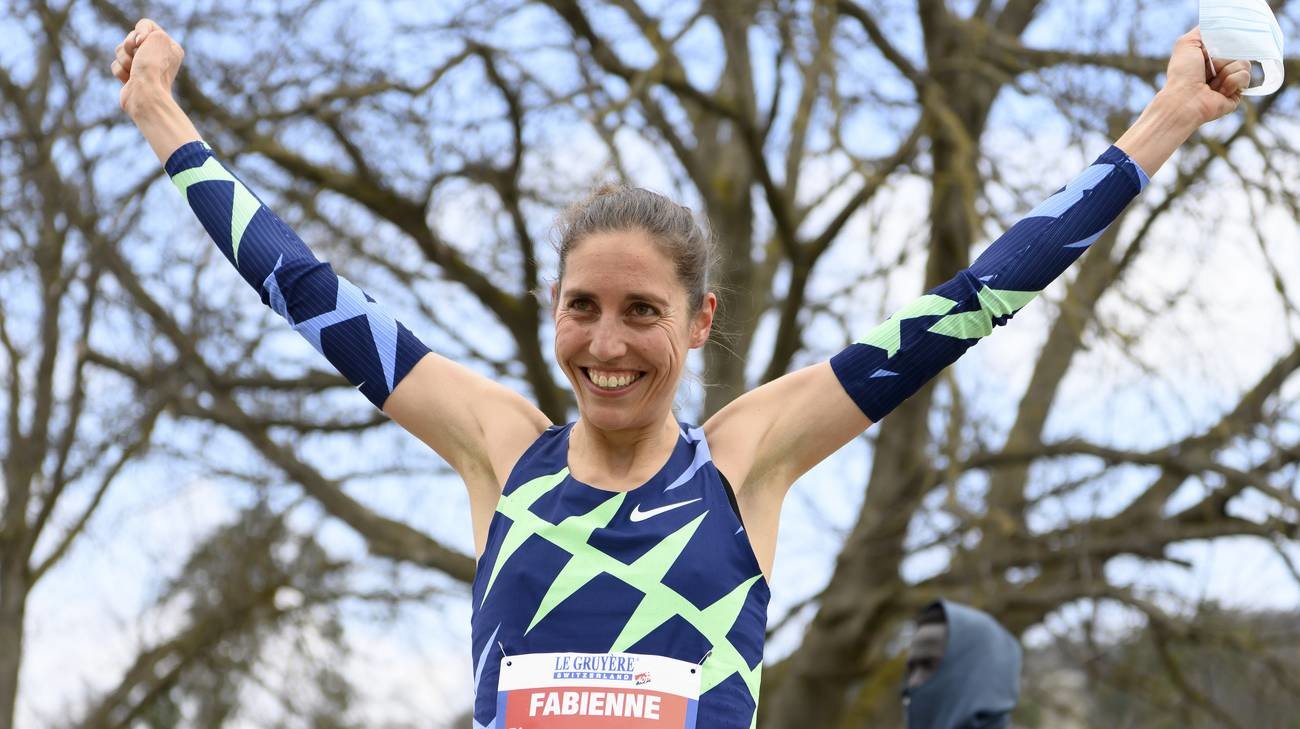
The Vienna City Marathon is a World Athletics Marathon Label Road Race and will be the first major international marathon featuring a strong elite field and a mass race since the start of the Corona pandemic. After providing a hygiene concept organizers received the final go ahead from the city a couple of days ago.
Gelete Burka has been a very successful track and cross country runner. The Ethiopian took the World Cross Country Championships’ gold medal in 2006 (short course) and won the 1,500 m final at the World Indoor Championships two years later. In 2015 she was second in the 10,000 m final of the World Championships. By that time she already had a few attempts at the marathon distance. However despite a personal best of 2:26:03 from 2014 in Houston she did not manage to transform her great potential to the classic distance. It was then in Dubai 2018 when she returned to the marathon after a four-year break and achieved a breakthrough performance: Gelete Burka improved to 2:20:45 in the Emirate.
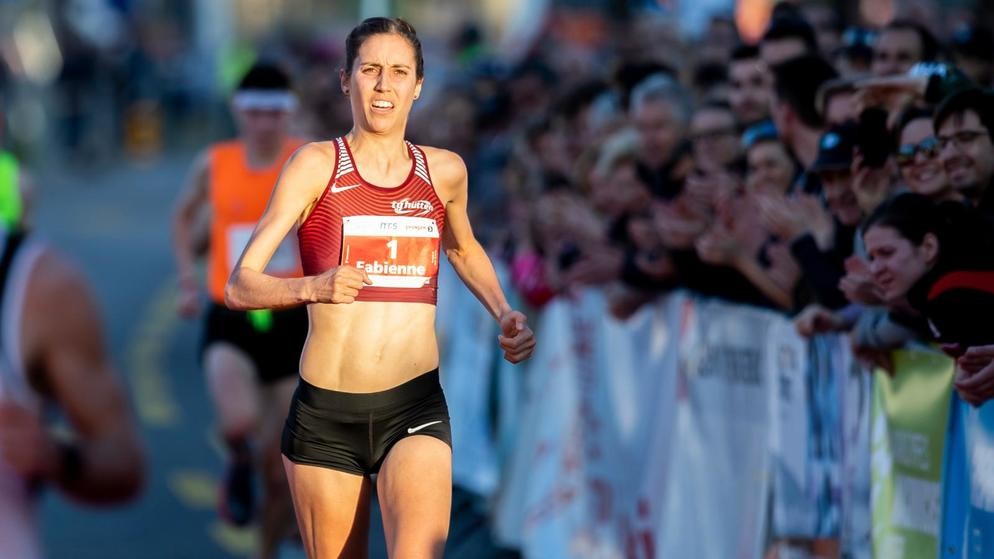
There was more success in the marathon for Gelete Burka after her sixth place in Dubai: In May that year she won the Ottawa race in 2:22:17, then she took the Paris Marathon in 2019 with 2:22:47. A third place in the Chicago Marathon (2:20:55) followed later in the year. The Vienna City Marathon will now be the first marathon for the 35 year-old since 2019.
In contrast Fabienne Schlumpf is still a newcomer to the marathon. The former steeplechaser, who took the silver medal at the European Championships in 2018, first ran a series of national records in the half marathon. Last autumn she achieved a very respectable 13th place in the World Half Marathon Championships with an improvement to 68:38. She then took the Dresden Half Marathon this March with 68:27. Easily breaking the Olympic qualifying standard she clocked 2:26:14 in her marathon debut in Bern in April when she took second place. Fabienne Schlumpf then ran her second marathon at the Olympics in the extremely tough conditions in Sapporo. She achieved a superb 12th place in 2:31:36 which suggests that there is much more to come from the 30 year-old in the marathon. “I had already planned to run Vienna after the Olympics for a long time,” said Fabienne Schlumpf.
Gelete Burka and Fabienne Schlumpf will face a group of strong Kenyan contenders at the Vienna City Marathon. Risper Chebet is the second fastest on the start list with a personal best of 2:23:45. She achieved this time when she was fifth in Milan earlier this year, improving her PB by almost four minutes. Returning to the Vienna City Marathon will be Rebecca Kangogo and Celestine Chepchirchir. Kangogo ran her personal record of 2:24:25 here when she was runner-up in 2017 while Chepchirchir was third in 2018. She has a personal best of 2:24:48 from Seoul in 2019.
(09/03/2021) ⚡AMPby AIMS
Vienna City Marathon
More than 41,000 runners from over 110 nations take part in the Vienna City Marathon, cheered on by hundreds of thousands of spectators. From the start at UN City to the magnificent finish on the Heldenplatz, the excitement will never miss a beat. In recent years the Vienna City Marathon has succeeded in creating a unique position as a marathon...
more...Craft Sportswear Becomes Official Athletic Footwear Partner of the Rock ‘n’ Roll Running Series
The Rock ‘n’ Roll® Running Series and Craft Sportswear are excited to announce a new partnership making Craft Sportswear the Official Athletic Footwear Partner for the Rock ‘n’ Roll Running Series.
This partnership launches the co-branded Craft x Rock ‘n’ Roll Running Series shoe in three limited-edition colorways – black, red and yellow. This exclusive mid-distance running, and training shoe will be available on the official Rock ‘n’ Roll Running Series merchandise e-commerce store at www.runrocknrollstore.com and at all 2021 Rock ‘n’ Roll Running Series events.

“We are thrilled to have Craft Sportswear join us as the Official Athletic Footwear Partner of the Rock ‘n’ Roll Running Series,” said Matt Wikstrom, Senior Vice President, Global Partnerships for The IRONMAN Group. “The launch of this new co-branded running shoe is a great opportunity for our runners to experience the high-performance and quality of Craft with the spirit and energy of the Rock ‘n’ Roll Running Series.”
Craft is a high-quality and high-performance Swedish brand that provides world champions and everyday heroes an endurance focused footwear and apparel design for any distance and any terrain.

As part of the X-series, the Craft x Rock ‘n’ Roll Running Series collaboration features a multi-purpose running shoe that truly follows the natural contours of the foot.
This Craft design features a lightweight and breathable engineered mesh upper and an ARC Foam midsole with launch pad at the forefoot and landing pad at the heel that provides excellent cushioning and response.
In addition, innovative X cables run under the midfoot and behind the heel to secure and stabilize the foot — offering a perfect balance between support and flexibility for a natural stride. “The running community here in the U.S. has exploded over the past two years and we are thrilled to be aligned with the Rock ‘n’ Roll Running Series one of the premier race organizations here in the US.” said Eric Schenker, CEO of Craft NA.
“Through this partnership we look forward to providing Rock ‘n’ Roll and their participants innovative products and programs that will help elevate their racer’s experience and meet all their endurance needs.” To kick off the partnership, the Humana Rock ‘n’ Roll® Virtual Running Club is launching three Craft inspired virtual challenges designed to get runners to Lace Up, Step Up and Power Up.
Offering three distances, these challenges are the perfect way to try out the new Craft x Rock ‘n’ Roll Running Series running shoe and learn more about each limited-edition colorway. By participating in any, or all, of these multi-level challenges participants can earn points towards discounts at the online or in-person Rock ‘n’ Roll merchandise stores and be entered to win a $500 Craft gift card. Visit www.runrocknrollvr.com to sign up and complete the challenges between Tuesday, August 31 and Friday September 10, 2021.
(09/03/2021) ⚡AMPby Running USA
Rock N Roll Arizona Marathon
The Marathon and Half-Marathon courses or the new Mini- Marathon or Bike Tour courses take you through the three host cities of Phoenix, Scottsdale and Tempe! The Marathon and Bike Tour start at CityScape in downtown Phoenix, while the Half-Marathon and Mini-Marathon are loop courses launching from downtown Tempe. All the courses end in Tempe at ASU’s Sun Devil and...
more...Boston Marathon runners must be vaccinated or have a negative COVID-19 test
Runners in this year's Boston Marathon will need to provide proof of vaccination or produce a negative COVID-19 test in order to participate, race organisers said on Thursday.
The Boston Athletic Association (B.A.A.) said in a statement that all participants will be required to take either step prior to bib number pick-up ahead of the Oct. 11 race.
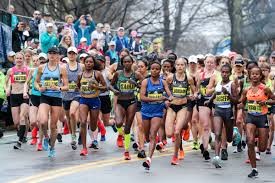
The B.A.A. said it was working with a third-party testing provider to conduct tests no earlier than 72 hours before participant start times.
Anyone who tests positive for COVID-19 will not be allowed to take part and will be refunded their entry.
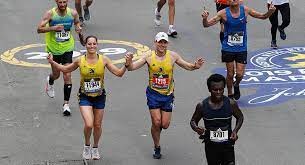
Masks will not be required for runners during the race but the B.A.A. said they will be enforced on race-day buses and in other areas in accordance with local guidelines.
Organisers previously said this year's Boston Marathon will be limited to 20,000 entrants, or about 33% below the typical number of runners in the race, in a bid to allow greater social distancing throughout the course given the COVID-19 pandemic.
The Boston Marathon, which is usually held in April and generally draws over 30,000 runners from all over the world, had been held annually since 1897 until it was cancelled for the first time last year because of COVID-19.
The global pandemic also forced organizers to push back the date for this year's race.
(09/03/2021) ⚡AMPby Ed Osmond
Boston Marathon
Among the nation’s oldest athletic clubs, the B.A.A. was established in 1887, and, in 1896, more than half of the U.S. Olympic Team at the first modern games was composed of B.A.A. club members. The Olympic Games provided the inspiration for the first Boston Marathon, which culminated the B.A.A. Games on April 19, 1897. John J. McDermott emerged from a...
more...Sifan Hassan will headline classy Brussels Diamond League field
Dutch all-rounder Sifan Hassan, who won two golds and a bronze in an unprecedented effort at a distance treble at the Tokyo Olympics, heads up a talent-loaded field at the penultimate meeting of the 2021 Diamond League series in Brussels on Friday.
In the last event before the two-day Diamond League finals in Zurich on September 8-9, the men's 100m featuring Tokyo silver medallist Fred Kerley of the US will also be a highlight.
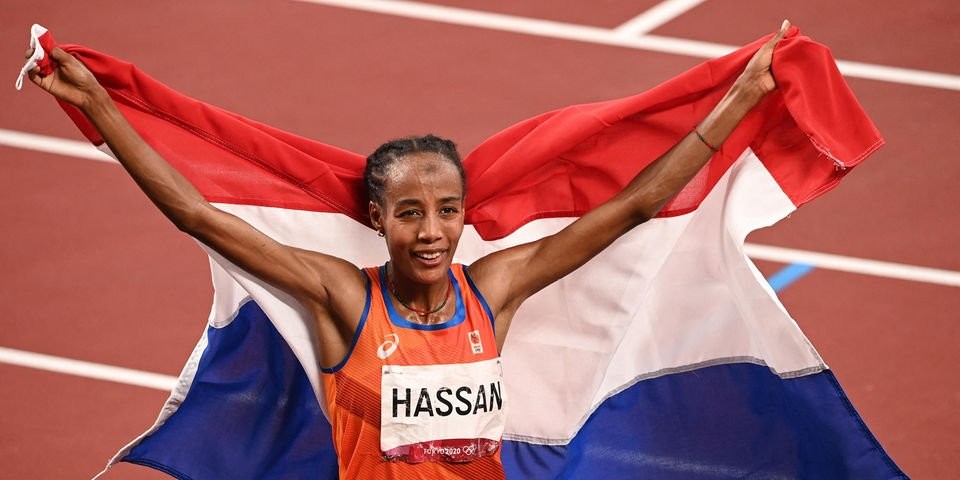
Kerley will be up against compatriots Trayvon Bromell, Michael Norman and Ronnie Baker, along with Canada's Olympic 200m champion Andre De Grasse.
Kerley, fresh from a personal best of 19.79sec in the 200m in Paris last week, said: "I've got a lot of confidence in my current form and want to show what I've got in the upcoming weeks.
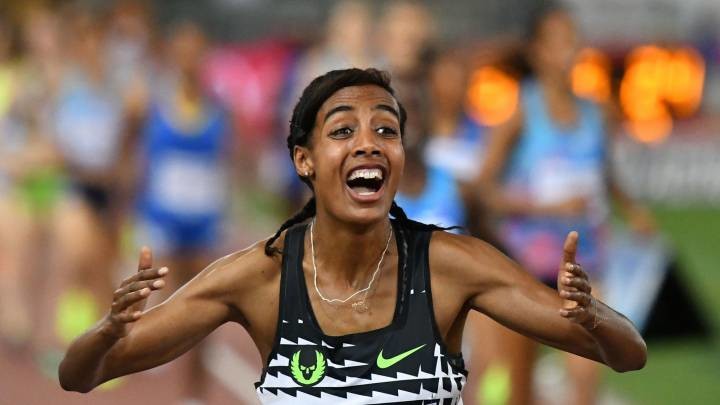
"My goal is very clear: I want to be the fastest man in the 100m, 200m and the 400m."
Kerley joined an exclusive club this year of sprinters who have broken 10 seconds in the 100m, 20 seconds in the 200m and 44 seconds in the 400m. Only Norman and South African Wayde van Niekerk have also achieved the feat.
"I want to be the best at all three distances. What makes someone the best, maybe a world record? I know I have got the potential to break the 400m record.
"I want to be a legend, like Usain Bolt. I see him as a big brother. To me he will always have a spot on the podium of the greatest of all time, he is a big example."
Hassan will race the mile at the King Baudouin Stadium, a venue she knows well, having broken the one-hour world record there last year.
The Ethiopian-born Dutch runner is also the world record holder in the mile and, given her sparkling form, it would take a brave person to bet against her winning once again.
The women's 200m is packed full of quality, with Tokyo bronze medallist Shericka Jackson, Olympic finalist Marie-Josee Ta Lou and a handful of sprinters who have a point to prove after Olympic disappointment this summer.
Outspoken American Sha'Carri Richardson missed out on a trip to Tokyo after being handed a one-month ban after testing positive for cannabis while Britain's Dina Asher-Smith was forced to pull out through injury.
Christine Mboma, the 18-year-old Namibian who is barred from running events between 400m and the mile because of her high testosterone levels, won a surprise silver in the 200m in Tokyo and will likely be a strong contender in Brussels.
Having rebounded from a disappointing outing at Lausanne with an emphatic win in Paris, Olympic pole vault champion Armand "Mondo" Duplantis is likely to again attempt to better his own world record of 6.18m.
(09/02/2021) ⚡AMPSide Stitches While Running, Why Do You Get Them and What You Can Do To Avoid Them?
It’s something endurance athletes are particularly prone to – stitches. That unpleasant pain beneath the ribs has brought many an athlete to their knees, making for a sorry end to their race or match. But what exactly is a stitch, what causes a side stitch, is there anything that can help when you get it, and can anything be done to prevent it? pjuractive takes a closer look.
WHAT IS A STITCH?
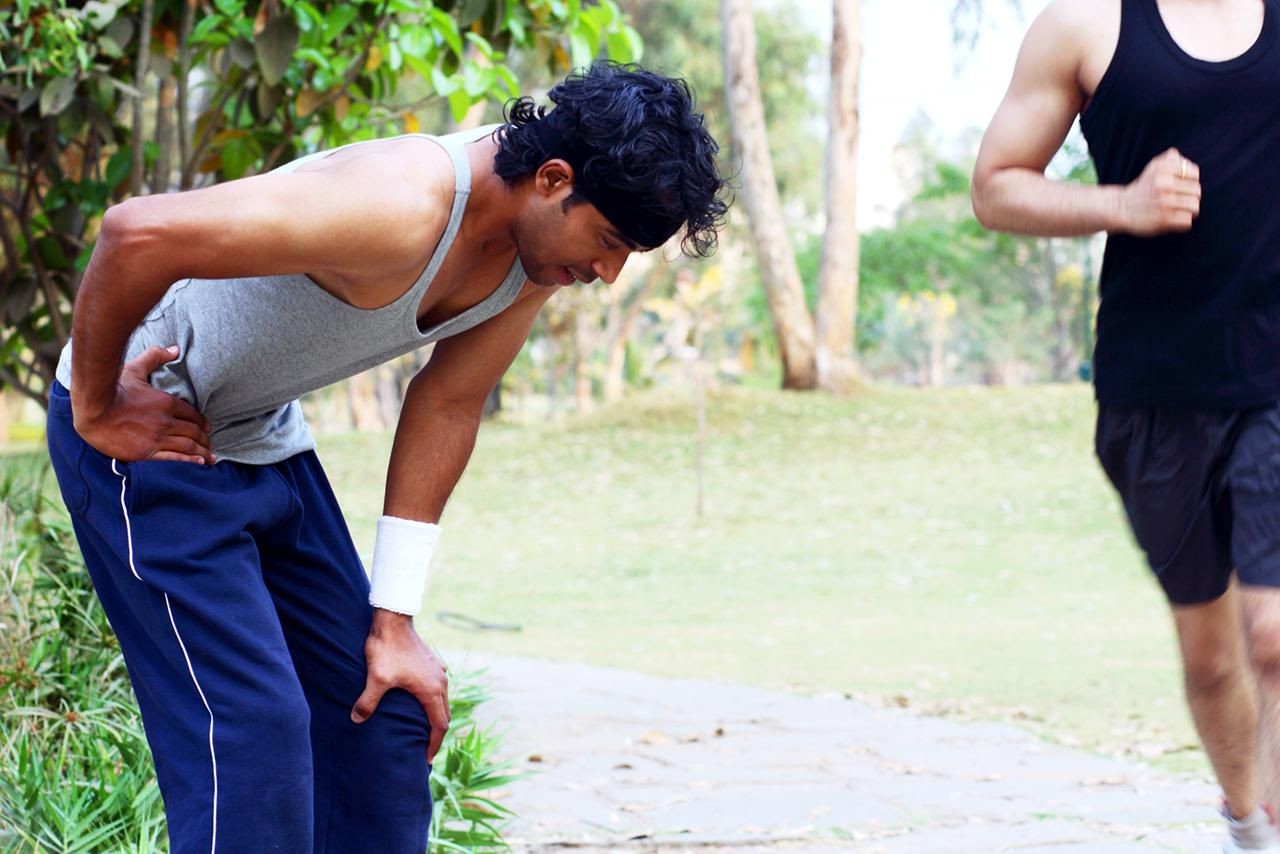
When people talk of side stitch, they are referring to a stabbing pain beneath the ribs which athletes suffer from, either on the left-hand side near the spleen or on the right around the liver area. It usually starts off fairly mildly, but can become so severe that athletes have to stop what they are doing. It mostly affects endurance athletes, such as runners, cyclists, swimmers, and rowers.
WHAT CAUSES A STITCH IN THE FIRST PLACE?

A stitch is brought on by physical exertion. It is something a lot of endurance athletes suffer with from time to time, yet the exact cause is still not known. There are plenty of theories about why so many athletes repeatedly suffer from the pain associated with stitches. One suspected cause is reduced blood supply to the organs, such as the spleen or liver. Incorrect breathing, a bent or stooping posture, overstimulation of the intercostal nerves, and an awkward running style can also bring on a side stitch. In addition, it is also assumed that incorrect food consumption and fluid intake can play a role – exercising on a full stomach may in fact be the crucial factor. The blood which the body needs for digestion means that there may not be enough available to the muscles, which can lead to a stitch. Being overweight, a lack of oxygen when doing intensive training, weak core muscles, and even failure to do sufficient warm-up exercises may also be causes.
The vast number of possible causes explains why so many athletes suffer from stitches so often. But can they be prevented? And if so, how?
HOW TO PREVENT STITCHES
Athletes naturally want to prevent stitches in the first place, yet because it is not clear what actually causes side stitch, it is difficult to prevent them. However, there are a few tips which athletes should bear in mind.
Endurance athletes should start their training gradually and slowly increase the intensity. It is only by doing this that the body can adjust the blood supply accordingly. It is also important to be aware of your breathing. Whatever the sport, breathing should always be controlled and abdominal breathing techniques should also be used. When running, for example, athletes are advised to breathe in for two to four paces and out again for exactly the same length of time. The faster the tempo, the fewer steps you take for each breath. When running slowly, take three to four – i.e. more steps per breath. It is also important to warm up properly to prepare the body for the exertion to come. This can prevent stitches, too.
Consumption of food should also be planned in a way that minimizes the risk of getting a stitch. It is recommended that athletes leave at least three hours after a big meal before a training session. Small snacks that are easy to digest are of course fine to eat before training.
Building up strong core muscles can also help prevent stitches in endurance athletes, as poor posture can cause side stitch. Stomach muscles are also important here.
It seems that older people don’t need to worry so much about preventing stitches, as susceptibility appears to decrease with age.
WHAT TO DO WHEN IT’S ALREADY TOO LATE – WAYS HOW TO GET RID OF SIDE STITCH
Have you followed all the tips above, yet still you’ve ended up with a stitch while running, cycling, etc.? There are a few things you can do when this happens:
No matter what the situation, slow down. Whether it’s your cycling speed or your running tempo – to prevent a stitch from getting even worse, first of all it’s important to scale down the intensity of your training a little.
If you are suffering from a side stitch, your breathing must be controlled. Correct breathing helps the diaphragm and the respiratory muscles to relax – you should take really deep breaths and then breathe out very slowly. This can help improve your depth of breathing and allows the muscles to recover.
It can also help to press your hand against the painful area, but only when you breathe in. Release the pressure from your hand again on the out-breath.
If it gets so bad that you have to take a break from your training, you can do light upper-body stretches. The best thing to do is to bend your upper body to the side. Each time you breathe out, you can then stretch your upper body a little further.
It can also help to stand still, control your breathing, and lean your upper body forward. This will relax your abdominal cavity and your diaphragm.
Even though we haven’t been able to find out what exactly causes side stitches when running, cycling and the like, there are ways how to prevent side stitch. And if all that doesn’t help and you still get this unpleasant pain, it’s worth following our tips above. Happy endurance training – despite the stitch!
(09/02/2021) ⚡AMPby Pjur Active
CAS report on Shelby Houlihan, close to zero probability burrito led her failed drugs test
The probability that a contaminated pork burrito led to the US Olympic 1500m medal prospect Shelby Houlihan’s failed drugs test is “very close to zero”, the court of arbitration for sport has ruled.
In a 44-page verdict, which outlined the reasons why Houlihan was banned for four years in June, Cas said her claim she had unwittingly ingested the banned substance nandrolone by eating the meat of an uncastrated boar from a Mexican food truck “simply cannot be accepted”.
Houlihan told the court that she had only eaten three quarters of her beef burrito, having found it “uncharacteristically greasy”, and said she may have been given a pork one by accident.
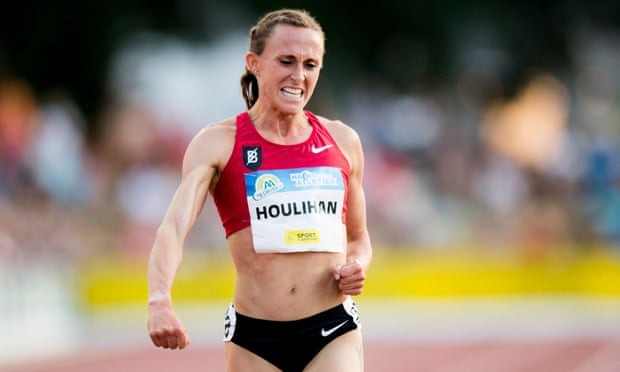
Cas dismissed Houlihan’s claims, saying: “The explanation presupposes a cascade of factual and scientific improbabilities, which means that its composite probability is (very) close to zero.
“First, the athlete would have had to have been served pork at the food truck despite ordering beef. Second, the pork consumed would not have been ‘normal’ pork product ordered by the food truck, but uncastrated boar. Third, uncastrated boar enters the food chain through completely different channels than pork.
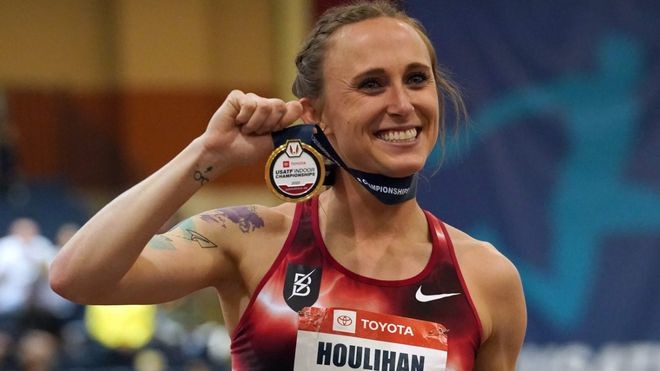
“It is rather difficult for an uncastrated pig to ‘slip through’ the multiple checkpoints. In principle, boars can be easily detected because of their big testicles.”
Cas quoted experts who said that for an uncastrated boar to end up in the normal pork supply chain, it not only had to be cryptorchid – a specimen with undescended testicles – but have had elevated androgen levels, “which would be abnormal for 6-month-old pigs”.
The court said: “The concentration of nandrolone in the athlete’s urine was 2-3 times higher than the highest values reported in the scientific literature after the ingestion of much more significant quantities of meat of mature (uncastrated) boar.
“Finally, in his expert witness report, Prof McGlone states that the chance of a cryptorchid ending up in the normal supply chain in the United States is far less than 1 in 10,000. As a result of her failure to establish the origin of the nandrolone in her system, the athlete cannot benefit from a plea of no significant fault or negligence.”
Houlihan, who finished fourth in the 1500m at the world championships in Doha in 2019, had a lengthy array of witnesses who pointed to her good character. She also told Cas she had refused to wear carbon-plated “super spikes” in Doha as she thought they would give her an unfair advantage – a decision that may have cost her a medal.
Speaking in June, Houlihan said: “I did everything I could to prove my innocence. I passed a polygraph test. I had my hair sampled by one of the world’s foremost toxicologists.”
However, Cas said that “neither the hair analysis nor the polygraph results are sufficient for the athlete to rebut the presumption that the anti-doping rule violation was intentional”.
(09/02/2021) ⚡AMPby Sean Ingle
World record-holder Eliud Kipchoge says that he wants to try an ultramarathon
As we’ve watched Eliud Kipchoge win race after race, break records and defy human limits, many fans have likely wondered what the marathon legend could do in a race longer than 42K. The great news is, one day we may have a chance to find out.
In a recent interview with Rob Steger in the Training for Ultra Podcast, the marathon world record-holder revealed his next goal after he finishes his marathon career: to tackle an ultra.
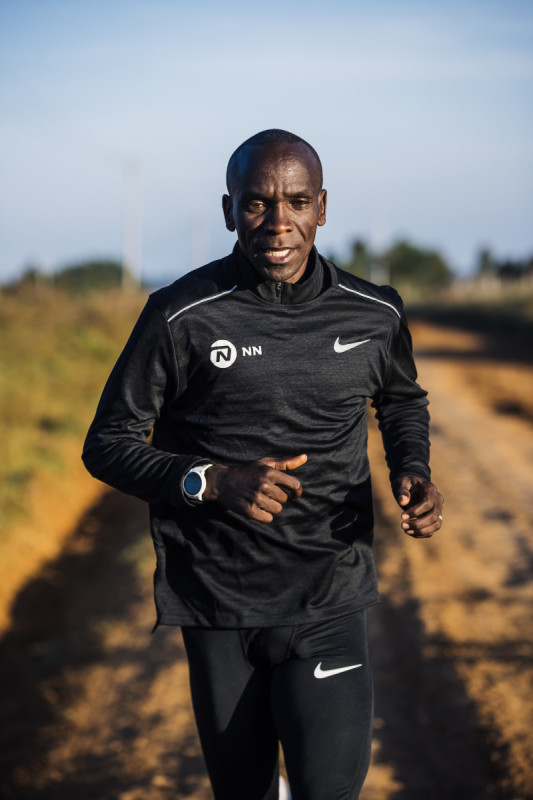
“After leaving the marathon, I want to run the ultramarathons just to feel how it is,” he told Steger. “Running for more than four or five days, or even run at once for 70 kilometers. I really want to feel the pain of running for a long time.”
While he hasn’t narrowed down any specific races he’d like to do, Kipchoge expressed interest in many of the Ultras in North America and South Africa, which gives him a long list to choose from. The ultrarunning community appears to be prepared to welcome the Olympic gold medalist with open arms, including fellow running legend, Spanish mountain runner Kilian Jornet.
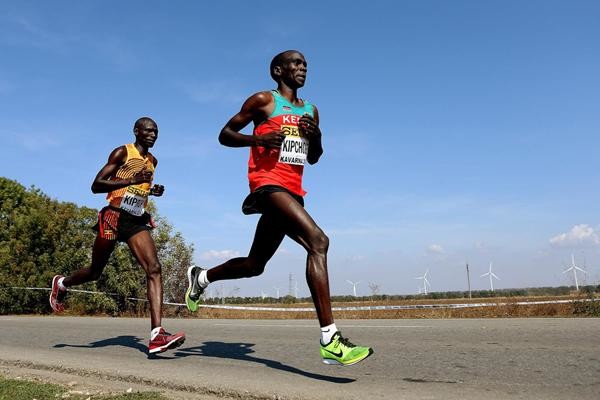
Throughout the rest of the interview, Kipchoge talks about the pain of training (yes, running hurts for him, too… don’t let his smile fool you), who inspires him (hint: it’s not who you might think), how he motivates himself on days when he doesn’t feel like training and what kind of legacy he hopes to leave behind. The interview is short but not lacking any of Kipchoge’s endearing charm, and will likely have you itching to tie up your shoes by the end.
We may have to wait a while before we see Kipchoge out on the trails, however. To the delight, and perhaps the relief, of running fans everywhere, the GOAT of marathon running hasn’t made any indication that he’s retiring any time soon, and we will still have the pleasure of watching him make history for at least a few years yet.
(09/02/2021) ⚡AMPby Brittany Hambleton
Jamaica's London Olympics relay gold medalist Nesta Carter has called time on his athletics career
In a press release yesterday, through track club MVP, the 35-year-old sprinter said he could not compete up to his standard in the sport. He said he has been hampered by an injury that has prevented him from competing since March.
"Now at the age of 35, I am no longer able to give of my best as an athlete to the sport that I know and love. As a result and for other reasons, I am announcing my retirement from Track and Field as an athlete," Carter said.
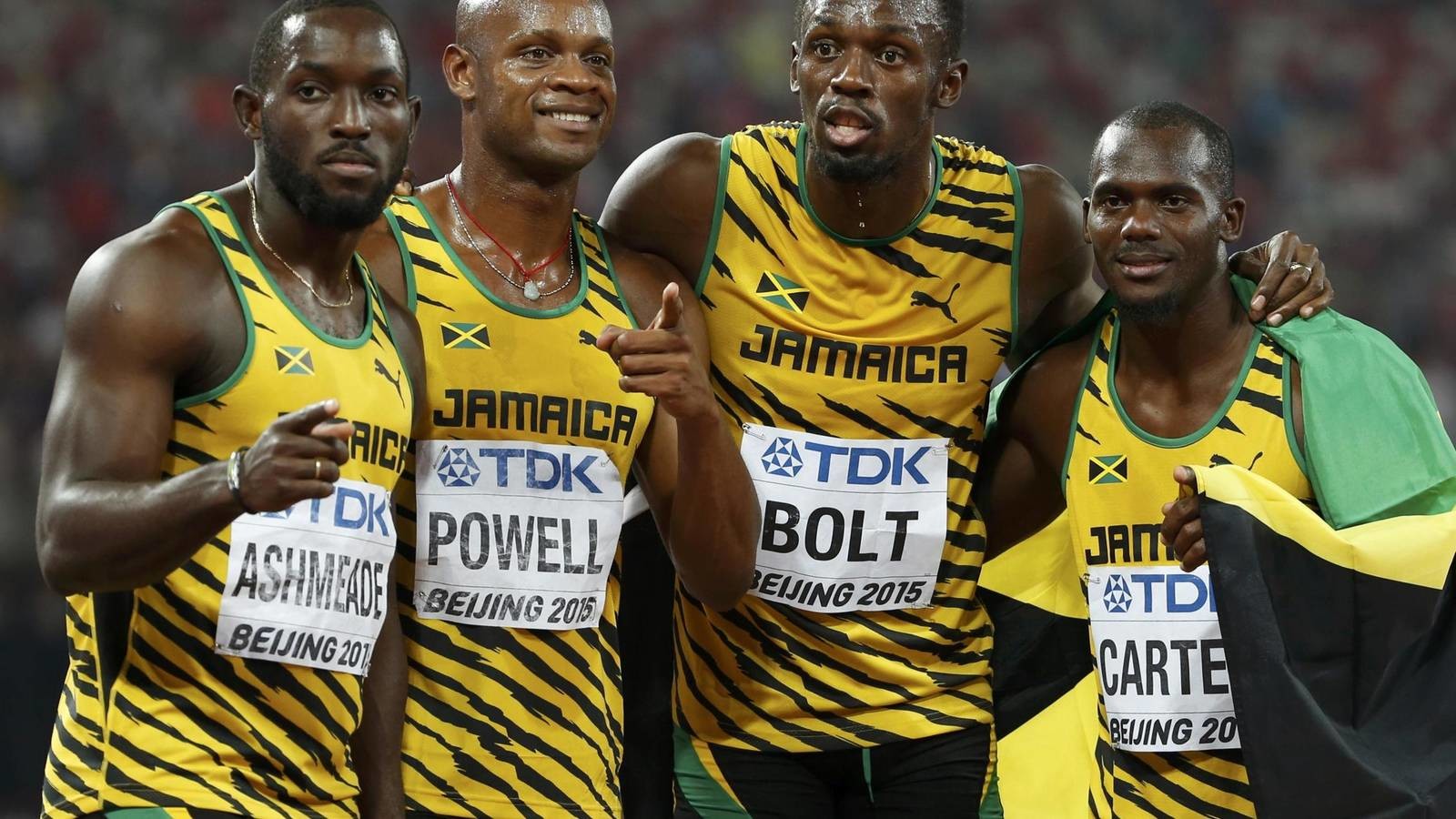
Furthermore, he said that while he was prescribed medication to correct the problem, the medication "breaches existing anti-doping rules".
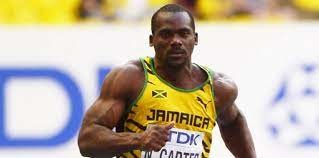
" As such I had to make a choice between my health and athletics and I chose my health," Carter said.
Carter ends his career with a personal best in the 100m of 9.78 seconds, the eighth fastest time in history. He won Olympic gold as a member of the Jamaica 4x100m relay team that set the world record at the 2012 London Olympic Games (36.84 seconds). He won three World Championships gold medals as part of the Jamaica 4x100m relay team in 2011, 2013, and 2015, a silver in 2007 and an individual bronze in 100m final in 2013.
(09/01/2021) ⚡AMPby Daniel Wheeler
Nagoya is preparing a safe road race for 2022
The Nagoya Women’s Marathon is pleased to announce its plan to hold the Nagoya Women’s Marathon 2022 with 22,000 participants, on the same scale as before the Covid-19 pandemic started, in Nagoya city, Japan on Sunday, March 13, 2022.
Launched in 2012, the Nagoya Women’s Marathon is the world’s largest women’s marathon certified by Guinness World Records and the only women’s race granted a World Athletics Platinum Label.

The event hosted 21,436 runners in 2019, but due to the Covid-19 outbreak, it only staged the elite race with 110 athletes in 2020. The 2021 race on March 14, 2021, was held as the first mass participation road race held in Japan after the Covid-19 pandemic started and welcomed 4,704 domestic runners (In the virtual marathon held in parallel with the in-person race, 4,800 runners participated from around the world). The post-event investigation found no cases of infection among event participants within two weeks after race day. The 2021 race was recognized for setting an example of ‘new-normal’ distance race with all suitable measures against infection delivered and advice of medical professionals and local government officials followed.
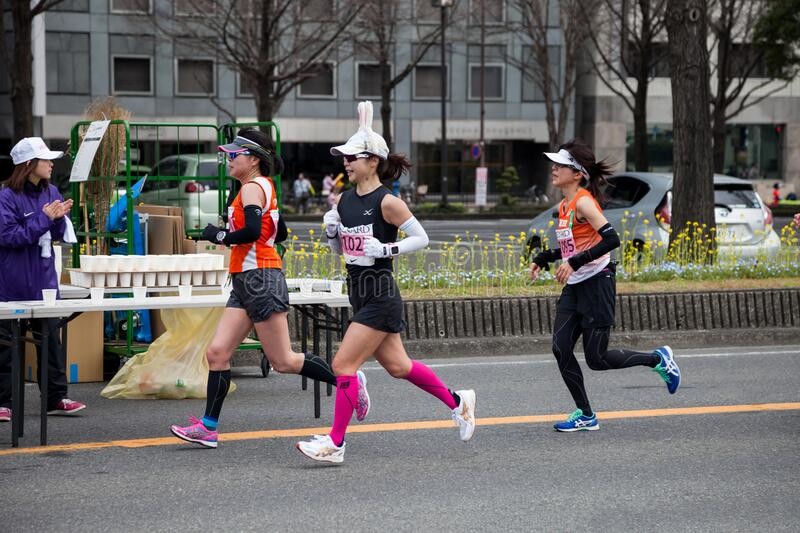
The Nagoya Women’s Marathon has been paving the way for the organization of safe road racing during the pandemic by holding races with gradually increased numbers of participants of only elite athletes in 2020 and nearly 5,000 runners in 2021. Using the knowledge and expertise in infection prevention and control practice accumulated in the past two years, the organizers are determined to make thorough preparations and develop further anti-infection measures for the 2022 race to safely host 22,000 women runners.
To keep the event safe and secure for runners, volunteers, and all concerned, the organizers will establish an infection control office within the organizing committee with medical professionals and local government officials and form a precise infection control plan. All participants will be required to cooperate with the infection measures, such as wearing a mask at all event sites (except for runners while running in the race), temperature check on every site arrival, Covid-19 testing at number pickup, and submission of health condition sheet for 7 days before and 14 days after race day. If the event is forced to be downsized or canceled due to the state of emergency or event restrictions issued by the Japanese or local governments, participation in a virtual marathon will be offered as a substitution. The virtual participation option will be also offered to international runners if they cannot come to the event due to travel restrictions.
The organizers will continue monitoring the infection status closely and make the utmost effort to stage the world’s largest women’s marathon in the best and safest way possible.
Koji Kitano, Race Director of the Nagoya Women’s Marathon comments: “Due to the Covid-19 pandemic, we have not been able to welcome 22,000 women runners and support their marathon challenge for the past two years. As a runner myself, I understand how running fans around the world are waiting for mass races to return. We will use our experience from the past two races held during the pandemic to act in best practice to ensure the health and safety of 22,000 runners. The race entry will start in November and we are looking forward to receiving applications from many runners.”
(09/01/2021) ⚡AMPNagoya Women's Marathon
The Nagoya Women's Marathon named Nagoya International Women's Marathon until the 2010 race, is an annual marathon race for female runners over the classic distance of 42 km and 195 metres, held in Nagoya, Japan in early March every year. It holds IAAF Gold Label road race status. It began in 1980 as an annual 20-kilometre road race held in...
more...Rwanda’s Felicien Muhitira will return to action ahead of Paris Marathon
Rwanda’s long distance runner Felicien Muhitira has returned to action as he prepares to compete at the forthcoming 2021 Paris Marathon slated for October 17 in Paris, France.
The 26-year-old will be participating at the marathon race in search of qualification to the 2022 World Athletics Championship slated from July 15-24, 2022 in Oregon, United States.
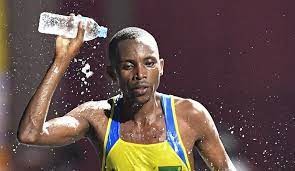
It was originally scheduled for August 6–15, 2021 but the postponement of the 2020 Tokyo 2020 Olympics prompted the need for postponement of the race, too, into 2022.
The Paris Marathon is one of Europe’s most popular sporting events and Muhitira aims to take advantage of the golden race to improve his current minima that would see him qualify to the World Championships.
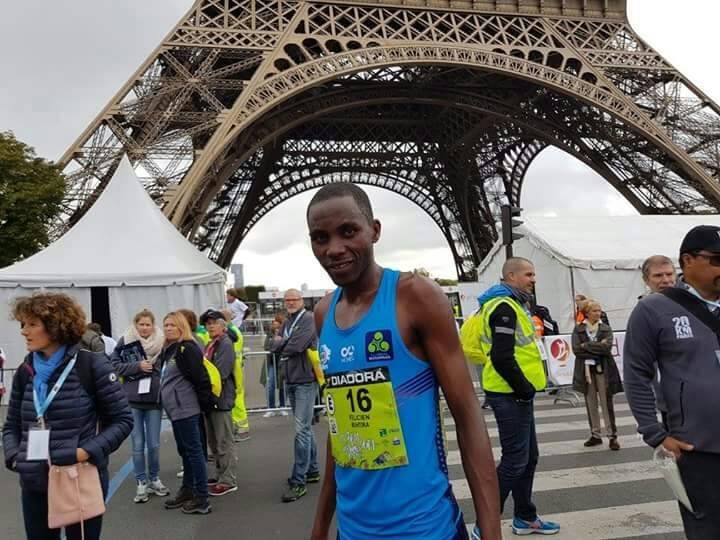
“The Paris Marathon is a good opportunity for me to improve my performance so I can not only qualify to the World Athletics Championships but also try to impress and get a chance to be invited in bigger marathon events in the future,” vows Muhitira in an interview with Times Sport.
Since he recovered from illness, Muhitira has been under intensive training sessions in Nyagatare as he targets to hit at least 2hours 08 minutes at Paris race so he can be able to land more marathon opportunities beyond World Championships.
The itinerary of the Paris Marathon, which normally attracts over 40,000 runners each year, will start on Les Champs Elysées.
(09/01/2021) ⚡AMPby Eddie Nsabimana
Schneider Electric Paris Marathon
The Schneider Electric Marathon de Paris offers a unique opportunity to make the city yours by participating in one of the most prestigious races over the legendary 42.195 km distance. The Schneider Electric Marathon de Paris is now one of the biggest marathons in the world, as much for the size of its field as the performances of its runners....
more...What are the best foods I should be eating during the week before and the morning of the Marathon race?
It’s a great question and a runners diet in the week before a marathon is a very important part of success on race day.
Marathon Rule #1: Never Try Anything New On Race Day
In addition to clothing, pacing, and training, this rule also applies to your nutrition strategy in the five days leading up to the race.
You should not experiment with any new foods or venture too far from your normal diet. It’s easy to get nervous in the last few days of your taper and be persuaded by a new product a friend recommends or something you see at the race expo.
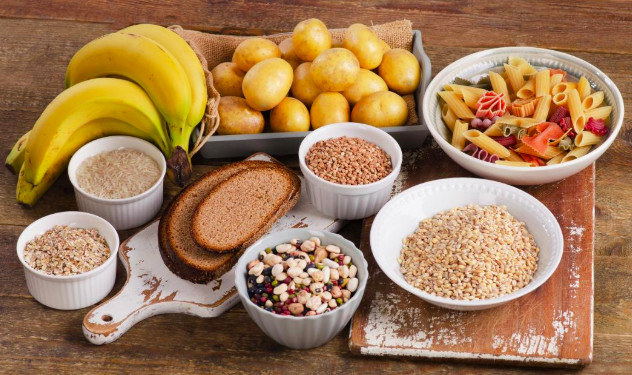
However, if you haven’t tried it before, especially at marathon pace or during a long run, don’t be tempted.
It’s also important that you experiment with the types, quantity, and timing of the food you eat before you run. Some runners have very weak stomachs and need up to three hours to digest food before they can run comfortably. Other runners can eat within an hour of a hard run with no adverse side effects.
It is important to figure out which type of runner you are during training and to take this information into account when you plan for the race morning.
Experiment with your pre-race meal before race day. Your last two long runs or difficult marathon paced workouts should be similar to race simulations. Try wearing the clothes you think you’ll wear on race day, the shoes, socks, and everything you can think of.

Eat the same pre-race meal you’re planning for the night before the race and when you wake up in the morning, eat the same breakfast you plan on having.
This will give you time to change things up before race day if you find it doesn’t work for you.
5 Days From The Race
Begin to increase your total carbohydrate intake by adding in more pastas and starches (low glycemic index foods) to your diet throughout the week. The old idea of depleting your carbohydrate stores the week before the race and binging on carbohydrates the last few days in an attempt to trick your body into overcompensating and storing more fuel is outdated.
Ensuring that you consume a higher percentage of your total daily calories as carbohydrates is sufficient. Remember, you’re not running as much as you have been, so eating too much more than you normally do will make you feel bloated and lethargic.
At this point in the nutrition cycle, relax and don’t go overboard. Examples: Sweet potatoes, pastas, baked potatoes, brown rice, sandwiches, bagels with peanut butter, quinoa, whole grains, oatmeal
48 Hours Before The Race
Your last big meal should be two nights before the race. It will give your body ample time to digest anything you eat so you won’t feel bloated on the morning of the race. I’ve seen too many people gorge on pasta the night before the race only to reach the starting line the next day stuffed and lethargic.
Have you ever tried to run the morning after Thanksgiving?
If you have, you know the bloated feeling I’m talking about, and if you haven’t, I don’t recommend scheduling a tough workout. Example: The overwhelming favorite is pasta for most people, but other options include rice, potatoes, and pizza.
24 Hours And Before
Eat normal balanced meals like you would normally do on any training day. Make sure you drink plenty of liquids all day long, especially electrolyte fluids such as Gatorade or use electrolyte tabs such as Nuun.
It helps if you carry a water bottle along with you throughout the day to remind yourself to drink.
Your main meals should still be in the form of low glycemic to medium glycemic index foods. Ideally, you won’t be too active on the day before the race, so you may feel full quickly. That is fine, you shouldn’t try to stuff yourself. Good choices are: Sweet potatoes, pastas, baked potatoes, white rice, bagel with banana
18 Hours Before The Race
Start eating small meals every 2-3 hours, but after lunch, cut out red meat, fried foods, dairy products, fats, nuts, and roughage. You should only be consuming light, digestible foods like energy bars, bread, and small sandwiches.
Keep drinking water and electrolyte beverages and avoid salty and high fiber foods. Examples include: energy bars, bread, cereal, and small sandwiches.
4 Hours And Less
You should be up early enough before the race to eat a small breakfast with plenty of time to start digestion before the gun goes off. If you need 3 hours to eat a small meal before running, then you need to get up at least three hours before the race to get in a light breakfast.
You’ll want to drink mostly water (unless you know temperatures at the race are going to be warm), with some electrolyte fluid. Don’t try to get all your fluids down by chugging your water bottle.
Drink small, regular sized amounts. Room temperature water is absorbed quicker than warm or cold water. I estimate that you’ll need 6 oz. every hour or 8 oz. every hour on hot days.
Lots of runners will take a GU or energy gel right before the gun goes off. I only recommend this if you have a weak stomach and you haven’t eaten in 3 hours. If you’re able to stomach more solid foods 60-90 minutes before the race, this is preferable.
Basically, energy gels are mostly simple sugars and you’ll be consuming another 2 or 3 gels before the race is over. Even for the biggest sweet tooth this is a lot of sugar.
My favorite breakfast – oatmeal with banana and coffee. Other options include bagel with peanut butter, toast with honey, or dry cereal.
At this point, you should have a good idea of what works best for you pre hard or long run, so stick with what works.
(09/01/2021) ⚡AMPby Coach Jeff
Sha’Carri Richardson will return to the track in search of redemption after finishing last in Eugene
It has been confirmed that Sha’Carri Richardson is returning to the Diamond League to race the 200m this Friday in Brussels. After all the drama that unfolded after her race in Eugene, and missing the Olympic Games due to a suspension from USATF. Richardson returns to the track in search of redemption.
Richardson will go up against 200m specialist and 2019 World Champion Dina Asher-Smith and the Namibian duo of Beatrice Masilingi and Tokyo silver medallist Christine Mboma. She will once again go up against Jamaica’s Shericka Jackson, who won bronze in Tokyo and beat Richardson over the 100m distance in Eugene.
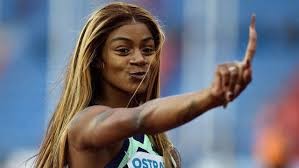
Richardson dropped out of the 200m race in Eugene after she failed to meet U.S. fan’s expectations in the 100m. This will be her third 200m race of the 2021 season, last running the event in Austria this past May (22.35s).
Brussels is the last stop on the Diamond League circuit before the two-day Diamond League finals in Zurich next week. Action from Brussels will kick off on Friday, Sept. 3 on CBC Sports.
(08/31/2021) ⚡AMP
by Marley Dickinson
Five Track Workouts to Improve Your Speed
A track is the perfect setting for speed workouts. The surface is ideal and you can easily set up workouts based on laps. Adding track workouts to your training routine can boost your speed and enliven your regimen.
Add some of these fun workouts and you're sure to see improvements in your race times. To start, do only one speed workout per week. You can add a second one as you build fitness.
If you've never done any kind of speed training, make sure you first understand the rules for speed training. You will want to first establish a good running base. Always warm up, and when you pick up the pace, don't start too fast.
1.- Push the Straightaways.
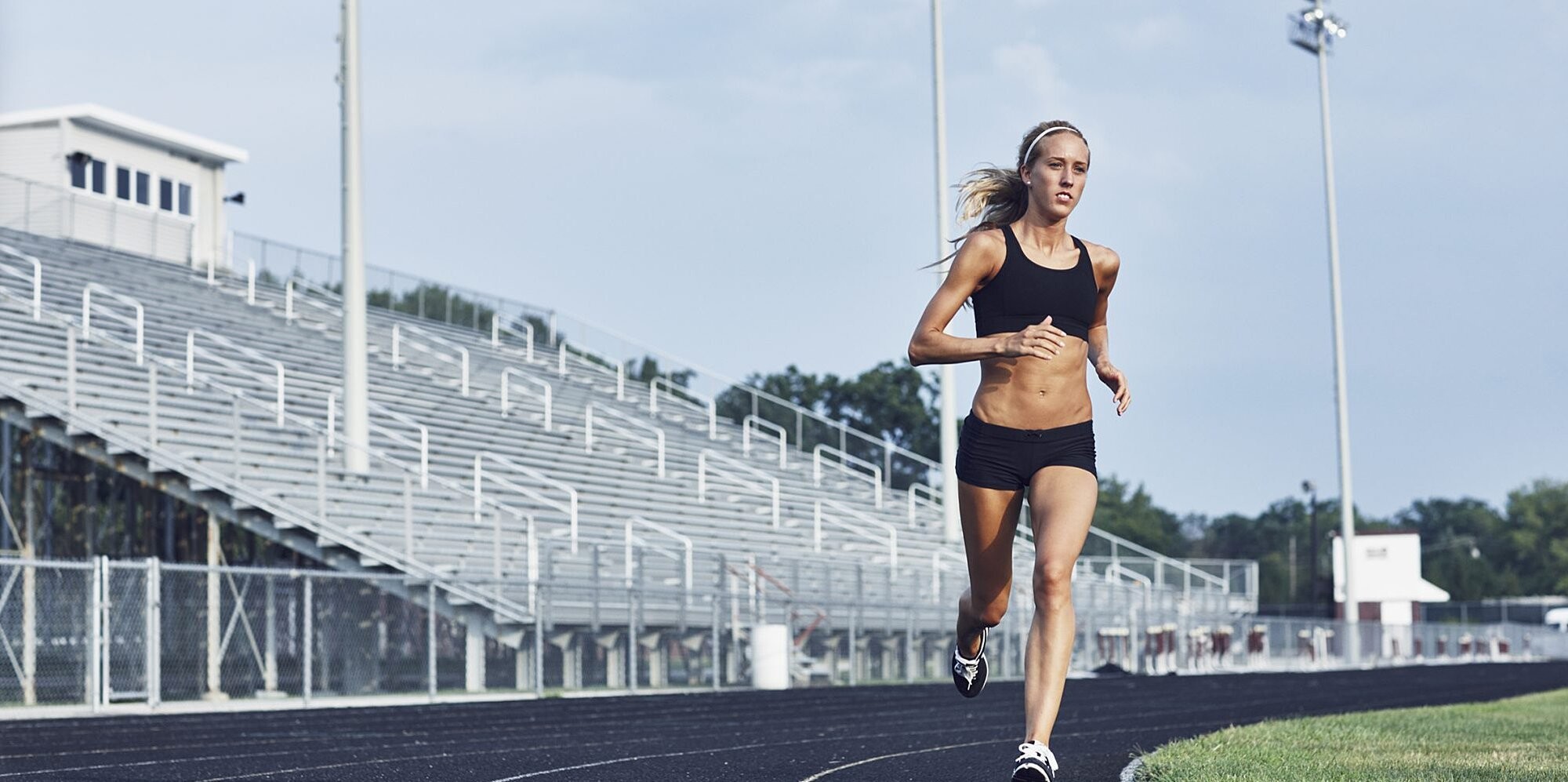
This is a great intro workout for those who are new to track workouts. It's simple. After a couple of laps at an easy pace to warm up, start to push the pace on the straight sections of the track (known as the straightaways) and then recover (at an easy pace) on the turns.
If you're training for a specific race, such as a 5K, you can do your race pace on the straightaways. Start with four laps and add another lap each week until you work your way up to 10 laps.
2.- Ladder Workout.
This track workout will help build your speed, confidence, and endurance, no matter what race distance you're training for. If you're not sure what your 5K (3.1 miles) race pace is, use a race pace estimate calculator. Beginners should start with one sequence, while more advanced runners can repeat the sequence once they've worked through it.
Warm-up: 5 minutes at a walk/slow jog
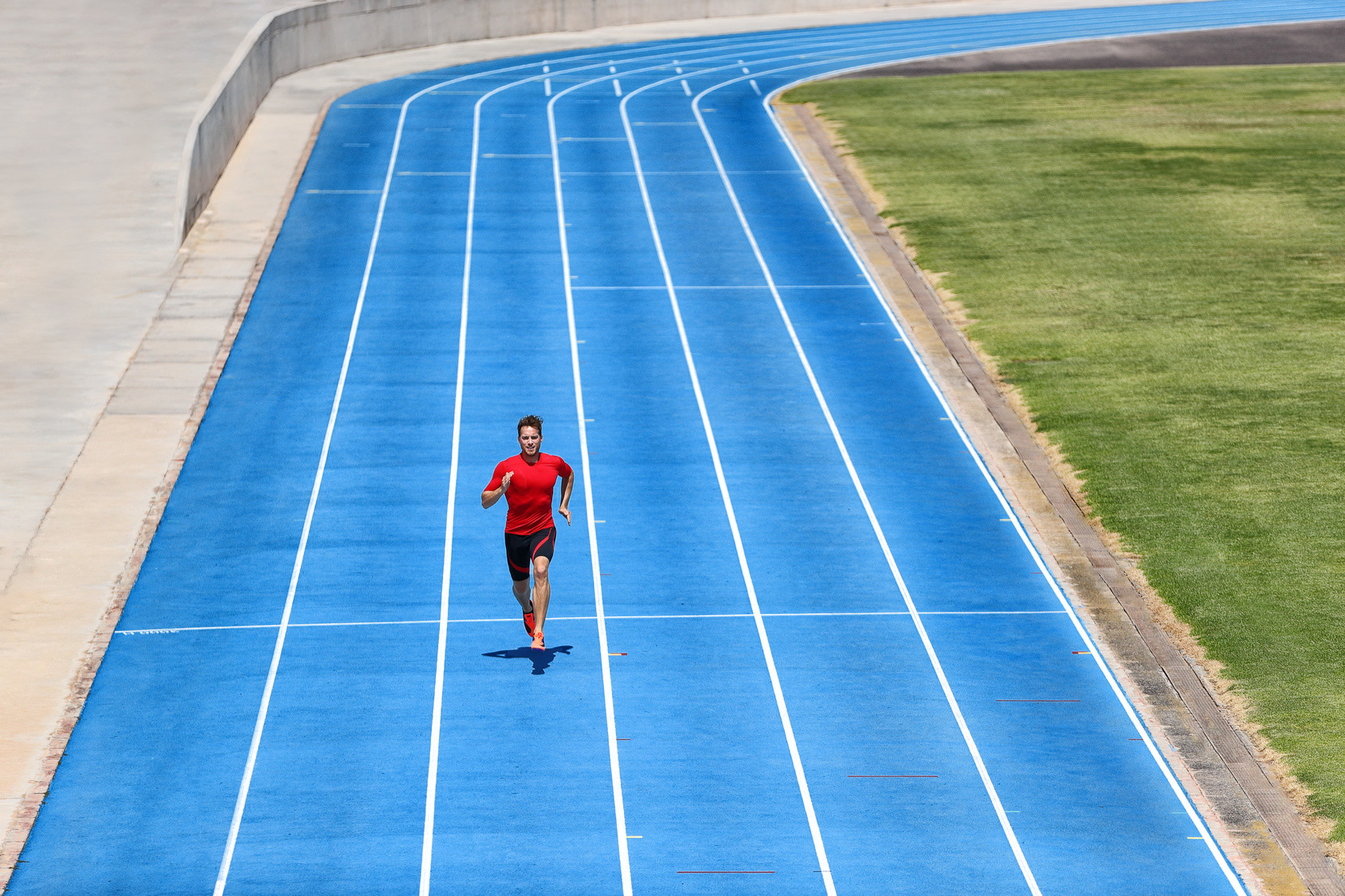
Work interval: 400 meters (1 lap) at 5K race pace
Rest interval: Recover (easy pace) 400 meters
Work interval: 800 meters (2 laps) at 5K race pace
Rest interval: Recover (easy pace) 400 meters
Work interval: 1,200 meters (3 laps) at 5K race pace
Rest interval: Recover (easy pace) 400 meters
Work interval: 1,600 meters (4 laps) at 5K race pace
Rest interval: Recover (easy pace) 400 meters
Cool down: 5 minutes at an easy pace.
3.- Mile Test.
Doing a timed mile on a track is a great way to assess your fitness and give yourself a goal to work toward. Run a hard mile (4 laps) at a fast but steady pace. You want to go as fast as you can, but maintain an even pace for each lap.
For example, if you are aiming for a 6-minute mile, your goal would be to run each lap in 90 seconds. Make a note of your time and use it as a benchmark to test yourself against every month as you ​​​train to run a faster mile. Try to run all four laps at the same pace instead of starting out too fast and slowing down.
4.- Kick Its.
Start with four 400-meter (one lap) intervals at your 10K pace, with 400-meter recovery (at an easy pace) in between. Once you've finished that, do eight 200-meter repeats at 5K pace, with 200-meter recovery (easy pace) in between.
5.- Mile Repeats.
Mile repeats are one of the best speed workouts you can do to improve your race times and build your running confidence.4 Here's a workout you can do once a week:
Start with 2-mile repeats (1 mile equals four laps) in the first session. Run each mile at your 10K or half-marathon pace.
Recover (at an easy pace) for a half-mile (2 laps) in between repeats.
Make sure your breathing and heart rate have recovered before you start your next repeat.
Add another mile repeat the following week. Try to maintain that same pace (10 to 15 seconds faster than your realistic goal marathon pace) for each one.
Try to work up your way up to six repeats if you're an advanced runner. Intermediate runners may want to stop at four or five repeats.
(08/31/2021) ⚡AMPby VeryWell Fit
Double Olympic gold medalist Derartu Tulu claims Ethiopian drug problems caused by athletes chasing quick money
Tulu has accused Ethiopian runners of chasing “quick money” and turning to performance-enhancing drugs to help them.
Ethiopia are one of seven countries currently listed as a category A nation by the Athletics Integrity Unit, meaning they considered more at risk at doping that others.
Restoring their reputation is seen as one of Tulu’s main tasks following her election as permanent President of the Ethiopian Athletics Federation (EAF) last December.
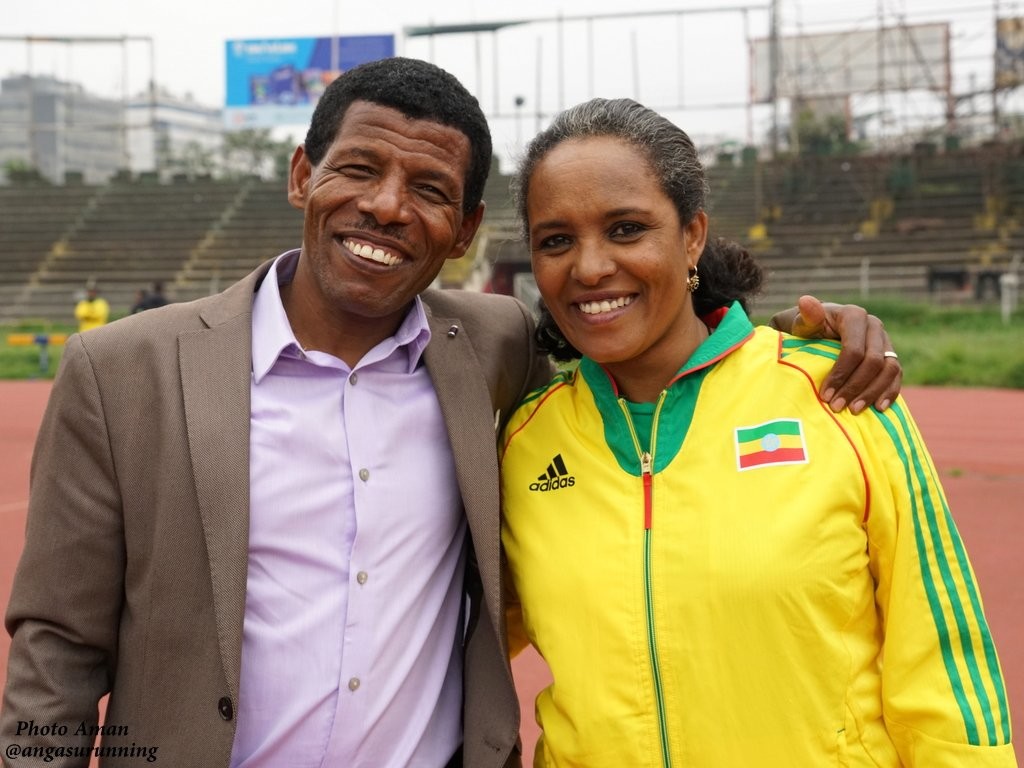
Tulu, the first black African woman to win an Olympic gold medal when she triumphed at Barcelona 1992, had been serving in the role since November 2018 following the resignation of fellow distance runner Haile Gebrselassie.
Doping products are reportedly easily available in Addis Ababa, World Athletics has warned.
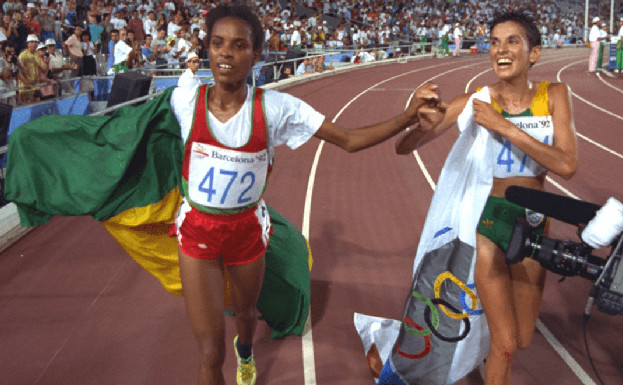
Following their inclusion on the category A list, the EAF launched a major education programme among young athletes to warn them of the dangers of doping.
"In our time, we used to compete clean," Tulu told The Daily Nation in Kenya during the recent World Athletics U20 Championships in Nairobi.
"Sheer talent drove us to victory, and it was healthy competition but today the desire for quick money is pushing athletes to use drugs.
"That is why you see some athlete doing well for a short time before disappearing after few years."
Tulu’s first Olympic victory in Barcelona entered Games legend when she beat Elena Meyer in an iconic race at South Africa's first Games appearance since the end of apartheid.
Then, eight years later in Sydney, Tulu won her second 10,000m title before returning at Athens 2004 to win a bronze medal.
Tulu's victory at Barcelona 1992 saw Ethiopia win their first Olympic gold medal for 12 years.
Since then, they have won at least one gold medal in every Olympic Games.
Their best performance came at Beijing 2008 when they won a total of seven medals - four gold, two silver and a bronze.
Ethiopia only won one gold medal at Tokyo 2020 - Selemon Barega in the men’s 10,000m – along with a silver and two bronze, their worst performance since Barcelona 1992.
"Athletics is changing, and we need to change with time," Tulu told The Daily Nation.
"Many countries are coming up fast.
"We witnessed this during the 2020 Olympic Games.
"Competition has become tougher, but we are constantly trying to nurture new talents."
(08/31/2021) ⚡AMPby Duncan Mackay
Two-time Boston Marathon Winner & Reigning World Champion Lelisa Desisa will return to Boston Marathon
The Boston Athletic Association (B.A.A.) has announced that two-time Boston Marathon champion, reigning World Athletics Marathon champion, and 2:04:45 marathoner Lelisa Desisa of Ethiopia will compete in the 125th Boston Marathon on Monday, October 11. Desisa joins 13 previously announced Boston Marathon champions who are racing as part of the John Hancock Professional Athlete Team.
“Boston has become my second home and I truly cherish my time when I am there,” said Desisa. “I return to compete still chasing my third victory in the Boston Marathon. Thank you, Boston; I look forward to putting on a good show for you on Marathon Monday!"
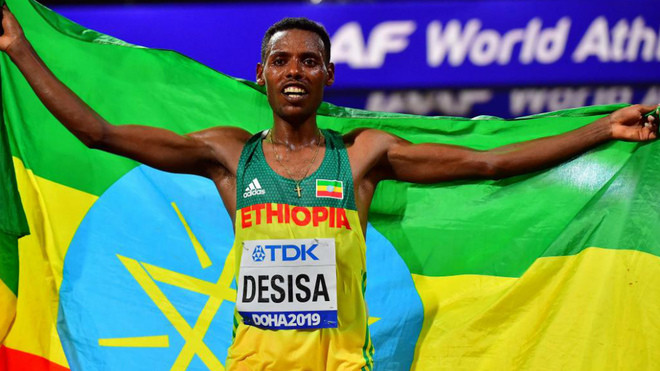
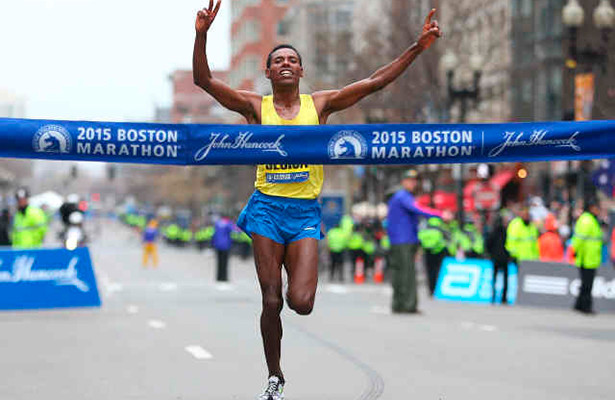
Desisa, who broke the tape first in 2013 (2:10:22) then again in 2015 (2:09:17), returns to Boston for the seventh time. In 2019, Desisa finished runner-up by a mere two seconds behind winner Lawrence Cherono. In addition to Boston and the 2019 World Championships, Desisa has previously won the 2018 TCS New York City Marathon, 2013 Dubai Marathon, and earned silver at the 2013 World Athletics Championships Marathon. His lifetime best of 2:04:45 ranks third in this year’s field, featuring nine men who have run 2:06:00 or faster.
Additionally, 2020 Houston Marathon champion and 2:05:56 marathoner Kelkile Gezahegn will compete for top honors in October. Gezahegn has won marathons in Houston, Ljubljana, Frankfurt, and Lanzhou since 2017, with four additional wins in 2016. Gezahegn’s personal best of 2:05:56 was set en route to a third-place finish at the 2018 Rotterdam Marathon. This will be his Boston Marathon debut.
(08/31/2021) ⚡AMPby B.A.A. Communications Department
Boston Marathon
Among the nation’s oldest athletic clubs, the B.A.A. was established in 1887, and, in 1896, more than half of the U.S. Olympic Team at the first modern games was composed of B.A.A. club members. The Olympic Games provided the inspiration for the first Boston Marathon, which culminated the B.A.A. Games on April 19, 1897. John J. McDermott emerged from a...
more...World Athletics President Sebastian Coe has paid tribute to former International Olympic Committee (IOC) President Jacques Rogge, who has died aged 79
Jacques Rogge served as the eighth President of the IOC, from 2001 to 2013, and competed for Belgium in sailing at three editions of the Olympic Games, in 1968, 1972 and 1976.
In 2005 he announced the awarding of the 2012 Games to London, with Coe having led the UK capital city’s bid.
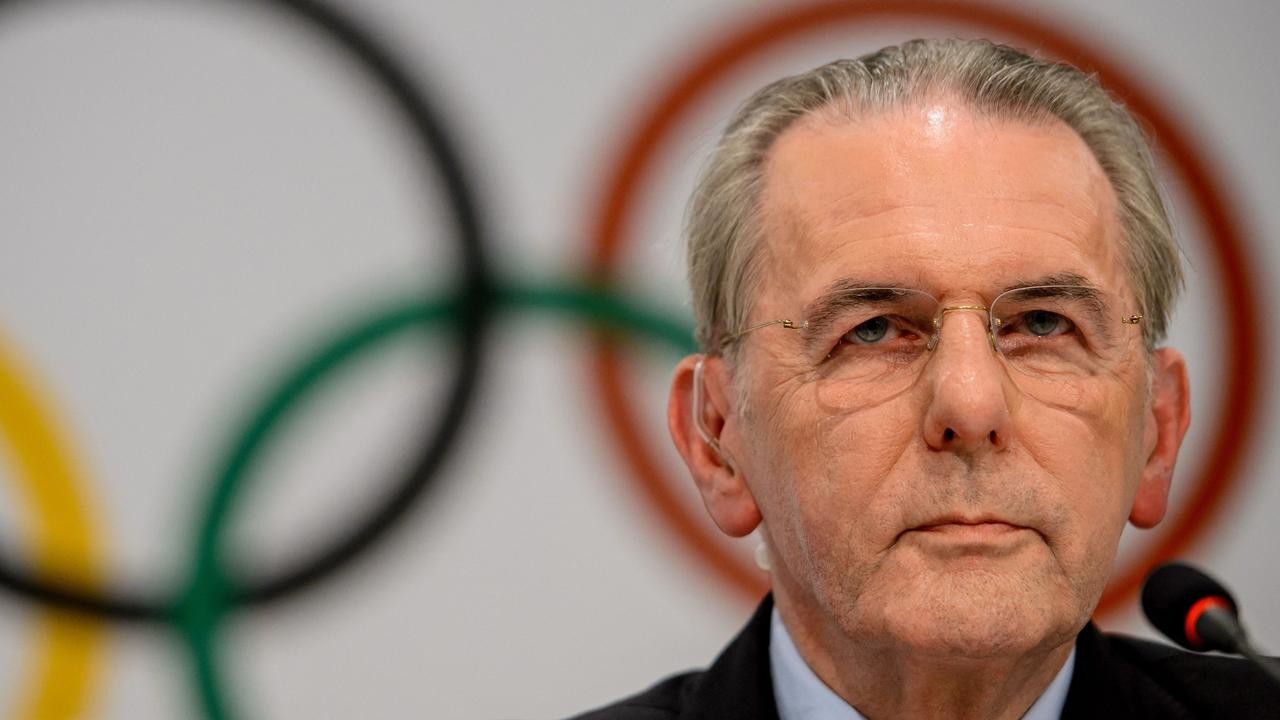
Rogge, who was an orthopaedic surgeon with a degree in sports medicine, was married to Anne, and leaves a son, a daughter and two grandchildren.
“I am beyond sad to hear the news of Jacques’ passing,” Coe said. “I wrote to Jacques and Anne two weeks ago to tell them that all of us at World Athletics missed them at the Tokyo 2020 Olympic Games. I said it wasn’t the same being in the Olympic stadium watching athletics without them.
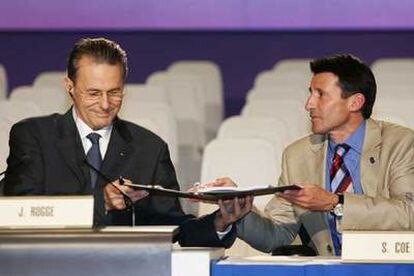
“I have a mountainous gratitude for his part in the seamless delivery of London 2012. No Organising Committee could have asked or received more. He was passionate about sport and all he achieved in sport and beyond was done with common decency, compassion and a level head. We will all miss him.”
After his career as an athlete, which included becoming a Belgian rugby international, Rogge became President of the Belgian and European Olympic Committees, and was elected President of the IOC in 2001. After his IOC Presidency, he also served as a Special Envoy for Youth, Refugees and Sport to the United Nations.
“First and foremost, Jacques loved sport and being with athletes - and he transmitted this passion to everyone who knew him. His joy in sport was infectious,” said Thomas Bach, who succeeded Rogge as IOC President in 2013.
“He was an accomplished President, helping to modernise and transform the IOC. He will be remembered particularly for championing youth sport and for inaugurating the Youth Olympic Games. He was also a fierce proponent of clean sport, and fought tirelessly against the evils of doping.
“The entire Olympic Movement will deeply mourn the loss of a great friend and a passionate fan of sport.”
In a post on Twitter, World Athletics Senior Vice-President Sergey Bubka said: “Deeply mourn the loss of a wonderful personality, true friend and great leader, IOC Honorary President Jacques Rogge.
“Dedicating his life to the Olympic Movement, he was very special in his human attitude towards others, incredible love for athletes and understanding of the youth.”
Among others to pay tribute to Rogge was Moroccan middle distance great Hicham El Guerrouj, who wrote: “With a heavy heart, I pray for the eternal repose of Jacques Rogge, the former president of the IOC. RIP.”
(08/30/2021) ⚡AMPby World Athletics
Five Tips for Preventing Runner's Knee
While there are many benefits to running, first-time runners should be on the lookout for signs of stress on their body, says orthopedic surgeon Dr. Robert Marx, so that they can prevent injury.
Runner’s knee (also called patellofemoral pain syndrome) is one of the most common running-related knee injuries. The main sign is pain in the front of the knee. It’s often caused by weakness of the core and hips.
Dr. Marx offers these helpful tips to prevent runner’s knee.
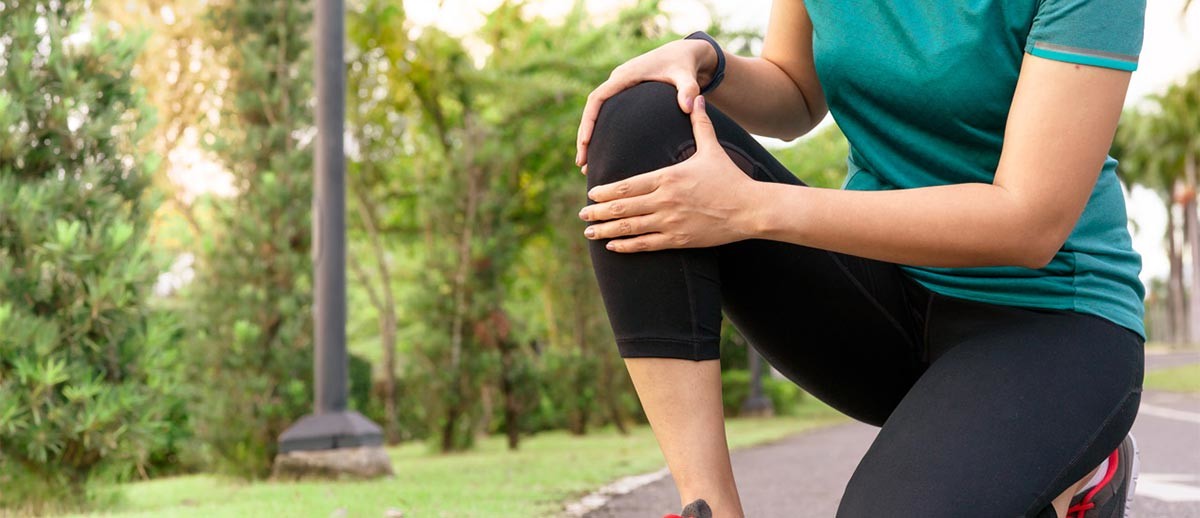
Stretch the Muscles around Your Knees
Before running, make sure to do a light warm-up followed by some stretching. Important muscle groups to focus on if you’re concerned about your knees include the quadriceps, hamstrings and calves. Contracting the opposite muscle group at the same time can help improve your ability to stretch those muscles. For example, while stretching your hamstrings, contract your quadriceps.
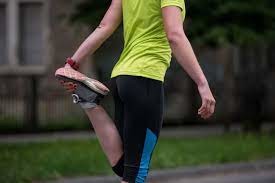
Strengthen Your Leg Muscles and Core
Strengthening is very important, including not only hamstrings and quadriceps, but also the core and glutes. Plyometric strength, which involves jumping or explosive movements, can also contribute to injury prevention. Light weight training twice a week for as little as 10 to 15 minutes can also be very helpful. Exercises to try include squats, lunges, or farmers walk (if you have weights at home).
Use Cold Therapy on Sore Knees
If your knees are sore after a run, try icing them. Sitting in frigid water for five to 10 minutes, or longer if tolerable, is a technique used by many professional athletes. Check with your doctor before attempting this and brace yourself for a cold experience!
Give your Knees a Break
Especially if you are injury prone, it is wise to mix in other forms of cardio into your routine a few times a week. This can help to ease repetitive strain. Cycling is one option. Circuit training is another than you can do from home.
Stay Hydrated
No matter what exercise you do, it is important to stay hydrated for optimal muscle function and health. Make sure to have a tall glass of water before you hit the pavement and immediately after you get home. If taking a long run, make sure to hydrate the day before and avoid alcohol.
(08/30/2021) ⚡AMPby Dr. Robert Marx, MD
Aomori 90+ Relay Team Breaks Two World Records
At a track and field meet over the weekend, a relay team made up of four men in their 90s living in Aomori prefecture set new 90+ age group world records for the 4x100 m and 4x400 m.
Meet organizers are applying to have both records officially ratified. 130 people from age 23 to 92 took part in the Aomori Masters Track and Field Championships on Aug. 29 in Hirosaki, Aomori. Among them were the relay team made up of Aomori natives Matashiro Suruga, 92, Yuzo Kudo, 92, Kozo Mitsuya, 90, and Hiro Tanaka, 90.
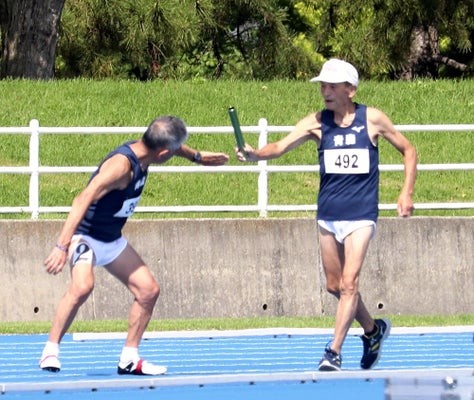
Despite temperatures that rose to nearly 30ËšC, the team members exhibited smooth baton work as they ran 1:43.69 in the 4x100 m. Their time took almost 40 seconds off the previous M90 record of 2:22.37.
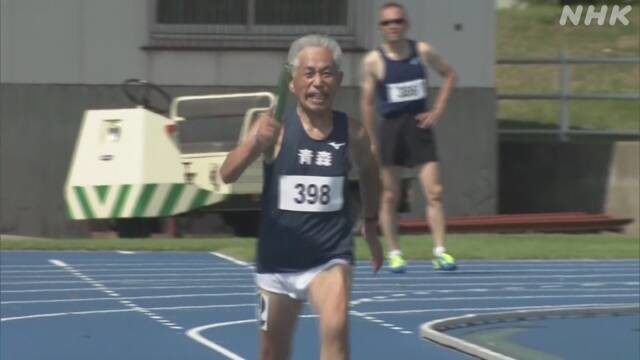
Just two and a half hours later the Aomori team took on the 4x400 m. In front of strong crowd support they clocked 9:56.36, bettering the previous record set by an American team in 2014 by around 2:45. In May this year the same Aomori team had run 8:49.01, but because they were the only team of any age class in the race that performance was ruled ineligible for recognition as a world record. This time organizers were careful to meet all conditions for world record status and will apply to the Japan Masters Athletics Union for certification.
Lead runner Suruga, who has celebrated his 92nd birthday since May's race, commented, "The four of us all worked together to get these records. Running is a lot of fun, and I want to keep doing it until I turn 100."
(08/30/2021) ⚡AMPby Brett Larner
2021 Valencia Half Marathon hopes for new records
The Valencia Half Marathon Trinidad Alfonso EDP, organized by SD Correcaminos, has confirmed the first names of the international elite that will take to the streets of Valencia Ciudad del Running on October 24th.
After the Elite Edition last year in which a new male world record for the distance was set, 57:32 by Kibiwott Kandie, and four runners ran under 58 minutes, the Valencia Half Marathon aims to become the world’s fastest in 2021, all of this without losing sight of the challenge of the women’s world record, currently set at 1:04:02 in the hands of the Kenyan Ruth Chepngetich.
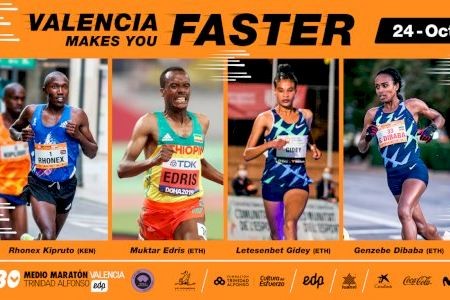
Ethiopia’s Letesenbet Gidey, current 5000m record holder (14:06.62 at the NN Valencia World Record Day in 2020), 10,000 (29:01.03, Hengelo) and 15K record holder (44:20), will try to improve upon her bronze medal in the 10,000m at Tokyo 2020 debuting at the Valencia Half Marathon at a world–class level. Alongside her, the last two winners of the event, Genzebe Dibaba (1:05:18 in 2020) and Senbere Teferi (1:05:32 in 2019), as well as Yalemzerf Yehualaw (1:04:40), third in the last World Half Marathon in Gdynia (Poland), and who improves her personal performance in each new asphalt race she takes part in.
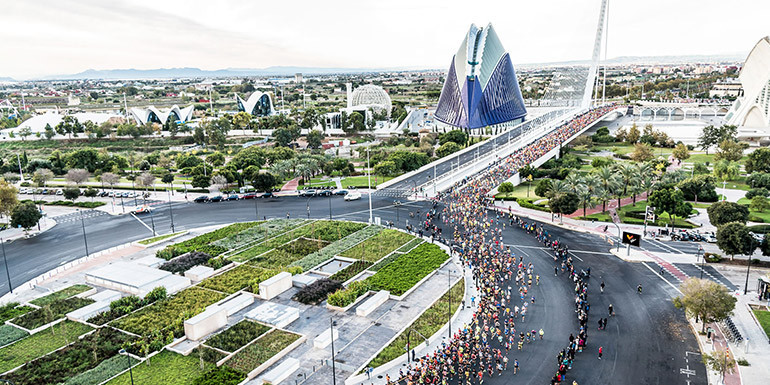
In spite of the immeasurable records that were registered in the men’s category in 2020, with four runners under 58 minutes and the previous world record, the Valencia Half Marathon will also set up a race of an immensely high level in the men’s category. The third classified of the Elite Edition, Rhonex Kipruto (57:49 and the current 10K road world record) will return and the Ethiopian Muktar Edris, double world champion in 5.000m on track and with a time of 59:04 in half marathon, in his only experience in road race. They will be joined by several sub 59-minute runners over the distance and some world-class debutants from the track.
Marc Roig, manager of the international elite of the race, said that “Olympic years always have a special atmosphere, but the calendar does not stop and the half marathon (non-Olympic distance) has other crowns to share out. And they want them, both those who triumphed in Tokyo and those who fell short. That’s why dreaming about the world record is possible and desired.”
The Valencia Half Marathon is working with the teams of the top elite athletes so that their training in the weeks leading up to the event will culminate in an unprecedented peak of performance in Valencia.
(08/30/2021) ⚡AMPValencia Half Marathon
The Trinidad Alfonso Valencia Half Marathon has become one of the top running events in the world. Valencia is one of the fastest half marathon in the world. The race, organized by SD Correcaminos Athletics Club, celebrated its silver anniversary in style with record participation, record crowd numbers, Silver label IAAF accreditation and an atmosphere that you will not find...
more...Nick Butter becomes the fastest man to run around the coast of Britain
Endurance runner Nick Butter has completed his challenge of 200 marathons around the coast of Great Britain. Butter ran 5,240 miles (8,432km), crossing the finish line on Sunday at the Eden Project Botanical Gardens in Cornwall after 128 days of running. Butter has officially become the fastest person to run around the entire coast of Great Britain.
Butter attempted to run 200 marathons in 100 days, but his challenge was delayed due to injuries that arose during the early stages. Butter had to alter his pace from by just doing single marathons each day, and he still achieved the record 28 days over his projected time.
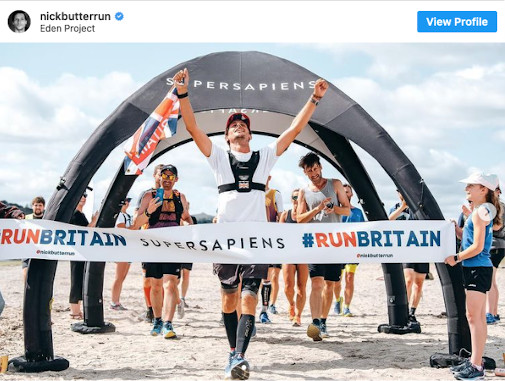
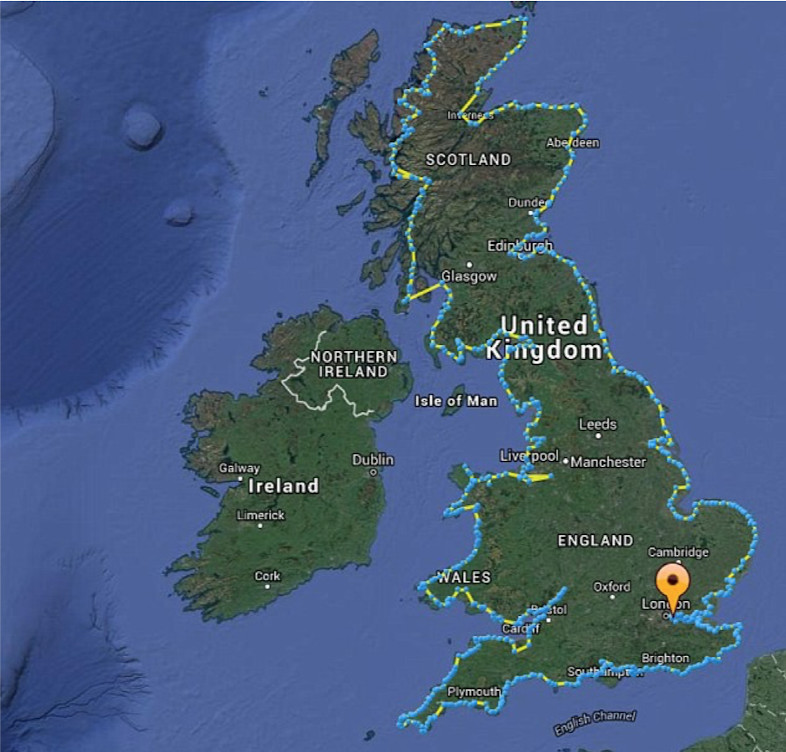
Many Britons have done the trek from Land’s End in Cornwall to Scotland’s John o’ Groats, but Butter is the first man to physically run around Great Britain in 150 days or less. Englishman Wayne Russell did the same trek as Butter in 2016, but his trek took more than twice as long.
Butter has completed huge running projects before, including his Run the World challenge that saw him run a marathon in every country, but this challenge was altogether different. His battle against time forced him to cover 66 km each day.
Butter’s challenge has been raising money for the 196 Foundation, which aims to provide aid to every corner of the world by creating a long-term commitment to help one cause per year.
(08/29/2021) ⚡AMPby Running Magazine
Allie McLaughlin wins Pikes Peak Ascent, then places 2nd in the marathon
2019 U.S. trail running champion Allie McLaughlin had an incredible weekend in Colorado Springs, Colo., winning the Pikes Peak Ascent race on Saturday in 2:49:40. On Sunday, she followed it up with a second-place finish in the Pikes Peak Marathon in 4:38:06.
McLaughlin is a former track and cross-country runner from the University of Colorado, and intended to complete the double last year, but wasn’t able to, due to a fall on the downhill portion of the course. This year she bounced back, completing her goal of the Pikes Peak double, the Ascent (21 km) and marathon on back-to-back days.
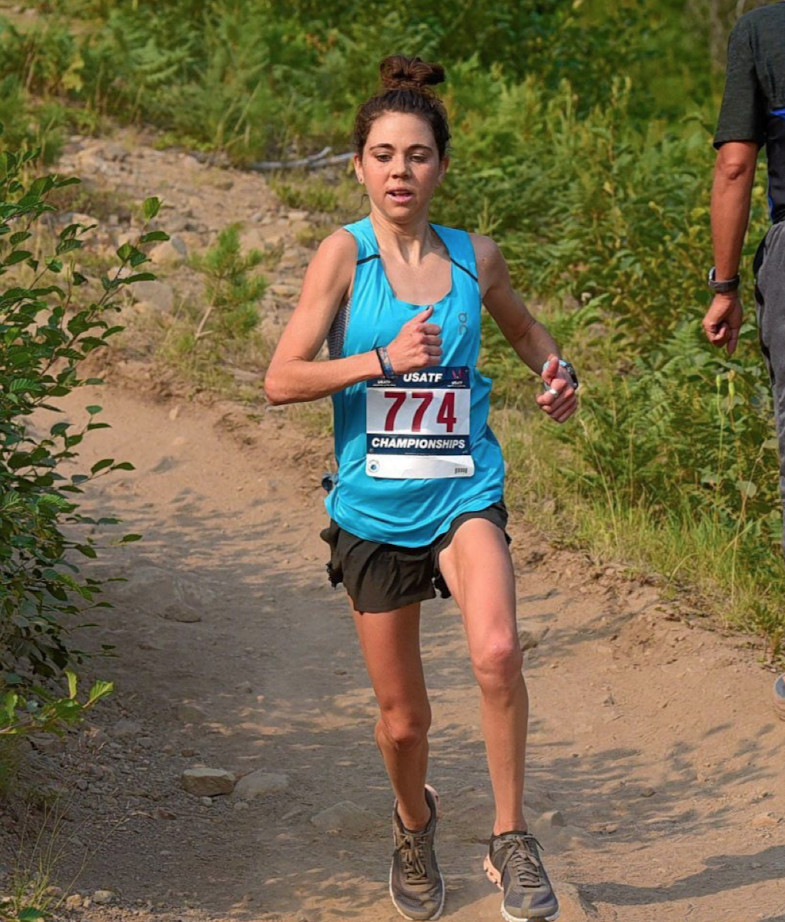
When we asked McLaughlin about her Pikes Peak double, she said, “The key was sticking to my routine and staying relaxed. Both seemed to really help me mentally. I felt way less pressure on the second day and just ran. There were times I could’ve pushed harder but first and foremost I wanted to complete my goal and finish healthy.”
The Ascent and the marathon distances require runners to climb 1,690-metres across 21 km to reach the summit of Pikes Peak.
Trail running veteran Stevie Kremer won the Pikes Peak marathon in 4:34:35. The 2014 Sierre-Zinal champion has made a return to trail racing after becoming a mother in 2018.
In the men’s race, Seth DeMoor won his second straight Pikes Peak Marathon in 3:36:31, setting the record for the masters’ age group. DeMoor decided at the last minute that he try to defend his title. DeMoor is a well-known YouTuber/runner with over 140,000 subscribers, with videos on training, shoes and a glimpse inside his trail races.
Pikes Peak Marathon is the second race in the North American Golden Trail World Series and the next race is at Whistler Alpine Meadows 50K on Sept. 24, in Whistler B.C
(08/29/2021) ⚡AMPby Running Magazine
You’ll Want to Load Up on Vitamin K for Better Heart Health
Add dark leafy greens, broccoli, Brussels sprouts, and avocados to your grocery list ASAP.
Eating a diet rich in foods containing vitamin K can provide a significant protective effect when it comes to your heart health, according to new research.
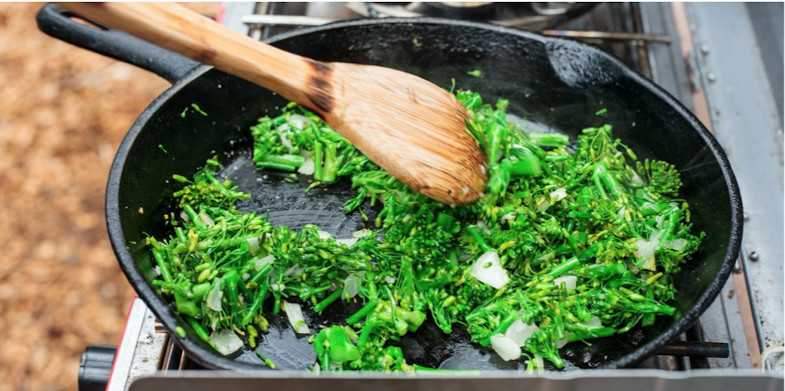
Dark leafy greens, broccoli, Brussels sprouts, and avocados are all rich in vitamin K.
Eating a diet rich in foods containing vitamin K can provide a significant protective effect when it comes to heart health, according to new research in the Journal of the American Heart Association.
Researchers looked at dietary data from more than 50,000 people taking part in a decades-long study in Denmark. They found that those who ate more foods high in vitamin K had a 21 percent lower risk of developing atherosclerotic cardiovascular disease than those who ate the lowest amounts.
The effect was highest among those who consumed green leafy vegetables and vegetable oils, which have a form of the vitamin called K1, according to lead author Nicola Bondonno, Ph.D., a research fellow at the Institute for Nutrition Research, at Edith Cowan University in Australia. But, she told Runner’s World, there was also lower risk among those who ate foods high in a form called K2, found in animal products and fermented foods.
Although it’s possible to get a boost of vitamin K through taking supplements—much as you can isolate other vitamins or minerals in the same way—previous studies on supplements in general cast doubt on whether this is the best route.
For example, a 2019 research review looked at both observational studies and randomized trials on multivitamins, antioxidants, folic acid, vitamin E, folic acid, and beta-carotene, which have all shown promise for cardiovascular health. But researchers found little evidence that any of them aided in prevention or treatment of cardiovascular disease.
Getting these compounds through food, however, is a very different story. That’s because dietary sources not only have a range of vitamins, they also tend to have fiber, antioxidants, and healthy fats, which all work together to improve your heart function, according to Robert Greenfield, M.D., medical director of non-invasive cardiology and cardiac rehabilitation at MemorialCare Heart & Vascular Institute at Orange Coast Medical Center.
For instance, foods high in vitamin K—such as dark leafy greens, broccoli, Brussels sprouts, and avocados—are also abundant in other vitamins and minerals that benefit the heart, Greenfield told Runner’s World. Those include iron, magnesium, and zinc. Meats and dairy high in vitamin K—such as beef liver, chicken, and hard cheeses—also provide protein and healthy fats. Greenfield added that vitamin K is fat soluble, which means you need a bit of fat for proper absorption, so dietary options may be an advantage there as well.
One more benefit to getting vitamin K in your diet: It doesn’t take much effort to see benefits. In the recent study, those who had more of the vitamin didn’t see greater benefits, said Bondonno. So, adding options like chard or spinach to a meal every day is likely enough of a heart booster, she said.
“The multitude of bioactive compounds in vitamin K-rich vegetables can protect you against other chronic diseases in many different ways,” she said. “And the takeaway is that they help protect against cardiovascular disease as well.”
(08/29/2021) ⚡AMPby Runner’s World
Thousands race in 'Rock the Parkway' 5K benefiting Children's Mercy
More than 3200 people ran on Saturday morning in Kansas City, Missouri, for a good cause.
Rock The Parkway brought many people out to run in either a half marathon or 5K, with proceeds going to Children’s Mercy Hospital.
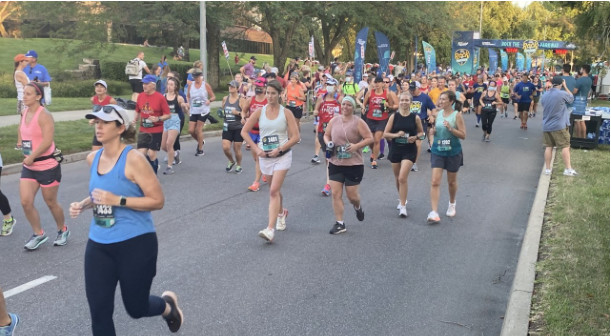
A spokesperson for the run said this year they had about half the amount they had in years past.
The course goes along Ward Parkway and according to run organizers “It has been voted a Best Race Course by area runners, year after year.”
This is the 12th year of Rock The Parkway.
(08/29/2021) ⚡AMPThe TransRockies Golden Ultra cancelled
The TransRockies Golden Ultra race, one of Canada’s toughest trail races, has been cancelled this year due to the mandating of organized events set by the British Columbia government.
The Golden Ultra was supposed to take place on Sept. 17-19 in Golden, B.C. but as of Aug. 23, the B.C Interior Health Region stated that all outdoor organized events will be limited to under 100 people for one month to stop the spread of COVID-19.
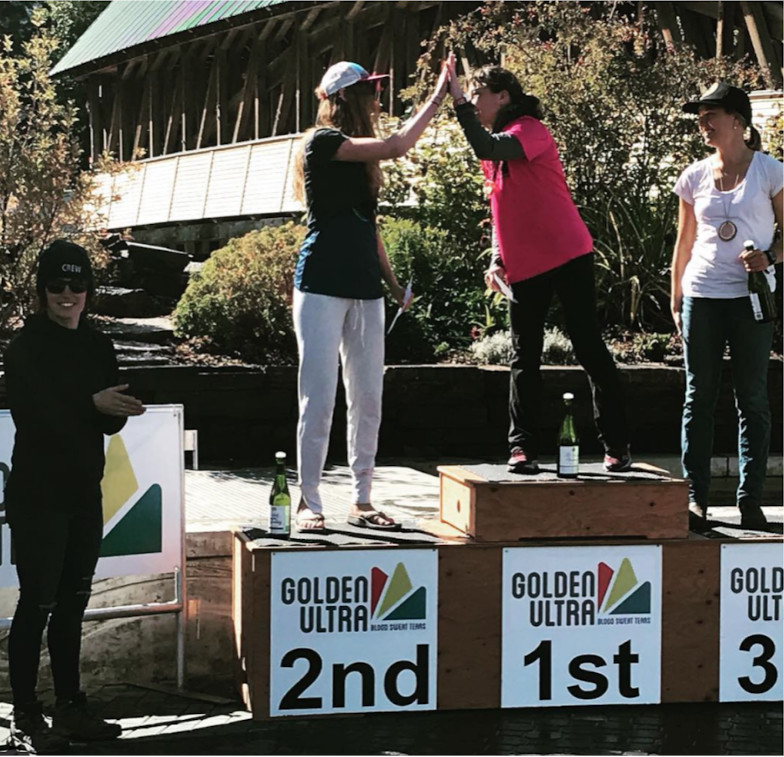
Race organizers did everything they could to try to make this event happen, but the public health mandate does not allow large gatherings, and this event cannot operate without all its volunteers and athletes.
Information on the 2022 event will be updated over the next couple of days. All of the 2021 registrants will be deferred to the 2022 event with no penalty.
(08/29/2021) ⚡AMPby Running Magazine
Yehualaw smashes world half marathon record in Larne
Ethiopia’s Yalemzerf Yehualaw took 18 seconds off the world half marathon record, running a remarkable 1:03:44* at the Antrim Coast Half Marathon, a World Athletics Label Road Race, in Larne, Northern Ireland, on Sunday (29).
Yehualaw becomes the first woman to break 64 minutes for the half marathon, with her mark improving on the 1:04:02 world record which had been set by Kenya’s world marathon champion Ruth Chepngetich in Istanbul on 4 April.
Yehualaw had been second in that race in Istanbul, running 1:04:40, but this time her dominant performance saw her win the women's race by six minutes ahead of Kenya’s Jane Nyaboke (1:09:45). Britain's Rose Harvey was third (1:10:29) and Georgie Schwiening fourth (1:11:13), with Northern Ireland's Fionnuala Ross (1:13:10) and Ann-Marie McGlynn (1:13:13) fifth and sixth respectively. Yehualaw's time placed her ninth overall.
Paced by Roy Hoornweg and Mohamed Ali, Yehualaw was part of a pack of runners which went through the 5km mark in 15:05 and hit 10km in 30:22. Turning to run back along the coast, Yehualaw passed the 15km mark in 45:24 looking comfortable and continued to push on, eventually crossing the finish line full of emotion, with 1:03:44 on the clock.
“This was a dream come true for me,” said 22-year-old Yehualaw. “I have tried twice before to break the world record but it didn’t happen, but I’m so happy it happened today in Larne.”
The performance would have meant even more to Yehualaw after she finished fourth in the Ethiopian Trials 10,000m and did not make the team for the Olympic Games in Tokyo. She was also left motivated after her third-place finish at the World Athletics Half Marathon Championships in Gdynia last October.
“At the World Half Marathon Championships I was trying to win gold but it didn’t happen,” Yehualaw added. “But today I’m so happy.”
Coached by Tessema Abshero as part of the NN Running Team, Yalemzerf made her international debut in 2019 when she won the Rabat Half Marathon in 1:09:13. Returning to Rabat four months later, she won the African Games title and then finished second at the Delhi Half Marathon.
Her bronze medal win at the 2020 World Half Marathon Championships was followed by victory in Delhi, where her winning time of 1:04:46 was then the second-fastest ever women’s time on a record-eligible course. In Istanbul in April she improved to 1:04:40 which put her third on a world all-time list since rewritten thanks to her 1:03:44 in Larne.
It was an Ethiopian double in Larne as national record-holder Jemal Yimer won a close men's race in 1:00:30 ahead of his compatriot Tesfahun Akalnew (1:00:31) and Kenya's Shadrack Kimining (1:00:32).
A lead group of four had broken away early on and Kimining led Britain's Marc Scott, Yimer and Akalnew through 10km in 28:53. Kimining remained to the fore as the group passed 15km in 43:29 but as the race came down to a sprint finish it was 2017 world 10,000m fifth-placer Yimer who had the strongest kick and he held off Akalnew by a single second, with Kimining just another second behind. Scott finished fourth in 1:00:35 and Nigel Martin fifth in 1:03:22, with Ireland's Ryan Creech sixth in 1:03:26.
"I am happy with my win," said Yimer. "I had prepared for a course record but due to the wind and the circumstances I didn’t make sub-60 but I am happy with the win."
(08/29/2021) ⚡AMPFrancois D'haene claims his fourth victory at UTMB
Frenchman Francois D’haene delivers once again in the Alps, achieving his fourth victory at Ultra-Trail du Tour Mont Blanc. D’Haene finished in 20 hours and 45 minutes to cover the 170km course, climbing over 10,000m up and down the valleys of Mont Blanc.
This is D’haene’s fourth win in his fourth attempt at UTMB. He now single-handedly holds the record for most wins since the race began in 2003, passing Spain’s Kilian Jornet who holds three.
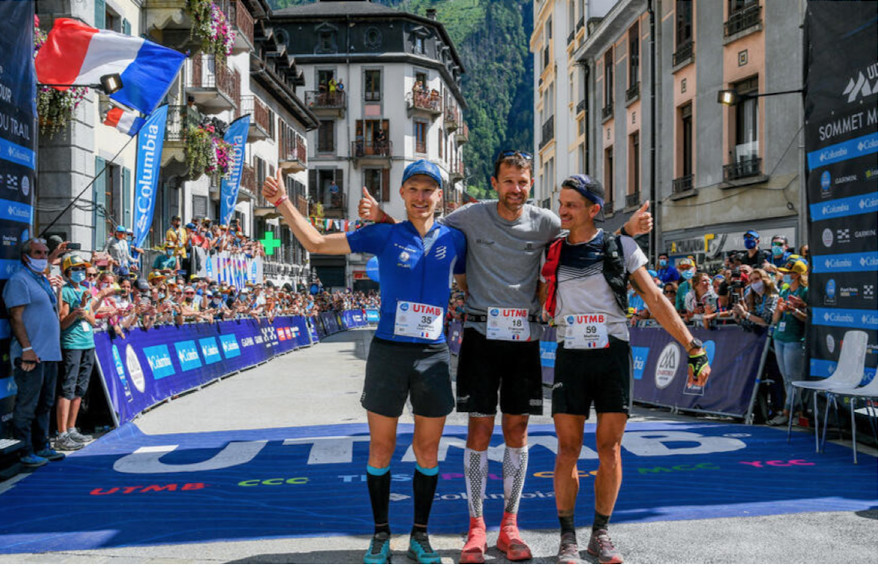
D’haene lead since the first breakaway and started a second breakaway group with American Jim Walmsley, as they began the climbing in Italy, D’haene dropped Walmsley and charged on towards the finish line. Walmsley dropped out of the race after failing to stay on pace with D’haene.
French-Canadian, who lives and trains around Montreal but was born in France, Mathieu Blanchard finished third to round out the podium. This marks the highest finish by a Canadian ever at UTMB. Aurélien Dunand-Pallaz of France was second to round out the French sweep of the podium, for the first time in history at UTMB.
In the women’s race, it was American Courtney Dauwalter who rose to glory. Dauwalter won the previous edition of the race, becoming the third woman to successfully defend her title on the hills of Mont Blanc. Dauwalter broke fellow American Rory Bosio’s course record finishing in 22 hours and 30 minutes. Dauwalter finished seventh in the overall standings, the highest finish ever by a woman.
(08/28/2021) ⚡AMPNorth Face Ultra Trail du Tour du Mont-Blanc
Mountain race, with numerous passages in high altitude (>2500m), in difficult weather conditions (night, wind, cold, rain or snow), that needs a very good training, adapted equipment and a real capacity of personal autonomy. It is 6:00pm and we are more or less 2300 people sharing the same dream carefully prepared over many months. Despite the incredible difficulty, we feel...
more...Stephen Scullion and Paul Pollock ready for big guns in Antrim Coast Half Marathon
Tokyo Olympians Stephen Scullion and Paul Pollock will spearhead the local challenge against a star-studded international field in the Antrim Coast Half Marathon on Sunday.
Sir Mo Farah - who won the 5,000m and 10,000m double at both London 2012 and Rio 2016 before missing out on Tokyo qualification - is unable to defend the inaugural title he won last year in a time of one hour and 27 seconds due to injury but will be at the event as race starter and will also carry out media and ambassadorial roles. Sir Mo said: "I can't wait to be involved this time around, especially with the kids race.
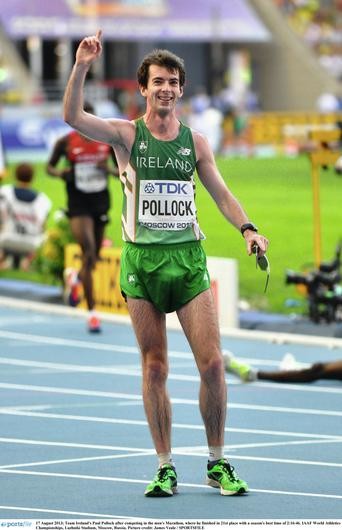
I aim to be back for another crack at the race next year." Big-race organiser James McIlroy - an 800m semi-finalist at the 2000 Sydney Olympics and who roomed with Sir Mo on Team GB trips - feels it will be one of the strongest half marathon line-ups ever seen on these islands.
"It promises to be one of the greatest half marathons ever assembled in the UK or Ireland with 53 men and 25 women taking to the start. With three full national teams confirmed, and runners from Africa, America, Europe, UK and Ireland, this year’s first ever World Athletics event in the province promises to be one of the leading road races in the world for 2021," said the Larne man, grandson of Belfast Celtic legend Sid McIlroy.
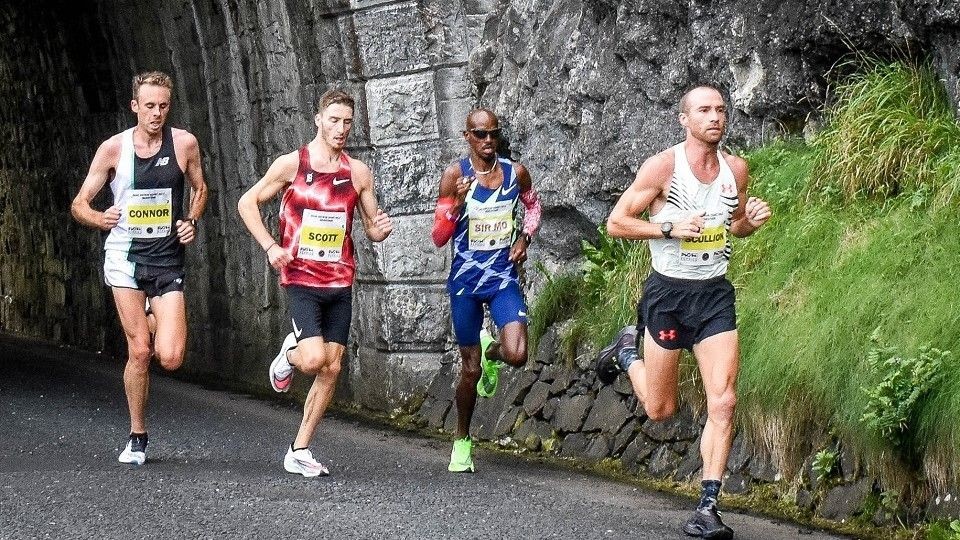
In addition to boasting 11 Olympians, headlining the men’s race will be Ethiopian record holder Jemal Yimer. Yimer won his last half marathon outing at the Houston half marathon in 2020 and has also achieved the fastest ever debut half marathon in 59:00 achieved in R’as al Khaimah in the UAE back in 2019.
He will be joined by countryman Tesfahun Akalnew, who has a personal best of 59:22, previously finished second in the African Games and comes to the Antrim Coast with strong runs in 2020, finishing fifth in the Barcelona Half Marathon and sixth in New Delhi. Completing the African trio will be Shadrack Kimining, winner of the 2016 Cardiff Half Marathon and in Gothenburg in 2018 and 2019.
Leading the UK and Ireland challenge will be Tokyo Olympians Scullion, Pollock and Marc Scott, the latter the two-time European record holder and second fastest all-time Briton behind Sir Mo over 10,000m. On Sunday Scott will seek to become only the second Briton to break the 60-minute barrier.
Belfast ace Scullion finish fourth in last year’s race on the way to setting a new Northern Ireland record of 61.12. Pollock, fresh from his second Olympics, will make his debut on the fast scenic course and should also threaten the top positions.
Barcelona Olympian and multiple World record holder Tommy Hughes will have huge crowd support as he makes his latest bid on the Vet +60 World record, which he smashed at last year’s race in a time of 71.09. McIlroy added: "With full strength teams from Ireland, England and Northern Ireland, we may well see the first ever sub-60-minute half marathon in Ireland." The women’s race is headlined by Ethiopian sensation Yalemzerf Yehualaw.
The 22-year-old finished third in last year’s World Half Marathon Championship after tripping on the finishers mat, and has targeted the Antrim Coast's fast course since lthe inaugural event last September. The elite race starts at 8.00am in Larne with the mass participation event - cancelled last year due to the Covid pandemic - starting at 9.30am. There will be live coverage on the BBC.
(08/28/2021) ⚡AMPby Frank Brownlow
MEA ANTRIM COAST HALF MARATHON
The MEA Antrim Coast Half Marathon 2022 has been approved by World Athletics as an Elite Event. The World Athletics certified course takes in some of the most stunning scenery in Europe, combined with some famous landmarks along the route. With it's flat and fast course, the race is one of the fastest half marathons in the world. Starting...
more...Hartford Marathon Foundation Encourages Community To Lace Up for Social Justice
To celebrate the diverse backgrounds and unique experiences of those that participate in its race events, the Hartford Marathon Foundation today launched the Lace Up for Social Justice initiative. Proceeds from the sale of $10 commemorative shoelaces will directly benefit the Boys & Girls Clubs of Hartford Diversity, Equity and Inclusion programs.
Adorned in a rainbow of colors reading "I RUN FOR SOCIAL JUSTICE", the shoelaces are on sale now through the HMF Shop, at upcoming HMF and Boys and Girls Clubs events and through registration for HMF's signature race, the Eversource Hartford Marathon and Half Marathon. Participants are encouraged to wear their laces proudly on race day, Saturday, October 9.
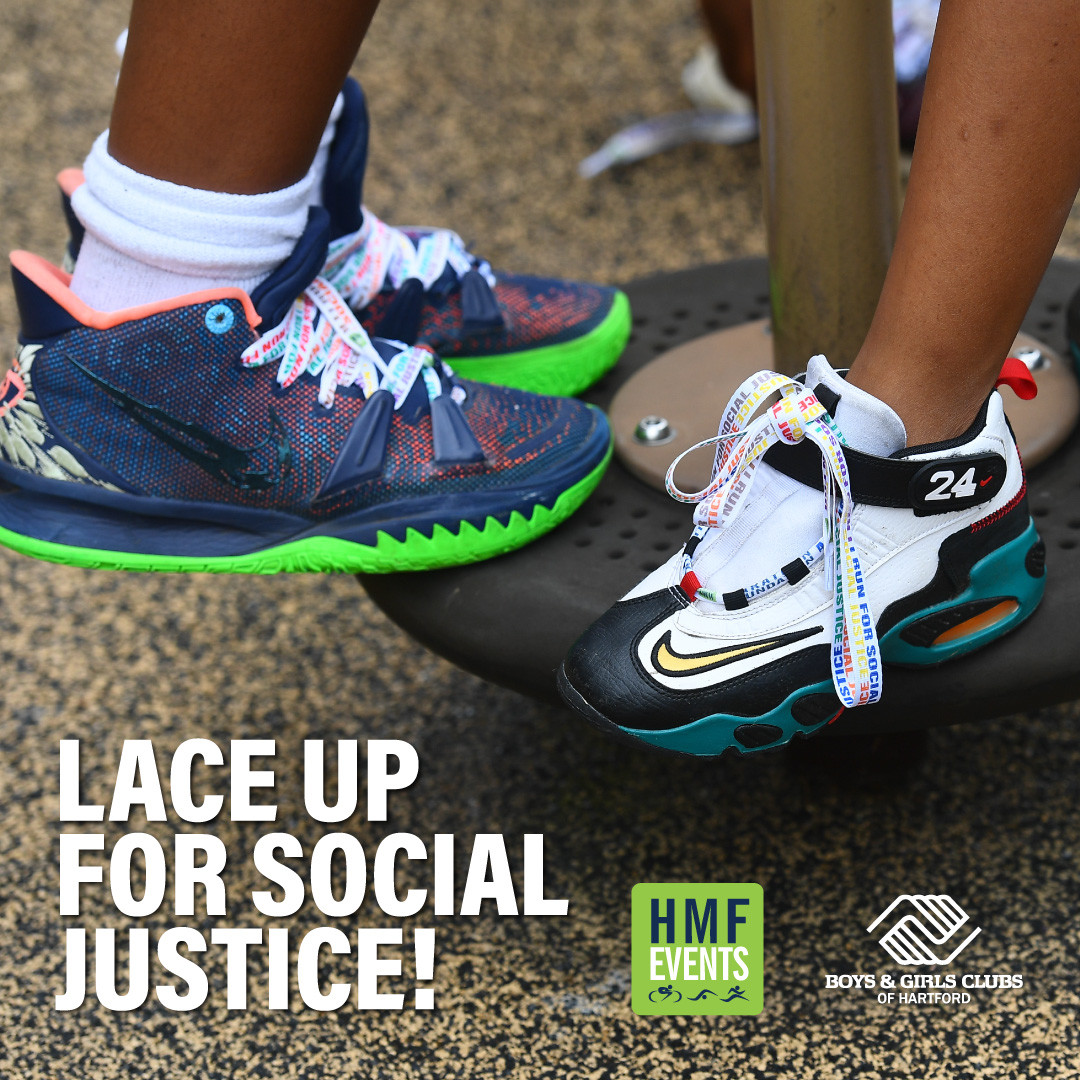
The Lace Up campaign runs in conjunction with the marathon's "Run United" theme for 2021, which is being celebrated through a special HMF FitKids running event on Saturday, October 2. Local youth will have the memorable experience of finishing a race under the iconic Soldiers Sailors Memorial Arch and crossing the grand finish line of the Eversource Hartford Marathon. A replica of the Black Lives Matter mural that is painted on Trinity Street in Hartford will also be unveiled along the sideboards of the finish line.
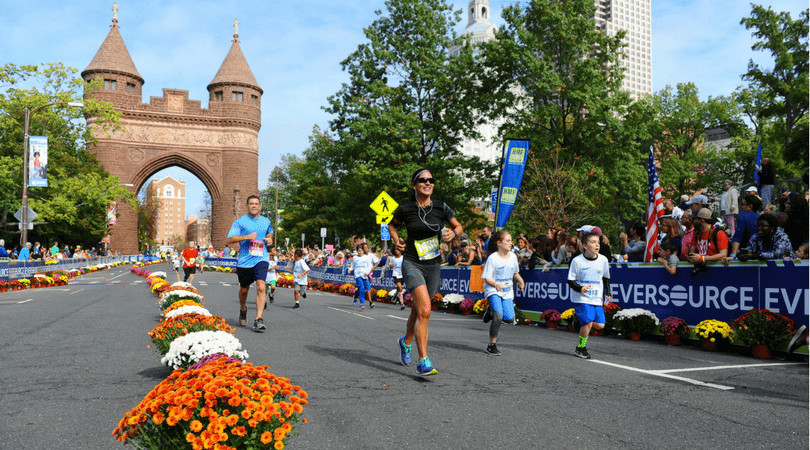
"We are proud that the events we produce welcome people from all walks of life to achieve goals and we celebrate each and every one of their accomplishments equally - that's no more evident than at the Eversource Hartford Marathon," said Beth Shluger, President and CEO of the Hartford Marathon Foundation. "We want to honor that social responsibility and raise funds for the incredible resources available through the Boys & Girls Clubs of Hartford to foster a more caring, accepting and equitable future for our youth."
"The Boys & Girls Clubs of Hartford are proud to be a part of the Eversource Hartford Marathon Lace Up for Social Justice Campaign. Now more than ever, our Boys & Girls Diversity, Equity and Inclusion programs are so important. We believe all young people should be afforded the guarantee of fair treatment, access and opportunity," said Samuel S. Gray, Jr., President and CEO of the Boys & Girls Clubs of Hartford.
In addition to the Lace Up campaign to raise funds for the benefit of the Boys & Girls Clubs of Hartford, the Eversource Hartford Marathon, Half Marathon, Team 13.1 Relay and Charity 5K will continue to benefit additional worthy causes in the community. The Official Charity program for the October 9 race features 19 organizations committed to rallying participants, supporters and volunteers to raise funds and awareness. More than $8.2 million has been raised for charity through the Eversource Hartford Marathon and Half Marathon since its inception in 1994.
Purchase laces, learn more about Official Charities or register for the Eversource Hartford Marathon events at www.hartfordmarathon.com.
(08/28/2021) ⚡AMPEversource Hartford Marathon
Be part of the biggest race day in Connecticut. Where runners, families, charities and volunteers come together in an inspiring display of community spirit. Enjoy a top-notch experience, from expo to post-race party: A plethora of resources and expertise. High-energy crowds. Pomp and circumstance filling the streets. Thorough course amenities, including fuel, pacers, security and medical services. Festive celebration with...
more...It is Going to Be a Busy 7 Weeks With All 6 World Marathon Majors Taking Place
For the first time ever, all six World Marathon Majors will be contested in the fall of the same year. Due to postponements caused by COVID-19, the Berlin, London, Tokyo, Chicago, Boston, and New York City marathons are all scheduled to take place within a seven-week timeframe.
For many athletes, these marathons will be their first 26.2 since the onset of the pandemic, and they’ve set big goals for the return of the sport.
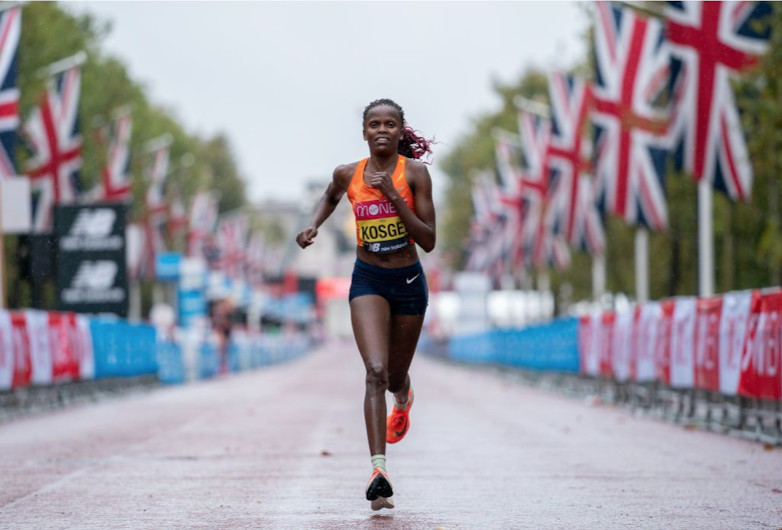
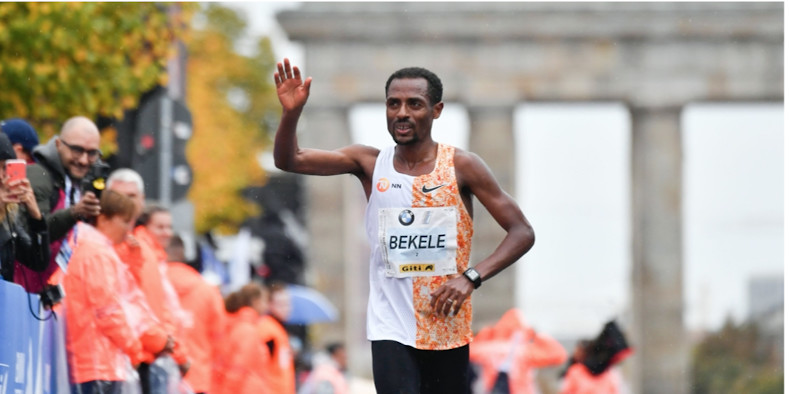
Between runners doubling in events to some chasing national records, the best marathoners in the world are taking full advantage of these highly anticipated competitive opportunities. Here, we outlined some quick takeaways and storylines we’ll be watching based on the early elite field announcements. (And we’ll keep this list updated if and when top runners throw their name into one of these amazing fields!)

Berlin Marathon—Sunday, September 26
MEN:
Kenenisa Bekele, Ethiopia (2:01:41)
Right now, the only elite runner confirmed for the Berlin Marathon is Kenenisa Bekele. Berlin will be the first of two marathons in 42 days for the Ethiopian runner, who is also scheduled to race the New York City Marathon on November 7, a grueling double that will mark Bekele’s first races since March 2020.
As three-time Olympic champion told Sports Illustrated, he is ready for the challenge.
“For a whole year, I couldn’t race and it’s been really difficult for athletes,” Bekele said. “I want to take this chance and see what is possible.”
London Marathon—Sunday, October 3
Eight weeks after winning silver at the Tokyo Olympics, Brigid Kosgei aims to defend her title in London. The world record-holder from Kenya will be going for her third consecutive victory in London against a stacked field that includes defending New York City Marathon champion Joyciline Jepkosgei and two-time Tokyo Marathon winner Birhane Dibaba.
On the men’s side, Shura Kitata will also be looking to defend his title in London after a disappointing performance in Tokyo. The Ethiopian standout struggled in the heat during the Olympic marathon in Sapporo and dropped out of the race, but he’s aiming for redemption on a course where he experienced a breakthrough last year.
“I was disappointed to have to pull out of the Olympic Games Marathon, but I just did not adapt to the weather well,” Kitata told World Athletics. “It was very cold in Ethiopia prior to leaving for Tokyo and when we got there the weather took its toll on my body and made my breathing very hard. But I’m healthy and looking forward to racing in the Virgin Money London Marathon again. I am preparing very well and my coach has me very ready to defend my title in London.”
Chicago Marathon—Sunday, October 10
Almost a year after she nearly broke Deena Kastor’s American marathon record, Sara Hall is gearing up to again chase the elusive time set 15 years ago. In Chicago, Hall aims to continue her breakthrough streak, which started during the 2020 COVID-adjusted season, and run under the record of 2:19:36.
“It has been too long since I’ve been back, and when I thought about where I wanted to chase the American record, I thought it would be more exciting to do it at home, in the U.S., and Chicago is such an epic race,” Hall said in a statement. “I’m really excited to have my best marathon yet on U.S. soil.”
After dropping out of the 2020 Olympic Marathon Trials, Hall made an impressive comeback with a runner-up finish at the London Marathon last October, and a victory at the Marathon Project in December. Hall’s winning time of 2:20:32 is her personal best and the second-fastest performance ever by an American woman.
Hall will have stiff competition up front with Ruth Chepngetich in the field. The Kenyan marathoner set the half marathon world record in April. She had an off day at the Tokyo Games and dropped out of the marathon around the 20-mile mark. Chicago will be the 2019 world champion’s first major marathon since the Olympics and her first race on U.S. soil.
Another American to watch will be Keira D’Amato; she made headlines in 2020 with huge improvements on the track and the roads, which helped her land her first professional contract with Nike at 36 years old. D’Amato was expected to be an Olympic team contender in the 10,000 meters, but she withdrew from the U.S. Olympic Track and Field Trials, citing a hamstring injury. The Chicago Marathon will be D’Amato’s first race since February.
Galen Rupp, who placed eighth in 2:11:41 at the Tokyo Olympics on August 8, is returning to race the marathon in Chicago. This marathon holds some significance for Rupp, who became the first American male athlete since Khalid Khannouchi to win the race in 2017. The last time he competed in the Windy City was during his comeback to the sport after having Achilles surgery. In the 2019 race, he dropped out just before the 23-mile mark, but he’s looking to improve this time around.
“My goal is winning,” Rupp said in a statement. “I want to come back and win. 2019 left a sour taste in my mouth. I didn’t finish that race so I cannot wait to get back out there and come back stronger than ever. It has been a wild ride since then. I’m healthy, I’m happy, and it’s going to be tremendous to come back.”
Boston Marathon—Monday, October 11
Boston will have one of the deepest elite fields on the women’s side with nine women who have run under 2:22, including Olympic bronze medalist Mare Dibaba and 2017 Boston Marathon winner Edna Kiplagat.
The race will also be Des Linden’s first of two marathons this fall. The 2018 Boston Marathon champion is entered in the New York City Marathon on November 7, a shorter than normal timeframe between major marathons. Boston will be Linden’s first major marathon since she finished fourth at the 2020 Olympic Marathon Trials. This spring, Linden set the 50K world record by averaging 5:47 pace for more than 31 miles.
Fellow Americans Jordan Hasay and Molly Huddle will also be returning to Boston after the event took a two-year hiatus due to the pandemic.
​
In the men’s field, several past podium finishers are making their return to Boston, including Kenyan standouts Wilson Chebet, Felix Kandie, and Paul Lonyangata. A large American contingent will be led by four-time Olympian Abdi Abdirahman, who finished 41st in the marathon at the Tokyo Games. Including Abdirahman, eight of the top 12 finishers from the U.S. Olympic Marathon Trials are scheduled to compete.
New York City Marathon—Sunday, November 7
The field assembled for the women’s race, especially the American contingent, is the most stacked marathon of all the fall races. Tokyo Olympians Molly Seidel, Sally Kipyego, and Aliphine Tuliamuk are all slated to return to competition in the Big Apple after representing Team USA in Sapporo.
Fellow podium finisher Peres Jepchirchir of Kenya is also returning to the distance after dominating the marathon to win gold in her first Olympic Games. She has the fastest personal best among the field after running 2:17:16 in Valencia last year. Including Jepchirchir, the New York City field includes four women who have run under 2:21.
Outside of the Olympic team, a handful of the top Americans are also gearing up for fast times in the city. Emily Sisson, Kellyn Taylor, Stephanie Bruce, Roberta Groner, and Laura Thweatt are scheduled to compete. And Des Linden will be racing her second marathon of the fall after competing in Boston on October 11.
Along with Bekele’s double, Abdi Nageeye’s performance will draw fans in to watch the men’s race in New York City. The runner from the Netherlands secured a silver medal in the Tokyo marathon by crossing the finish line in 2:09:58, a huge improvement from his 11th-place finish in Rio. He’s finished in the top 10 twice at the Boston Marathon, but this fall will mark his debut in New York City and he’s feeling confident in his chances.
“For me, winning the silver medal in the Olympic Games was not a surprise,” Nageeye said in a statement. “There were many good athletes in the race, but I knew my preparation had been good. I was ready for the conditions, and most importantly I believed in myself. I will take that same focus into my preparations for New York, and my belief and confidence in my abilities is even higher than it was in Sapporo. There is nothing I want more than to bring a New York City victory back home along with my Olympic medal.”
There will also be a couple of highly anticipated marathon debuts, including Kibiwott Kandie and Ben True. Kandie is the half marathon world record-holder and a world championships silver-medalist. True will be aiming for redemption after finishing fourth in the 10,000 meters and narrowly missing out on making Team USA at the Olympic Trials in June.
(08/28/2021) ⚡AMPby Runner’s World
New documentary "Kipchoge" offers intriguing look at marathoner's skill but doesn't go the distance
Filmmaker Jake Scott honors the Kenyan distance runner, including theories about his speed, but comes up short
On October 12, 2019, the Kenyan distance runner, Eliud Kipchoge, set out to run a marathon in under two hours. On a specially designed, closed course in Vienna, with the assistance of a group of pacers, as well as a pair of Vaporfly Nike sneakers, this elite athlete ran non-stop at the speed of approximately 13 miles per hour for 1 hour 59 minutes and 40 seconds to achieve this incredible feat.
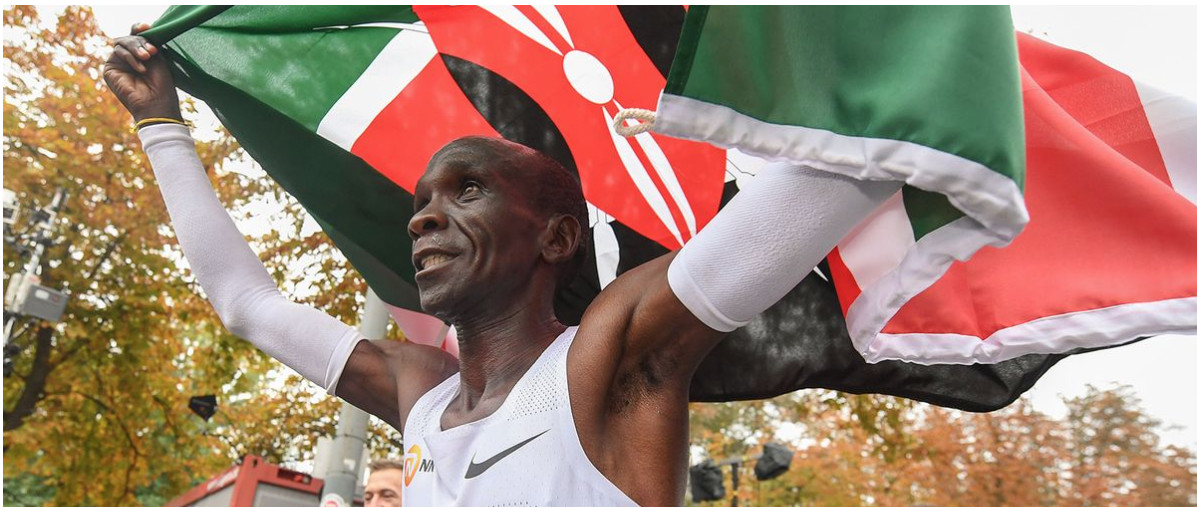
The new documentary, "Kipchoge: The Last Milestone," directed by Jake Scott (son of Ridley, who executive produced) profiles the marathoner and provides some background on the event as well as scenes from the race itself. While there is no doubt that Kipchoge's story is inspiring (even if the ending is known), the film is oddly underwhelming.
The first section of the documentary is pure hagiography. Kipchoge is humble. Kipchoge is disciplined. Kipchoge is dedicated. Kipchoge is seen training and mentoring young runners. None of this is bad — or in doubt — but Scott shoots it all like one of the many glossy music videos that he built his career on. There is angelic music on the soundtrack and slow-motion scenes of Kipchoge running. Yes, he's absolute poetry in motion "floating" while moving at an incredible speed, and the balletic quality of his athleticism is glorious. But the film offers mostly soundbites of Kipchoge offering in platitudes about how a marathon is like life — full of pain and joy. He also repeats his mantra, "No human is limited."
The film certainly leaves viewers wanting to know more about its exceedingly likeable subject. His childhood is glossed over. He grew up with a single mother, a kindergarten teacher, who taught him discipline. He took to running after seeing his neighbor, Patrick Sang, compete. Sang, who became the athlete's coach, explains (as do others) that Kipchoge is "strong mentally," and blocks pain to perform his superhuman feats. (It isn't until midway through the race, an hour or so into the film, that it is revealed Kipchoge has a wife and daughter).
There are discussions of high-altitude running, and pain thresholds. But what his seven months of preparation for the two-hour marathon entail are largely unexplored. What is his diet like? How much does he run a day or week? Kipchoge mentions the pressure he faces near the end of the film, but that pressure is never felt.
Much of the documentary seems to be lacking depth. At one point, the film considers why Kenyans run so fast. A historical tidbit presented in "Kipchoge" suggests that the Kenyans were challenging the regime at the colonial government's Empire Games. But other theories suggest the genetics and the environment are responsible. (Moreover, running prowess is not exclusive to Kenya; the 2012 documentary "Town of Runners" explored Ethiopian Olympic athletes).
The bulk of Scott's film focuses on the historic Vienna event. After running a marathon in 2:03:05 at Monza, Kipchoge hopes to shave three or more minutes off his race. To do this, he will perform at an optimal location (the closed course in Vienna) with a road designed to help his performance. He even runs with pacers who, as the film shows in one of its most interesting segments, create a Y-formation that creates an air pocket that reduces wind drag, thereby allowing Kipchoge to run faster. In what may be an overly detailed metric, a nutritionist analyzes how much water Kipchoge drinks by the amount left in a bottle he sipped from and discarded during his run.
These and other scientific efforts used in this controlled event certainly enhance Kipchoge's efforts, which may be troubling for purists, but the artificial environment does not necessarily detract from the marathoner's achievement. If Kipchoge performed the same feat on a treadmill, would it be any less valid? Scott shows how difficult it is for two runners to match Kipchoge's 13 mph pace on a treadmill for 68 seconds (how long it can take to run 400 meters, or one lap on a track field). Doing the math, Kipchoge is running at or above this same pace 105 times in a row without a break!
This is amazing, and the behind-the-scenes information can be interesting, but not always. The mission control elements work overtime to emphasize drama, as when someone indicates the timekeeping may be inaccurate. The color commentary is occasionally inane; the changing of Kipchoge's pacers is likened to a NASCAR pitstop. That said, it is nice to see occasional shots of Kenyans cheering the runner on from afar as well as the crowds in Vienna rallying in supports of their hero. (Kipchoge, ever the class act, acknowledges how much the cheering crowds mean to him).
Scott, however, has an irritating penchant to frequently cut away from the race and focus on various talking heads, rather than on the film's subject. At least he does not fumble the final minutes of the race, even if they are shot in clichéd slow motion.
Ultimately, it might be more thrilling to just watch Kipchoge run for two hours than watch "Kipchoge."
(08/28/2021) ⚡AMPKipchoge reveals his next goal after leaving marathons
Kipchoge has been recognised the world over as the epitome of limitless possibilities.
Marathon legend Eliud Kipchoge has revealed that he intends to push his body further than the 42km marathon which he has won over 10 times.
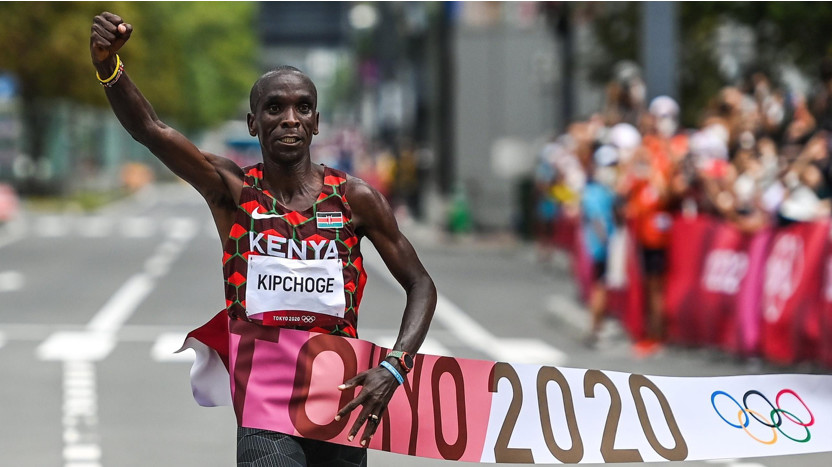
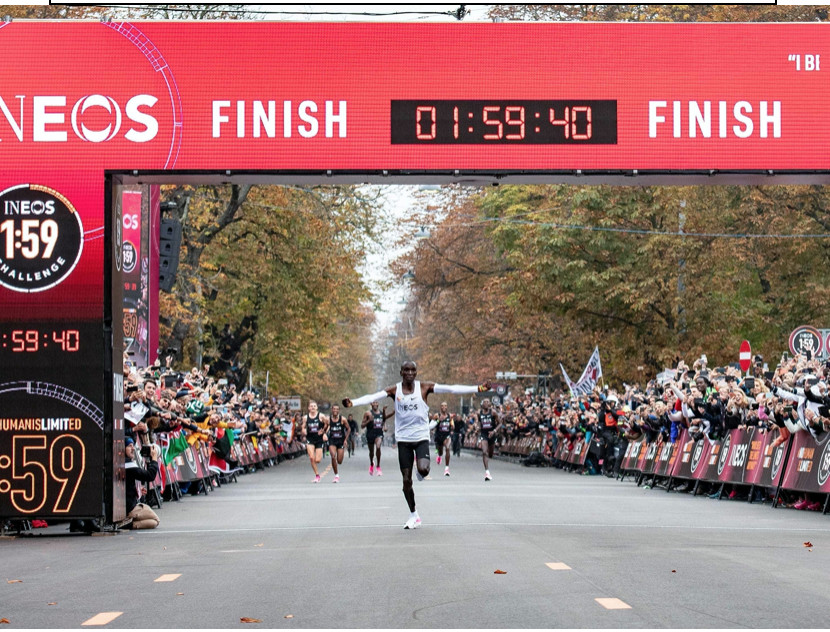
In a recent interview with author and athletic enthusiast Rob Steger, Kipchoge said his next goal after leaving marathons would be the ultra marathon.
"After leaving the marathon, I want to run the ultramarathons just to feel how it is. Running for more than 4 or 5 days or even run at once for 70 kilometres. I really want to feel the pain of running for a long time,” Kipchoge said.
The 36-year-old has been recognised the world over as the epitome of limitless possibilities, having beat the sub-2-hour mark in 2019.
Kipchoge’s timing of 1:59:40 isn’t officially recognised as a world record as the conditions—a straight and even track, a battery of world-class pace-setters and special shoes, among others—were carefully chosen to propel him towards it.
But it takes nothing away from a feat that transcends the realm of mere statistics and accomplishes what was once considered invincible.
He recently asked Kenya to embrace the use of technology in training to keep performing wonders at international competitions.
“If we don’t embrace technology then we are not moving... I know regulations will be there but technology should take centre stage.
“Let all athletes have top technology, have top innovation. That’s the only way to think and actually try to improve your performance,” Kipchoge told Reuters.
His incredible form was now been turned into a movie called Kipchoge: The Last Milestone.
The film portrays Kipchoge as a tireless athlete with a work ethic, a contemplative attitude and a fundamental modesty.
The legend uses hypoxic training which helps his body adapt to reduced oxygen intake to prevent him from running out of breath.
His muscles have high capability to self-contract to enhance the smooth movement of his limbs
An excerpt from his training manual reads that in 2018, he completed an entire session in under 80 minutes with no time between warm-up, workout, and cool-down. Later the same day he ran 12km in less than 50 minutes.
(08/28/2021) ⚡AMPSore Muscles? It Might Be Your Diet
Trail runners are always looking for ways to recover faster, feel better, and perform well the next day. But have you thought about how your diet might affect your muscle soreness?
Anyone that has done a hard or long workout and has woken up a day or two later to extreme muscle soreness (otherwise known as DOMS or delayed onset muscle soreness) can relate. Just getting out of bed can be a challenge, let alone going out for another run. Your nutrition can be a key component to help reduce soreness and get you back quicker in your training and racing.

Eat Enough Calories
If you aren't getting in enough calories after your run, your body will not have enough nutrients to recover. Sounds simple, but for many, it's not easy. Many runners post long or hard runs, leptin levels are typically higher (fullness signaling), while ghrelin levels are suppressed (hunger signaling). This may require a runner to come up with a specific post-run fueling strategy that looks different on these training days versus others. Typically, more liquid calories, even if you are not hungry will be easier to get down. Focusing on soups and smoothies that contain energy-dense foods like avocado, nuts, and seeds can pack a large punch in a small volume. Be sure that you are not restricting carbohydrates or protein, as both work together synergistically to help you replace glycogen stores and repair muscles.
When To Eat After Your Workout
You've probably heard about that magical "window of recovery" post-exercise that emphasizes getting food in 30-60 min after a workout. What is that "something" exactly and does it need to be timed perfectly? Simply put, if we want to try and do everything possible to reduce post-exercise muscle soreness, then yes, post-workout nutrition composition and nutrition timing is very important.
Our main concerns post-exercise are stopping additional muscle protein breakdown, repairing the body, and restoring glycogen stores. Post-exercise, a greater rate of muscle glycogen resynthesis is achieved based on the greater rate of sensitivity of muscle to insulin. In fact, choosing simpler carbs post-exercise (~1.5g/kg bw) in the 30 minutes post-exercise completion can help promote the highest rates of glycogen resynthesis and regular carb feedings every 2 hours, 4-6 hours post-exercise can ensure that glycogen is replenished properly for back to back higher intensity or longer training days.
Protein+carbohydrate consumption post-exercise (not just carbohydrate) has been demonstrated to increase muscle protein synthesis rates, as well as helped increase glycogen resynthesis rates to even higher levels. Higher Branch Chain Amino Acid Sources (BCAA) sources tend to produce the highest rates of muscle protein synthesis and can be found in foods like dairy, meat, beans, and tofu. Having your post-workout nutrition strategy dialed in can help significantly reduce muscle soreness and get you going for your next day of training. A good target is to consume 45-60G of carbohydrates with 15-20G of protein in the 30-minute window post-workout.
How To Hydrate
While nutrient intake and timing are important, failure to rehydrate post-exercise can also lead to its own host of effects on muscle recovery. Dehydration, even in small amounts, can contribute to reduced power, endurance and strength. A good target for replacement is to replace all fluids lost during activity (which on average is about 16-20oz/hr of activity), however, this can be even more accurately dialed in with the use of a sweat test.
Omega-3 Supplementation
Omega-3 fatty acids, like EPA and DHA are polyunsaturated fatty acids with inflammation balancing properties. While some level of oxidative stress and inflammation are needed for proper training adaptation to occur, it's when levels become chronic and unchecked that it becomes more harmful than beneficial. In general, studies suggest that there appears to be some sort of beneficial effect with omega-3 supplementation, but duration of use (longer use appears more effective) and EPA/DHA dosage (1.5-2g/day produces a better effect).
Magnesium Rich Foods
If we had to pick one mineral to be king for helping reduce muscle soreness, magnesium would be it. Magnesium itself has a number of particular functions for the endurance athlete, but in relation to muscle soreness, it plays a key role in keeping lactic acid in check, regulates muscle contraction and relaxation, and helps with protein synthesis. The RDA recommendation for magnesium intake is about 420mg/day for men and 320 mg/day for women. However, this does not take into account the higher magnesium requirements that endurance athletes may need due to increased usage of energy and loss of magnesium through sweat. First and foremost, focusing on including magnesium rich foods should be a priority before considering supplementation. Magnesium-rich foods include pumpkin seeds, avocado, nuts, beans, rice, and spinach. At this time, research is mixed as to whether magnesium supplementation is necessary, especially for those that are not deficient in it.
Tart Cherry Juice
Tart cherry juice has grown increasingly popular in the endurance community has grown as it has become more well known for it's inflammation balancing and muscle soreness reducing properties, which are due to its high concentration of anthocyanins. Research has demonstrated tart cherry juice to be effective at reducing muscle soreness when used at a dosage of 350 mL of Montmorency tart cherry juice per day for 7 days out from a target event or workout as well as one 350 mL serving day of post target event or workout.
(08/28/2021) ⚡AMPby Trail Runner Magazine
So You Want To Run UTMB. Here's How To Qualify.
The trail and ultra world was rocked this spring when the Ultra-Trail du Mont-Blanc announced a partnership with Ironman, the global triathlon brand. Aside from the inevitable financial questions that pop up with such an acquisition, many trail runners were left wondering how am I going to get into UTMB?
To compete at the UTMB World Series Finals in Chamonix, runners must compete in at least one of the 30 UTMB World Series Events or one of the three UTMB World Series Majors, where they can collect Running Stones for use in the lottery or be rewarded for their performance with direct access. Men's and women's champions will be crowned for each of the three key distances of the UTMB race week in Chamonix: the OCC (50K), CCC (100K) and UTMB (100 miles).
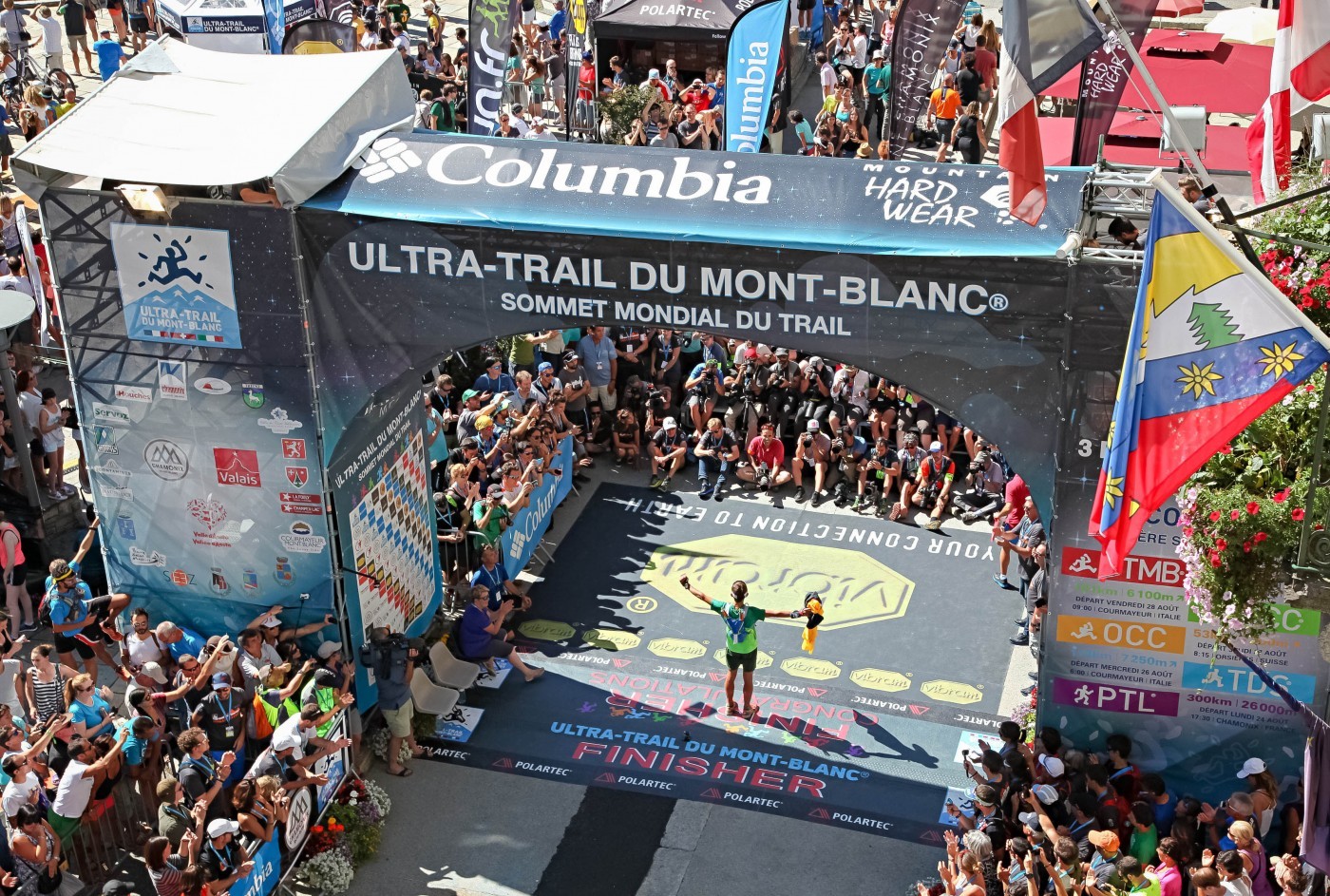
The full UTMB World Series calendar will be announced sometime this fall, including several UTMB World Series Events and one UTMB World Series Major in the U.S.
"Trail running was born in the USA [but] it's not easy for a French company to develop something [there]," said UTMB Co-Founder and Co-Owner Michel Poletti, in an interview with Trail Runner columnist Doug Mayer. "That's part of our decision to partner with Ironman, is that it will be easier for them to develop the sport in the U.S. than for us in France." Poletti noted they are talking with "many other races in the world, including the United States."
What The Heck Is A Running Stone?
A Running Stone is like a lottery ticket. It's your entry into the lottery to compete at UTMB, CCC, TDS and OCC. If you have seven stones, that means your name is in the lottery seven times, giving you a higher chance of being selected than someone with only three stones.
You can earn stones by competing in UTMB associated races. For example, competing in a 50k+ race "by UTMB" will earn you nine stones. Competing in an Ultra-Trail World Tour (UTWT) race over 50k will earn three stones. Western States Endurance Run finishers and Javelina Jundred runners can earn three stones. UTMB is now a Western States Golden Ticket Race, as is Javelina. You can see the full list of qualifying races here.
UTMB, CCC, TDS and OCC do not earn runners Running Stones.
UTMB Qualifying Points
Runners who haven't collected Running Stones can enter the lottery if they have the required number of qualifying points from no more than two races.
Elite Runners
UTMB races save spots for elite runners according to the number of ITRA points a runner has. For men, anyone with an ITRA score over 880 can skip the lottery and entry fee. Elite men with scores between 800-880 can skip the line but still pay an entry fee. Women with an ITRA score over 760 get free entry and no lottery, while women with a score between 760 and 675 skip the lottery, but pay the entry fee. The top three runners from any given country get in free. Easy!
All Roads End In Chamonix
UTMB is calling its new global race series the "UTMB World Series," which breaks down into four categories of races: World Series Qualifiers, Events, Majors and Finals. Qualifier races, whose numbers will apparently be in the thousands, give "privileged access" to World Series Events and World Series Majors, both of which feature 50K, 100K and 100-mile distances. Each World Series race gives a participant one lottery entry (UTMB calls them "stones") to the finals in Chamonix. The World Series Majors are the flagship races on each continent, with two entries to the Chamonix lottery. Between the Majors and Events categories, UTMB expects to have 30 to 40 races take part.
Everything points toward Chamonix and the World Series Finals-and the only way to get there will be through the new race series. To get to Chamonix, runners will also need to finish a race of comparable difficulty in one of the other UTMB race series.
(08/28/2021) ⚡AMPby Trail Runner Magazine
Czech Runner Dies from Falling During UTMB’s TDS Race in Chamonix
It is believed to be the first death in the 19-year history of the Ultra-Trail du Mont-Blanc races in and around Chamonix
There was sad news coming out of Chamonix, France, early on the morning of August 25.

The Ultra-Trail du Mont-Blanc race organization reported that a male runner from the Czech Republic competing in the 145-km TDS race died after suffering a bad fall and serious injuries. The accident occurred at the 62.3 km mark on the descent of the Passeur de Pralognan, an 8,421-foot mountain pass west of Chamonix, France.
It is believed to be the first death in the 19-year history of the Ultra-Trail du Mont-Blanc races in and around Chamonix.
A spokesperson for the race said the UTMB race organization is deeply saddened and wished the international trail running community to join in offering condolences to the family and friends of the victim.
When the accident occurred at 12:25 a.m. CET, the rescue team stationed on the course responded to the scene immediately and additional emergency personnel was called into action via helicopter support. Despite life-saving treatments, the runner (who is being kept anonymous until all family members have been notified) succumbed to his injuries. Because of the remote and complex nature of the rescue operations, the race was partially halted and the runners located at the Passeur de Pralognan, and further back, were instructed by the race committee to turn around and go back down to Bourg Saint-Maurice, where they were met and transported back to Chamonix.
The race began on Tuesday afternoon in Courmayeur, Italy, and runners experienced clear skies and cool temperatures through the night and into the early morning. The 293 runners who had already run through Passeur de Pralognan were allowed to continue on to finish the race, but the remainder of the approximately 1,200 runners who were turned back will not be able to continue.
Norway’s Erik-Sebastian Krogvig was the eventual winner of the TDS, making it back to Chamonix after 18 hours, 49 minutes, 58 seconds. The TDS race, officially known as the Sur les Traces des Ducs de Savoie, is the most technically challenging race during the UTMB week, with several craggy climbs and descents that require precise footing and balance.
“This is a tough section of the course,” reports Trail Runner Magazine contributor Doug Mayer, who lives in the Chamonix area. “You’ve just climbed 2,000 meters in about 10 km, then need to hold on to chains on the other side. They have a rescue group right there at this spot, always. It’s the most technical moment of the race.
(08/28/2021) ⚡AMPNorth Face Ultra Trail du Tour du Mont-Blanc
Mountain race, with numerous passages in high altitude (>2500m), in difficult weather conditions (night, wind, cold, rain or snow), that needs a very good training, adapted equipment and a real capacity of personal autonomy. It is 6:00pm and we are more or less 2300 people sharing the same dream carefully prepared over many months. Despite the incredible difficulty, we feel...
more...Train slow to race fast, marathon lessons from Molly Seidel
The Olympic marathon bronze medalist Molly Seidel dedicates the majority of her training to easy running.
With the Fall marathon season approaching fast, many runners across the country are already deep into their marathon training programs. If you’re like most of us, you were inspired by the athletes’ performances in the Olympic marathon, most notably by American Molly Seidel’s surprise bronze medal finish. Thankfully, the elite runner tracks her training on Strava, and when looking at her stats there is one major takeaway: to run fast, you need to train slow.
Physiologist and Colorado-based endurance coach Alex Couzens broke down Seidel’s training stats on his Twitter page, and the results may come as a surprise to many runners. Out of her typical 193-kilometre training week, she only ran three per cent of that volume at 5K pace or faster — that’s less than seven kilometres. She only ran another 13 per cent (about 25 kilometers) at race pace, and half of her total training volume was dedicated to slow, easy running.
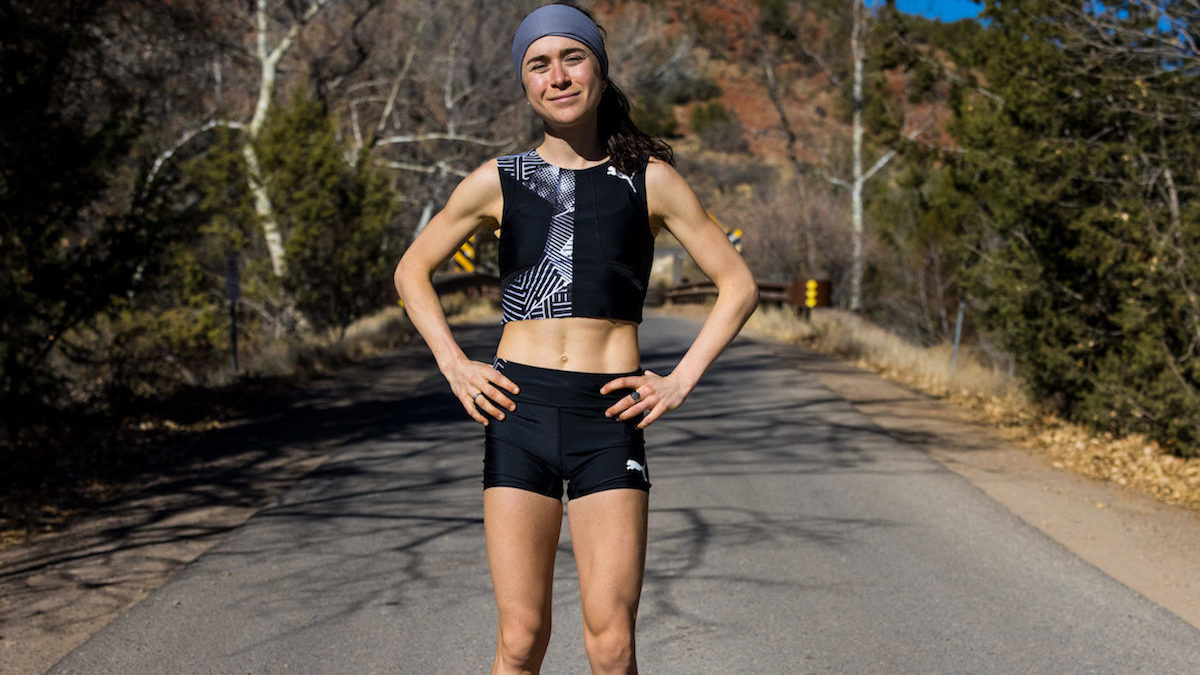
For most of us, this approach may seem counter-intuitive. A lot of time and attention is given to speedwork and tempo runs, and while both are important aspects of training, Seidel’s stats prove that when it comes to success at the marathon distance, slow easy miles are king. Of course, the average recreational runner is likely not running 200 kilometres each week, and Couzens addresses this later on in the discussion thread. In his opinion, even if someone has only five hours per week to dedicate to training, he wouldn’t change the ratios all that much. He provided an example of a basic week of training:
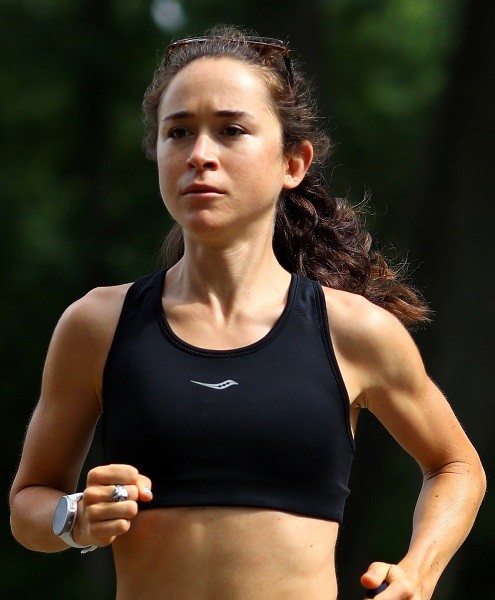
Of course, at that training volume, you likely won’t be joining the Olympians any time soon, but for someone with a busy schedule who not only has less time to train but also has fewer hours to dedicate to rest, stretching, mobility and other recovery strategies, Seidel’s ratios still apply. As long as you’re consistent with your training, this strategy will allow you to get to the start line prepared to handle the distance without injuring yourself in the process.
So if you’re in the midst of marathon training and are thinking about adding in some extra speedwork, take a page out of Seidel’s book and check your ratios first — it may not be necessary after all.
(08/27/2021) ⚡AMPby Brittany Hambleton
World record holder Letesenbet Gidey to make debut at the Valencia Half Marathon
Ethiopia’s Letesenbet Gidey, who is the current 5,000m (14:06.62), and 10,000m (29:01.03) world record holder is taking on her first half-marathon at the 2021 Valencia Half Marathon on Oct. 24.
This will mark Gidey’s first time stepping up to the half-marathon distance, as the experienced long-distance track runner is known for using her exceptional endurance to wear down the field.
In addition to her world records, Gidey has the world’s best time over 15 km on the road, running a jaw-dropping 44:20 last fall in Nijmegen, Netherlands. If she can hold her 15K pace for six more kilometres, she will crush Ruth Chepngetich’s half-marathon world record of 1:04:02 by a minute and a half.
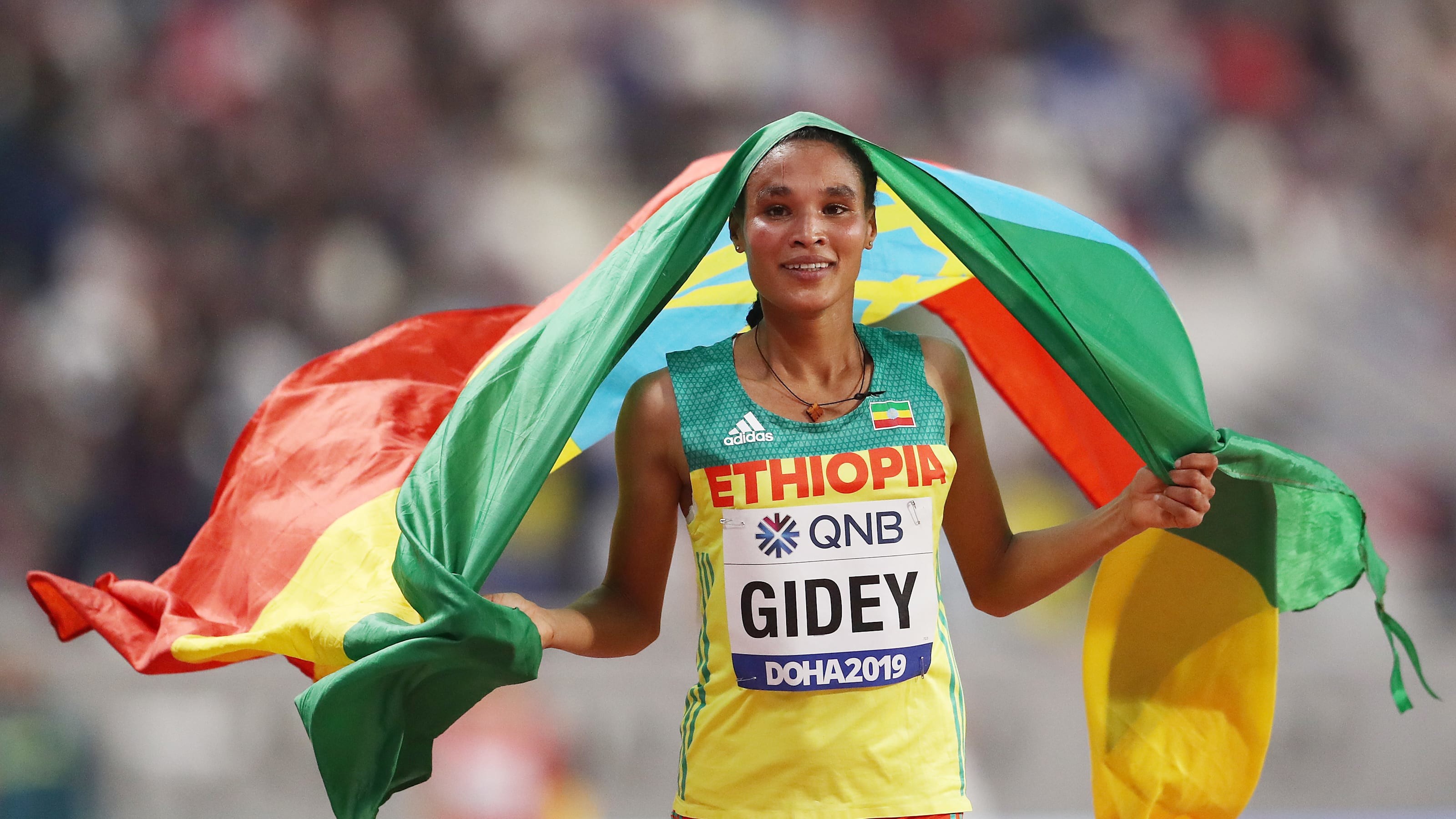
Gidey will be challenged by the last two winners of this event, Genzebe Dibaba (1:05:18) and Senbere Teferi (1:05:32), as well as Yalemzerf Yehualaw (1:04:40), who was third at the World Half Marathon Championships in Gdynia, Poland in 2020.
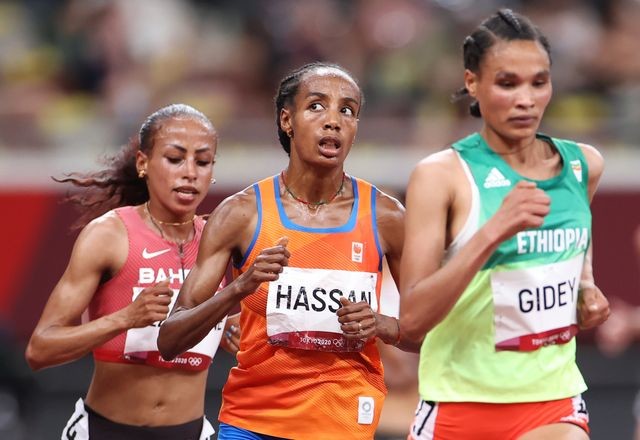
On the men’s side, the Valencia Half Marathon is stacked with high-level competition. Kenya’s Rhonex Kipruto is returning after running the second-fastest half marathon ever in 2020 (57:49). He also holds the 10K road world record at 26:24. Also in the race is Ethiopian Muktar Edris, a double world champion in the 5,000m who ran a 59:04 in his half-marathon debut.
The men’s half-marathon world record has been broken twice in Valencia over the past two years. The depth of the women’s and men’s fields are certain to threaten the record books this Oct. 24.
(08/27/2021) ⚡AMPby Marley Dickinson
Valencia Half Marathon
The Trinidad Alfonso Valencia Half Marathon has become one of the top running events in the world. Valencia is one of the fastest half marathon in the world. The race, organized by SD Correcaminos Athletics Club, celebrated its silver anniversary in style with record participation, record crowd numbers, Silver label IAAF accreditation and an atmosphere that you will not find...
more...Akron Marathon Race Series Continues with Proof of Vaccination or Negative COVID-19 Test Requirements
After two successful events in the Akron Marathon Race Series presented by Summa Health, the Akron Marathon Charitable Corporation has announced its marquee event, the FirstEnergy Akron Marathon, Half Marathon, & Team Relay on Sept. 25, 2021, will now require runners and volunteers to be fully vaccinated (with proof of a COVID-19 vaccination card) or have a negative COVID-19 test result 72 hours before the race to participate. This protocol was updated to help protect the health and safety of the public in light of the increase in COVID-19 cases and is aligned with best practices for mass gatherings.
As always, Summa Health, the Akron Marathon, and FirstEnergy event organizers are working closely with the City of Akron and Summit County Public Health on race weekend plans that align with Summit County’s public health and safety efforts to protect its runners, volunteers, and spectators. Due to the increasing COVID-19 numbers and the Delta variant, new health requirements were added.
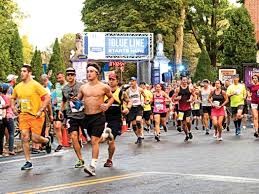
“In order to ensure the race experience that our runners expect—including the Finisher’s Festival—we have to make certain of their safety first and foremost,” states Anne Bitong, president of the Akron Marathon Charitable Corporation. “I want to express my gratitude for our team, the City of Akron, and Summit County, along with our sponsors and volunteers who have been working together on the detailed logistics of the event.
"Health and safety at all levels have been discussed—from packet pick-up and fluid stations to wave starts and lowered capacity—helping to keep our runners feeling safe and together. That’s what this community has always been about.”
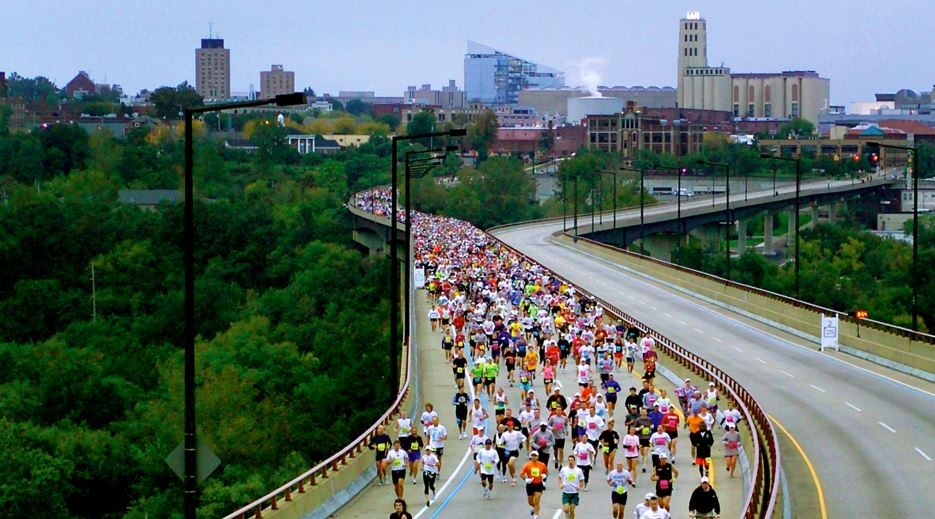
During the Aug. Goodyear Half Marathon & 10k, 81 percent of runners self-identified as fully vaccinated. For the Sept. events, proof of vaccination may be presented as a hard copy, photocopy, or digital version of an immunization record. Registered runners who are not fully vaccinated must provide a negative COVID-19 test result for a test administered within 72 hours of attending the FirstEnergy Akron Marathon, Half Marathon & Team Relay. Proof of vaccination or negative COVID-19 test will be required to pick up an in-person race bib at the Akron Marathon Health & Fitness Expo on Friday, Sept. 24.
The Akron Marathon defines “fully vaccinated” as individuals who are two weeks after their second dose in a two-dose vaccine series or two weeks after a single-dose vaccine.
“The health and safety of our community is our top priority,” states Mike Bernstein, system director, corporate communications of Summa Health. “We strongly recommend the available COVID vaccines and commend the Akron Marathon Charitable Corporation for its work in keeping race participants safe.”
The FirstEnergy Akron Marathon, Half Marathon, & Team Relay, which will follow the Blue Line through the streets of Akron on Sept. 25., is the third and final race in the Akron Marathon Race Series presented by Summa Health.
“FirstEnergy applauds the race organizers and local officials who are keeping the health and safety of race participants, their supporters, and volunteers at the forefront to ensure a safe and successful event,” said Steven Strah, president and chief executive officer of FirstEnergy. “As the proud title sponsor of this marquee Akron event, FirstEnergy and its employees look forward to celebrating with the runners when they cross the finish line in September.”
Need to find a vaccine near you? Contact your local physician or visit vaccinefinder.org for more information on COVID-19 vaccines and where to find one.
Based on national standards, accepted COVID-19 tests are those that have received FDA emergency use authorization and also include RT-PCR, RT-LAMP, lateral flow, and antigen tests.
For more information or volunteer opportunities and race registration for the final event, visit AkronMarathon.org.
(08/27/2021) ⚡AMPAkron Marathon Race Series
The marquee event of the Akron Children’s Hospital Akron Marathon Race Series, the Akron Marathon, Half Marathon, & Team Relay presented by First Energy receives a fresh new look ! Runners will experience an unforgettable start inside the historic grounds of Stan Hywet Hall & Gardens before taking an exclusive foot tour of the City of Akron. The Goodyear Half...
more...Grandma's Marathon Wins Top Honors in Statewide Readers' Choice Awards Program
Grandma’s Marathon has been named a gold medal winner in the state’s premier Readers’ Choice Awards program, Minnesota’s Best, it was announced today.
Grandma’s was voted the state’s top annual sports event or race in the inaugural “best of” program, which was put together by the Star Tribune to celebrate the many businesses, organizations, and individuals that make Minnesota a great place to live, work, and play.
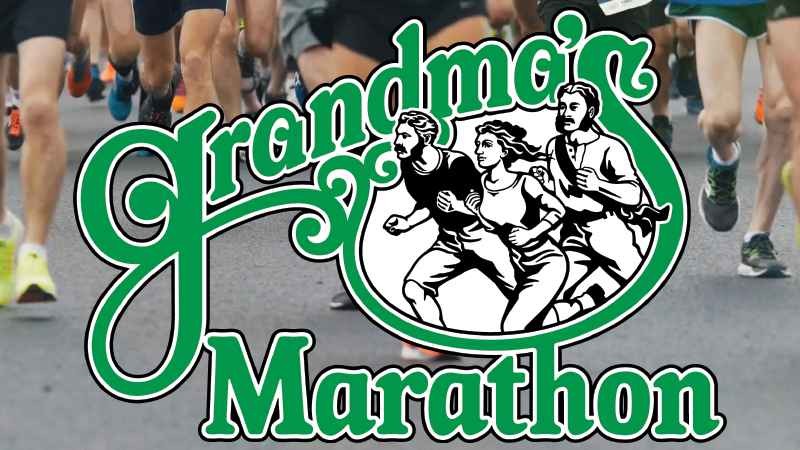
“We’re certainly honored and humbled by this recognition, but this is an award that belongs to our entire community,” Marketing & Public Relations Director Zach Schneider said. “Our race is a reflection of our volunteers, sponsors, and community partners who work tirelessly throughout the year to create a special event each June for our more than 20,000 participants. Clearly their efforts are appreciated and have not gone unnoticed. We are proud to accept this award on their behalf and look forward to living up to that ‘gold medal’ billing in 2022.”
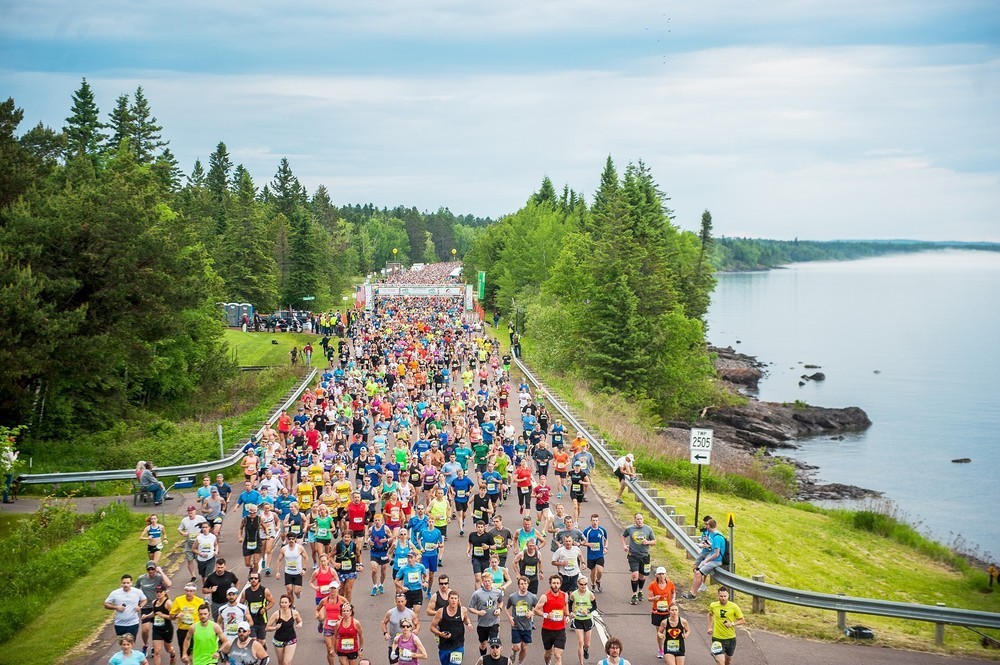
More than 525,000 votes were cast in this year’s Readers’ Choice Awards program, with 5,700 different entities across the state competing for the top three spots in 300+ award categories.
For a full list of the 2021 Star Tribune Readers’ Choice Award winners, please visit votedminnesotasbest.com.
The 2022 Grandma’s Marathon weekend will be held Thursday-Saturday, June 16-18. Registration for the weekend’s three races – Grandma’s Marathon, Garry Bjorklund Half Marathon, and William A. Irvin 5K – will open at 7:00 p.m. CT on October 1, 2021.
If you have any questions or for any interview requests, please contact Marketing & Public Relations Director Zach Schneider via email at zach@grandmasmarathon.com or via phone at (218) 343-9874.
ABOUT GRANDMA’S MARATHON
Grandma’s Marathon began in 1977 when a group of local runners planned a scenic road race from Two Harbors to Duluth, Minnesota. There were just 150 participants that year, but organizers knew they had discovered something special. Grandma’s Marathon weekend draws approximately 20,000 participants for its three-race event each June.
The race got its name from the Duluth-based group of famous Grandma’s Restaurants, the first major sponsor of the Marathon. Over time, the level of sponsorship with the restaurants changed, but the name stayed the same. Grandma’s Marathon-Duluth, Inc. is a 501(c)(3) tax-exempt nonprofit organization with a 17-member Board of Directors and a nine-person, full-time staff.
(08/27/2021) ⚡AMPby Running USA
Grandmas Marathon
Grandma's Marathon began in 1977 when a group of local runners planned a scenic road race from Two Harbors to Duluth, Minnesota. There were just 150 participants that year, but organizers knew they had discovered something special. The marathon received its name from the Duluth-based group of famous Grandma's restaurants, its first major sponsor. The level of sponsorship with the...
more...Three time Olympian Jenny Simpson to Make Her Long Distance Road Racing Debut at 2021 Credit Union Cherry Blossom 10M
Organizers of the 48th edition of the Credit Union Cherry Blossom Ten Mile Run announced today that Jenny Simpson, three time Olympian (2008, 2012 and 2016 bronze medalist) and three time World Championship medalist (gold in 2011, silver in 2013 and 2017) would be making her long distance road racing debut in Washington, DC on September 12 at the USATF Men’s and Women’s Ten Mile Championships Presented by Toyota. While Jenny is no stranger to racing one mile on the roads — having won seven straight NYRR Fifth Avenue Mile events from 2013-19, and eight overall — she’ll be racing ten times as far on a flat, fast course that passes in sight of all the major Washington DC Memorials.
When Simpson was discussing her decision to explore new horizons with Cherry Blossom race organizers, she recalled: “My earliest memories and my introduction to the running world was through a community road race. As I pursued a professional career on the track, I’ve had the incredible joy of experiencing road racing as a spectator through my husband’s marathoning.”
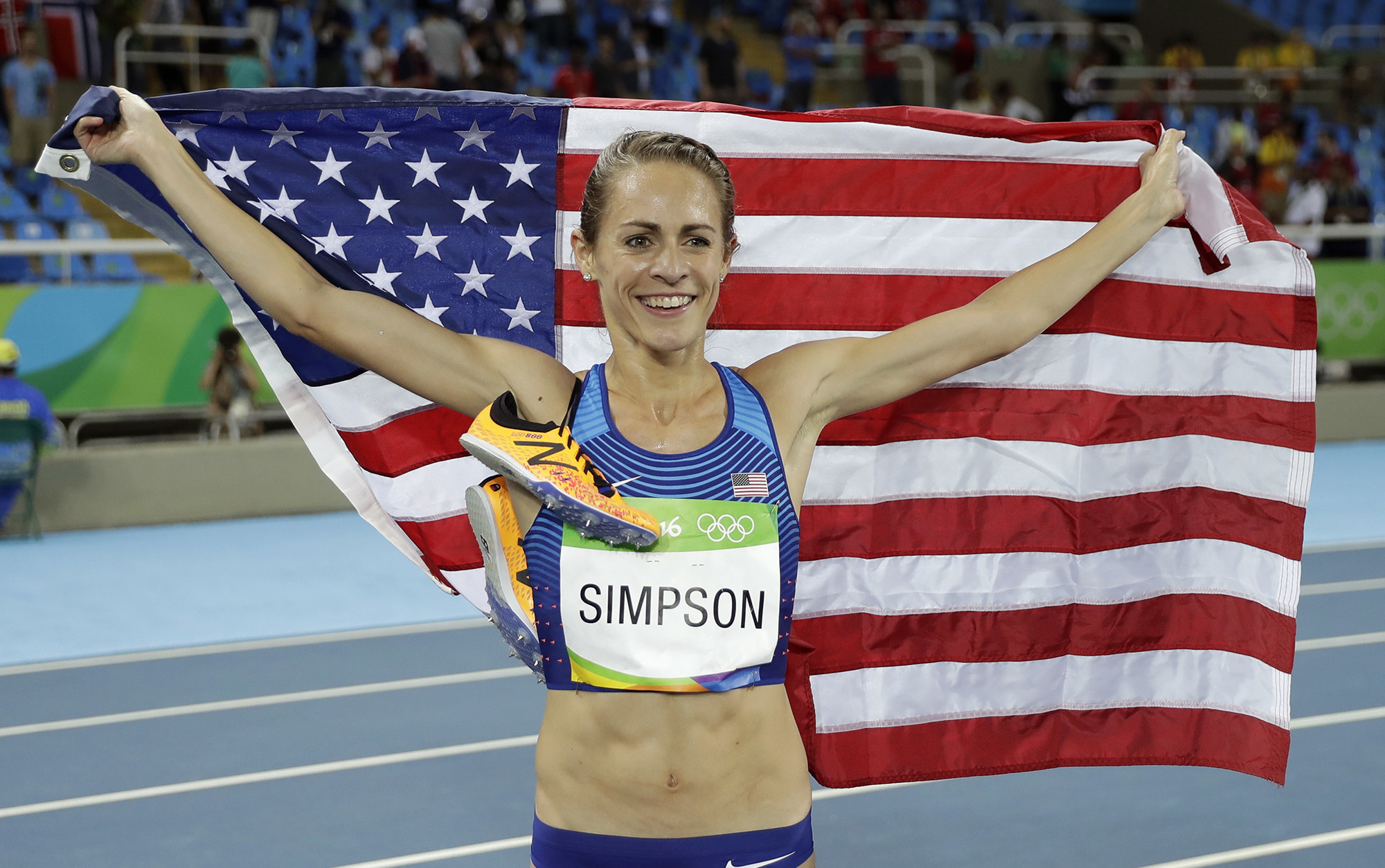
She then added: “When I found myself this summer with the freedom to train for anything I wanted, my memory of the challenge and the fun of racing the roads tugged at my heart. I’m excited to take on the challenge of racing the Cherry Blossom 10 mile run. After years of battling within the oval track, I’m anxious to find out what I’m capable of on the roads of our Nation’s Capital. This race is so different in so many ways from what I know best. It’s exciting to know that after the success I’ve already experienced as a runner, there are still so many hard and rewarding challenges to take on.”
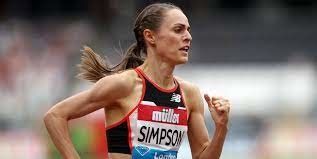
And Jenny is certainly taking on a big challenge right off the bat. While Keira D’Amato, who set American and World Records for 10 miles (51:23) at last November’s Up Dawg 10 Mile has withdrawn from Cherry Blossom in favor of continued training for the 2021 Bank of America Chicago Marathon, Simpson will face plenty of top-flight competition. Jordan Hasay now boasts the fastest personal best among the American women (52:49), with Emma Bates not far off Hasay’s mark (52:51).
As of today, 17 elite American women are entered in the USATF 10 Mile Championships. The women will start 12 minutes before the men so performances will be eligible for ratification as women's-only records. This eliminates any benefit of being paced by males and also provides increased visibility for these talented female athletes.
With $26,000 in U.S. championship prize money on offer as well as a $10,000 bonus for an American Record (the bonus will be split if both the first-place male and female break the American records), road racing fans can look forward to hotly contested races among both the men and women. The race also will feature its traditional strong field of international runners competing for a $20,000 purse and a $10,000 bonus if a world record is broken by the winning male or female (split if both the male and female break the World Record).
With virtual editions held in April 2020 and 2021, the in-person Fall Edition of the 2021 Credit Union Cherry Blossom Runs marks the 20th year of title sponsorship by Credit Union Miracle Day. Since 2002, over $10 million has been raised for the Children’s Miracle Network Hospitals, including $439,000 in 2020. Of that $439,000, $66,000 came from runners donating their entry fees instead of asking for a refund when race weekend in our Nation’s Capital was wiped out by Covid-19.
(08/26/2021) ⚡AMPby Running USA
Cherry Blossom Ten Mile Run
The Credit Union Cherry Blossom is known as "The Runner's Rite of Spring" in the Nation's Capital. The staging area for the event is on the Washington Monument Grounds, and the course passes in sight of all of the major Washington, DC Memorials. The event serves as a fundraiser for the Children's Miracle Network Hospitals, a consortium of 170 premier...
more...The best ways to prevent leg pain when running
While running is fantastic exercise, it's also a relatively high-impact activity. Pounding on the pavement can cause leg pain. Most often, leg pain or cramping is a result of muscle fatigue. Avoid the pain of muscle fatigue by strengthening your muscles so you can run further without strain. If you still have leg pain, you might need to adjust your exercise routine.
Spend longer warming up. If you commonly have leg pain when running, your muscles may not be sufficiently warm. Take a few more minutes to walk before breaking into a run, or include dynamic stretching in your warmup routine after a brief walk.
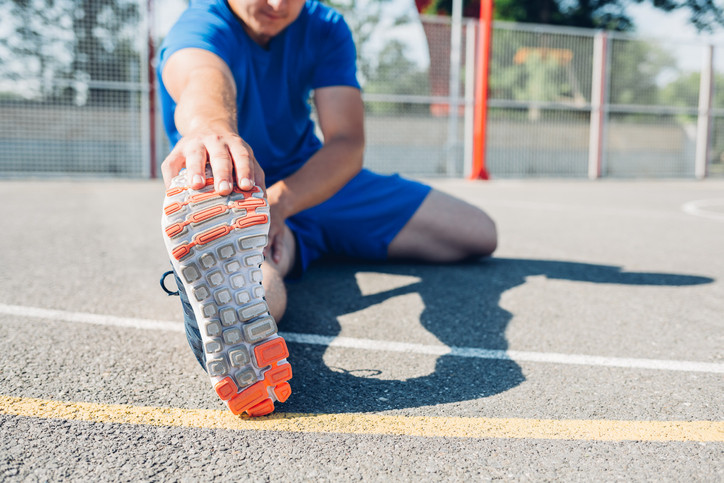
Dynamic stretches involve constantly moving your legs through their range of motion. These types of stretching can better loosen your leg muscles and prepare them for a run, which may help you avoid leg pain.
For example, you might incorporate lunges into your warmup routine. After walking for a few minutes, Do 10 to 20 lunges, alternating sides.
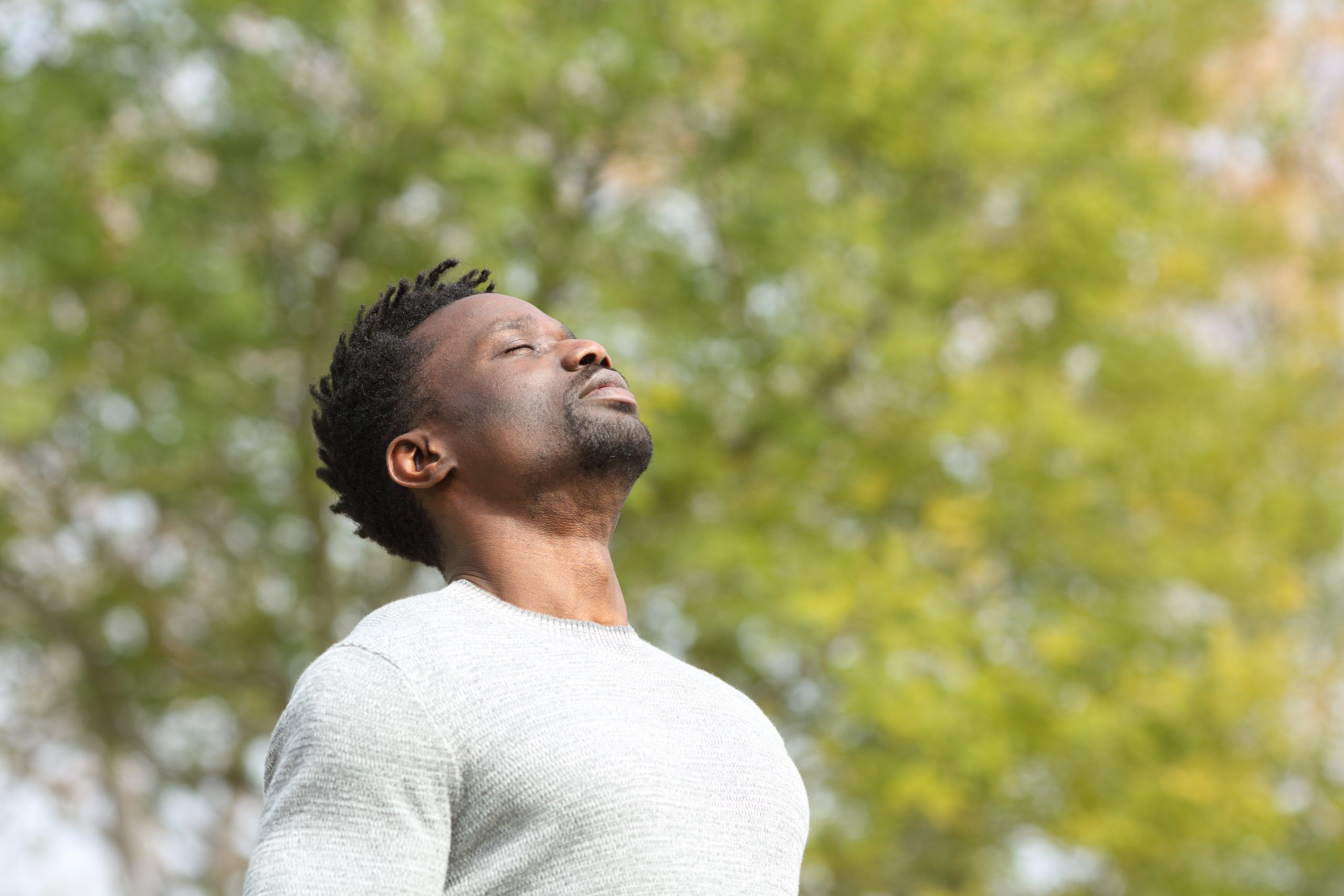
Evaluate your form. If you frequently have leg pain while running, poor running form may be the culprit. Get a coach or experienced runner to observe you running and give you tips on what might be causing your leg pain.
For example, if you're leaning too far forward when you run, you can pull too hard on your calves. This can result in calf pain or shin splints.
Slow your pace. If you're getting cramps or other leg pain while running, it may be because you need to build up your cardiovascular fitness more gradually. Start by walking or jogging at a slower pace, and slowly work up to faster speeds.
Watch your pace particularly if you're running up and down hills, which can place greater strain on your leg muscles.
If you regularly have leg pain, you might consider running in intervals. For example, instead of running for 30 minutes with five minutes of walking before and after to warm up and cool down, you might walk for five minutes, run for five minutes, then walk for another five minutes. Keep up that rotation until you've finished your run.
Shorten your stride. Particularly when running uphill, a longer stride will force your muscles to stretch further. If this causes strain it can lead to leg pain. A shorter stride allows you to avoid leg pain while you're working to strengthen and lengthen your leg muscles.
Decrease the distance or duration you run. Leg pain typically means that your muscles are fatigued or overworked. If you find that leg pain doesn't start until later in your run, it may be a sign that you need to shorten your runs until your legs are stronger.
For example, if you normally run for an hour, and find that your legs start hurting after 45 minutes, try decreasing your runs to 45 minutes for a few weeks. Build back up to an hour slowly, adding five minutes each week. Scale back if leg pain starts, and be patient.
Use relaxation techniques while running. Deep breathing and other relaxation techniques give you better mental focus. They also decrease the overall tension in your body, which can keep you from developing leg pain.
You can find recordings online or on your favorite music app that provide focused music and guided meditations for runners. These recordings can help you focus on your breath and reach a more relaxed state as you run.
(08/26/2021) ⚡AMPby Shira Tsvi
2021 Virgin London Marathon won't feature any RW Pacers
Alongside many important changes to make the Virgin Money London Marathon 2021 as safe as possible for all involved, it was announced that there will be no RW Pacers at this year's event.
The long-standing relationship between Runner's World and VMLM to provide pacers at the event began in 2000 and our team of trusty flag carriers have helped guide numerous runners to the finish line and that much sought-after PB.
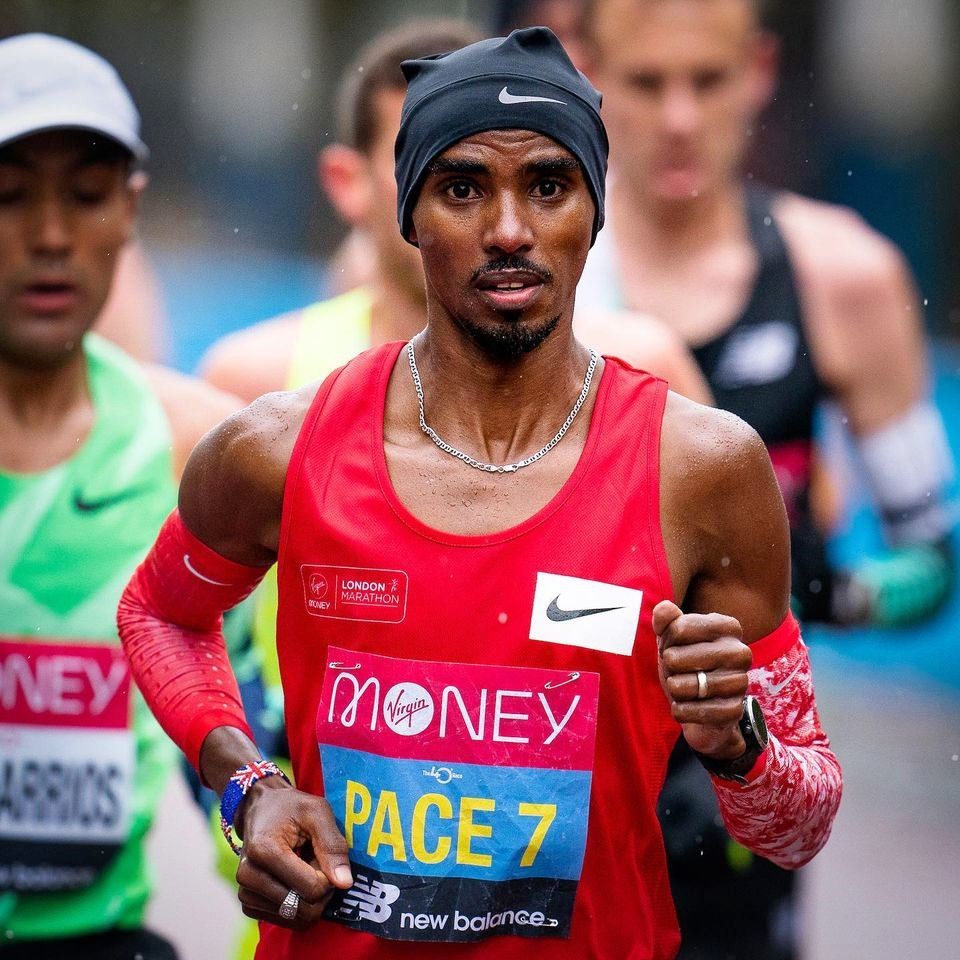
If you were relying on following a flag at the event this year, do not worry, you've already got through marathon training during a pandemic, so this will be easy.
A simple measure to help stay on track is noting down your mile splits for a certain time you are aiming to run and then arming yourself with a basic stopwatch with built in lap function/memory.
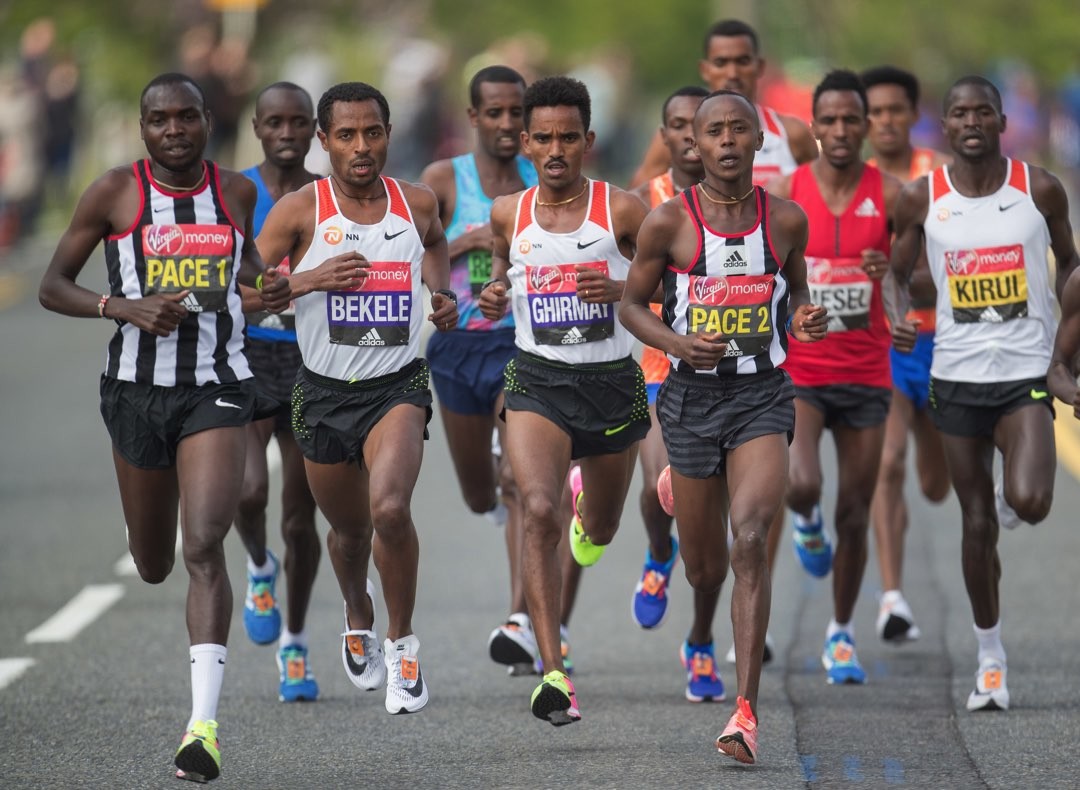
Each time you pass a mile marker on course, you click that lap button and you'll see how you're getting on. This negates relying on GPS, which can sometimes fail at points on the course. It's not a fail-safe method, but it's good to have a back up. It's also quite a nice distraction and helps you tick off the miles!
On Sunday October 3, it will be 889 days since we last ran the 26.2 miles of the Virgin Money London Marathon from Greenwich to Westminster.
For the last 40 years, these miles have been steeped in tales of human endeavour, in tales of perseverance, joy and tears, and, above all, in tales of the extraordinary and indomitable spirit of humankind coming together to celebrate life and raise more than a billion pounds for charity.Today we launched our campaign – We Run Together – to celebrate everyone taking on the 26.2-mile challenge on 3 October, whether that’s on the streets of London, or elsewhere in the UK or around the world in the virtual event.
Sunday October 3, is going to be a day to remember. It will be a marathon that you will never forget, and we look forward to welcoming you to the Start Line as we run together again.
Many of these new procedures have been tested in events since May, when we organised one of the first mass participation running events under the government’s Events Research Programme, and in events since: at Hatfield Park, the Standard Chartered Great City Race, and The Vitality Big Half.
(08/26/2021) ⚡AMPby Ben Hobson
TCS London Marathon
The London Marathon was first run on March 29, 1981 and has been held in the spring of every year since 2010. It is sponsored by Virgin Money and was founded by the former Olympic champion and journalist Chris Brasher and Welsh athlete John Disley. It is organized by Hugh Brasher (son of Chris) as Race Director and Nick Bitel...
more...Kipchoge says that he can't move forward without embracing technology
Marathon world record holder and Olympic champion Eliud Kipchoge hopes that technology will take "center stage" as athletes strive for improvement and chase faster times in the future.
The Kenyan, who overcame humid conditions in Tokyo earlier this month to claim gold in the marathon, was among a host of runners who ran in specially designed Nike shoes fitted with carbon-fiber plates for more spring and quicker times, once again rekindling a debate around "technological doping".
"If we don't embrace technology then we are not moving... I know regulations will be there but technology should take center stage," Kipchoge told Reuters.
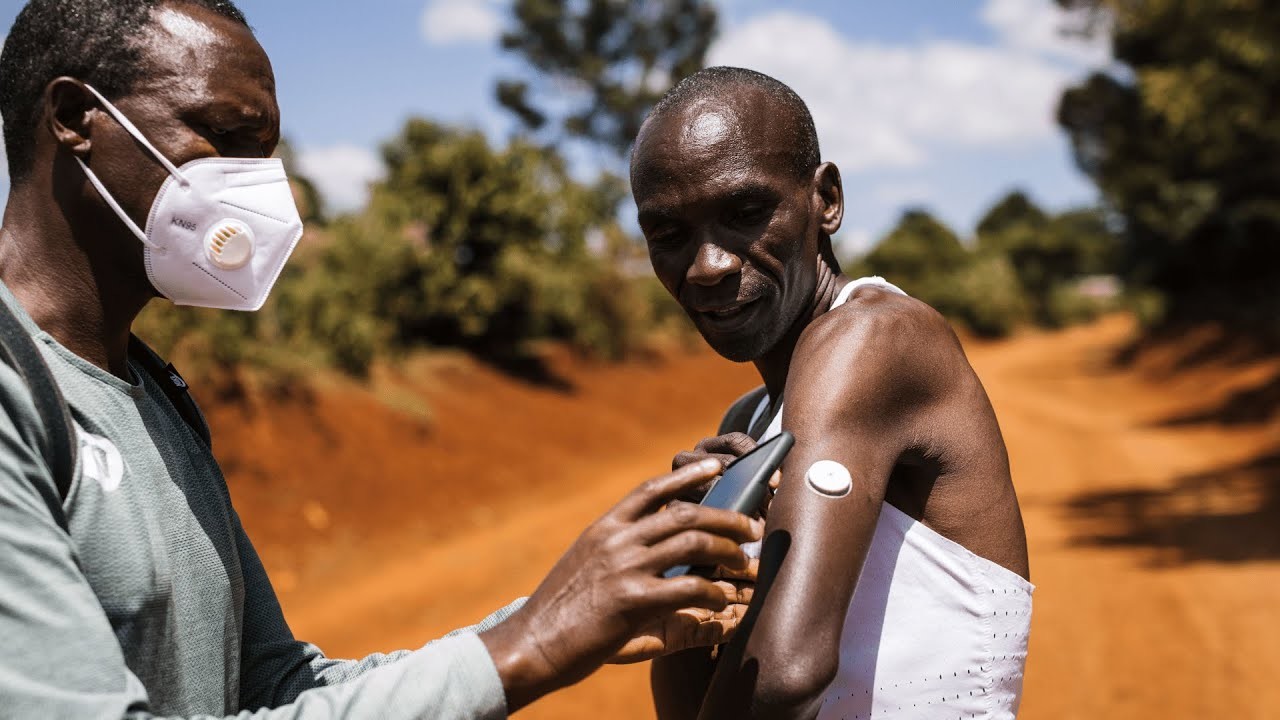
"Let all athletes have top technology, have top innovation. That's the only way to think and actually try to improve your performance."
Other athletes such as Karsten Warholm, who won the Olympic 400 meters hurdles title in world record time, have been critical of rapidly advancing shoe technology.
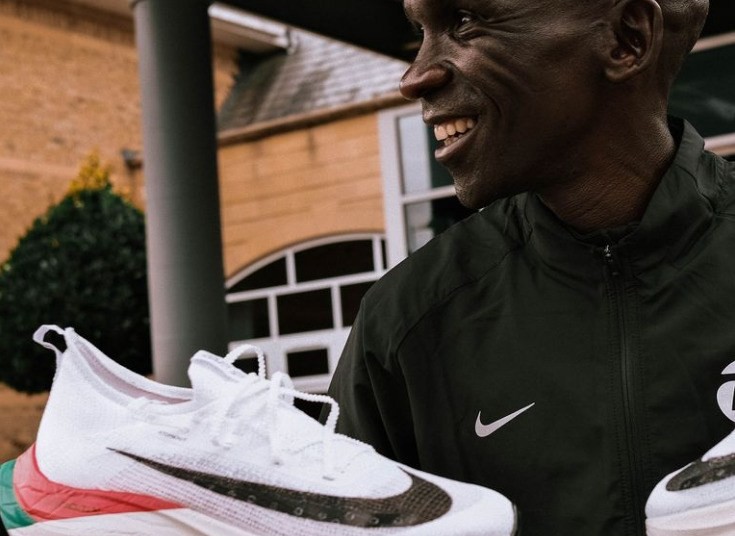
"When somebody does a great performance now, everybody will question if it's the shoe, and that is the credibility problem," the Norwegian told Reuters earlier this month.
Kipchoge's footwear played a big part in him becoming the first man to run a marathon in under two hours in 2019, a remarkable feat that is now the subject of a new documentary, "Kipchoge: The Last Milestone".
The film chronicles how Kipchoge worked with scientists and a group of fellow elite runners to run in an unofficial world record time of one hour, 59 minutes and 40 seconds in Vienna two years ago, an achievement many thought was impossible.
The 36-year-old said that his message of "no human is limited" extends beyond sport as he looks to inspire people from all walks of life.
"(This) is a huge message, not actually facing sportsmen and sportswomen alone. It's all around, it touches every profession... my lasting legacy will be purely about inspiration because that's what I want to drive in the mind of every human being in this world."
Kipchoge added that retirement was not on his mind as he was motivated to keep chasing titles by athletes who were still competitive well into their 30s and even 40s.
"I am being inspired by many people, the footballers, (Cristiano) Ronaldo is doing well (at 36), (Lewis) Hamilton is still very sharp as far as Formula One is concerned, Valentino Rossi is driving in the MotoGP at 42," said Kipchoge.
"For now I have to rest, pick up training in September and plan what next... I am enjoying what happened in Tokyo for now. So I'm mixing rest and enjoying the medal. But all in all there are still good things in the future."
(08/26/2021) ⚡AMPby Sophie Penney
Boston Athletic Association Partners with Maurten as Exclusive Gel Nutrition Sponsor of the Boston Marathon
The Boston Athletic Association (B.A.A.), organizer of the Boston Marathon, has partnered with Maurten to enhance participant nutrition and fueling at the Boston Marathon and B.A.A. Half Marathon. Maurten, the Swedish-based hydrogel sports fuel company, and the B.A.A. have agreed to a multi-year partnership which designates Maurten as an Official Sponsor, Exclusive Gel Nutrition Partner, and Official Hydrogel provider of both signature B.A.A. events.
“We at the B.A.A. are always looking for ways to enhance our participants’ race experience, especially in the area of nutrition,” said Tom Grilk, President and C.E.O. of the B.A.A. “We are proud to partner with Maurten, as both of our missions focus on the promotion of athletic excellence, health, and fitness.”
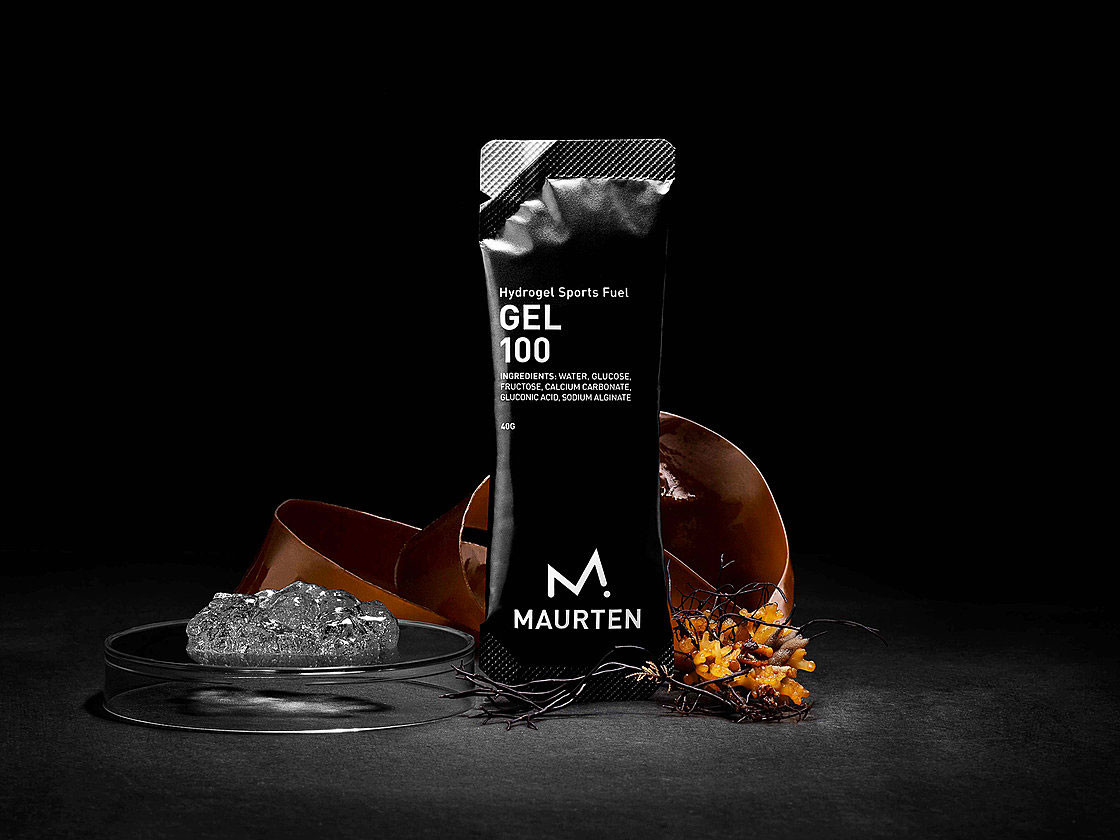
Maurten’s caffeinated and non-caffeinated Gels, Gel 100 and Gel 100 CAF 100, will be available in three locations along the Boston Marathon course (miles 11.6, 17, and 21.5) and one location at future B.A.A. Half Marathons. Maurten will also be featured throughout event programing, including in race training clinics. Boston Marathon and B.A.A. Half Marathon participants and followers will receive tips on best nutrition practices to prepare for long-distance running through digital campaigns led by Maurten.
“We’ve always said that we support the best runners in the world. That wasn’t entirely true, since we haven’t had the chance to support all Boston runners out there. So, we’re very happy that that’s about to change and that we level the playing field by making sure all runners in Boston, not only the elite, gets access to the same hydrogel based fueling technology,” said Olof Sköld, C.E.O at Maurten.
Maurten and its hydrogel based sports fuel line has revolutionized fueling in endurance sports. The Swedish company set out in 2015 to find a way to minimize the risk of gastric distress while consuming carbohydrates during races and in training. Today, Maurten is an official sponsor of other world-class endurance events including the Berlin Marathon and IRONMAN, and also supports numerous professional athletes including U.S. Olympian Molly Seidel, world record holder Eliud Kipchoge, and Boston Marathon champions Worknesh Degefa, Des Linden and Geoffrey Kirui. The latter two athletes will compete as part of the John Hancock Professional Athlete Team at the 125th Boston Marathon in October.

Maurten can be found for purchase online at maurten.com and through running specialty stores.
Due to the COVID-19 pandemic, the 2021 Boston Marathon was moved from its traditional date of the third Monday in April to Monday, October 11. The fall race will feature a field size of 20,000 participants, as well as a rolling start for the first time.
(08/25/2021) ⚡AMPBoston Marathon
Among the nation’s oldest athletic clubs, the B.A.A. was established in 1887, and, in 1896, more than half of the U.S. Olympic Team at the first modern games was composed of B.A.A. club members. The Olympic Games provided the inspiration for the first Boston Marathon, which culminated the B.A.A. Games on April 19, 1897. John J. McDermott emerged from a...
more...2021 longford marathon goes virtual
Despite the best efforts of all involved with the organisation of the Abbott Longford Marathon, unfortunately it is not possible to go ahead with the in-person event in Longford this year due to the ongoing Covid-19 pandemic.
As a result, the committee has made the decision to go virtual.
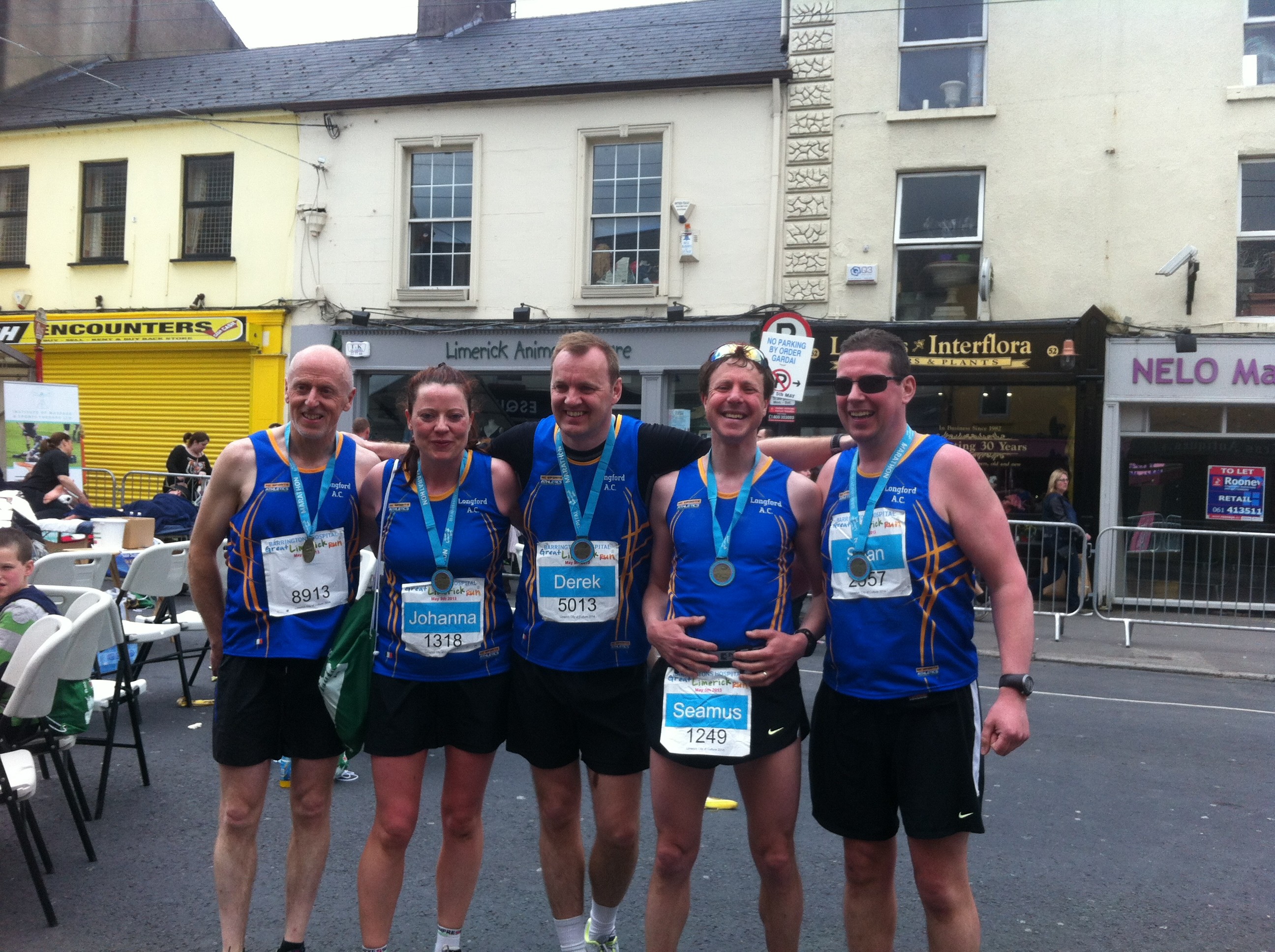
The 2021 Virtual Abbott Longford Marathon will take place between Sunday, August 29 and Thursday, September 30. Participants can take part in a 5K, 10K, Half Marathon, Marathon or 39.3-mile Ultra Marathon and complete the distance at a time and location of their choosing between those dates.
Registration for the 2021 Virtual Abbott Longford Marathon is now open at: http://www.longfordmarathon.com/enter/
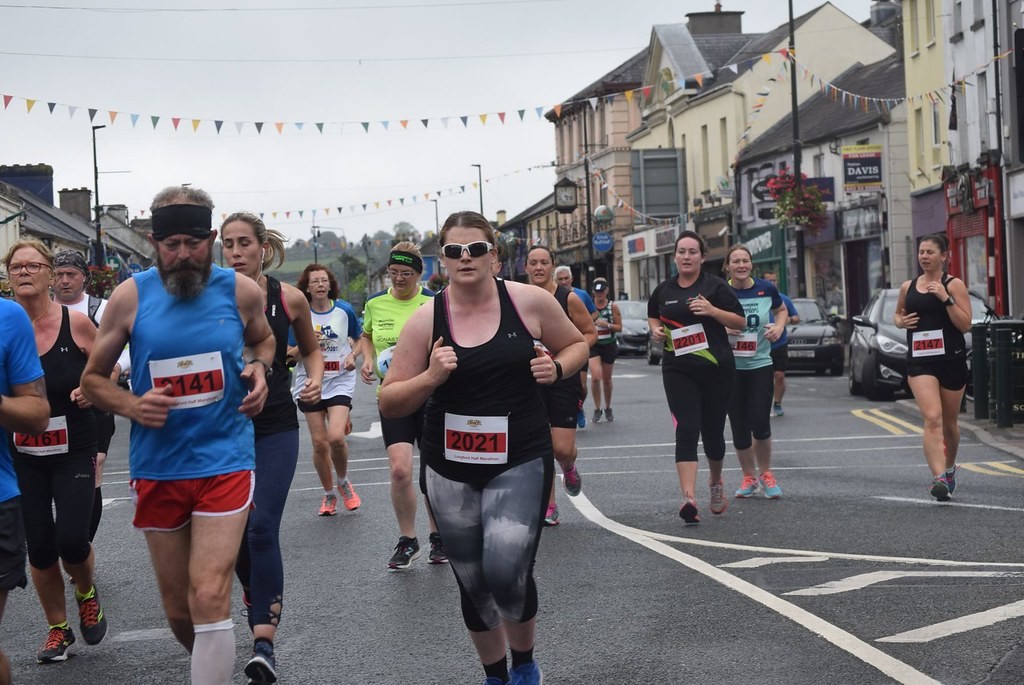
2021 Finishers Medal
Entry in any distance will cost €15, and all runners will receive a specially commissioned 2021 finishers medal by post.Announcing the virtual race, John Sheehan, vice-chairman of the organising committee said,
"While we are of course disappointed not to be able to go ahead with our event again this year, we are delighted that with the support of our main sponsors Abbott, we can bring our event to the virtual world, and I encourage everyone to get involved and take part over the month of September."
Mr Sheehan outlined that the virtual event will help to raise vital funds for charity partners, St Christopher's Services in Longford, at a time when funding for their services is most needed.
He concluded, “We look forward to 2022 with hope and optimism and are planning for the Abbott Longford Marathon at the end of August.
“We hope to see you all soon. In the meantime, keep safe, keep running and enjoy the 2021 Virtual Abbott Longford Marathon.”
(08/25/2021) ⚡AMPLongford Marathon
The Friendly Marathon in the Heart Of Ireland. Ireland's friendliest marathon has a reputation for being one of Irelands best organised events, with a flat course, through the beautiful countryside of Longford, Roscommon and Leitrim beside the River Shannon. Take a place,its an ideal run for anybody training for the Dublin City Marathon in October. Organised by runners, for...
more...As runner should you be worried about hyponatremia?
Hydration is important for runners, particularly during the hot summer months. Not surprisingly, the conversation surrounding hydration typically revolves around encouraging runners to drink more water, not less, but it is possible to drink too much water. Hyponatremia is a potentially dangerous result of over-hydration, and it’s something for runners to keep in mind when they’re out on a hot run.
According to the Mayo Clinic, hyponatremia occurs when the concentration of sodium in your blood is abnormally low. Sodium is an electrolyte that helps regulate how much water is in and around your cells. Drinking too much water can cause the sodium in your body to become diluted, which causes your body’s water levels to rise and your cells begin to swell. This can cause mild to life-threatening health problems. Symptoms include:
Nausea and vomiting
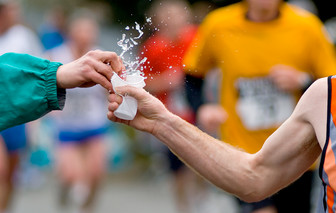
Headache
Confusion
Loss of energy, drowsiness and fatigue
Restlessness and irritability
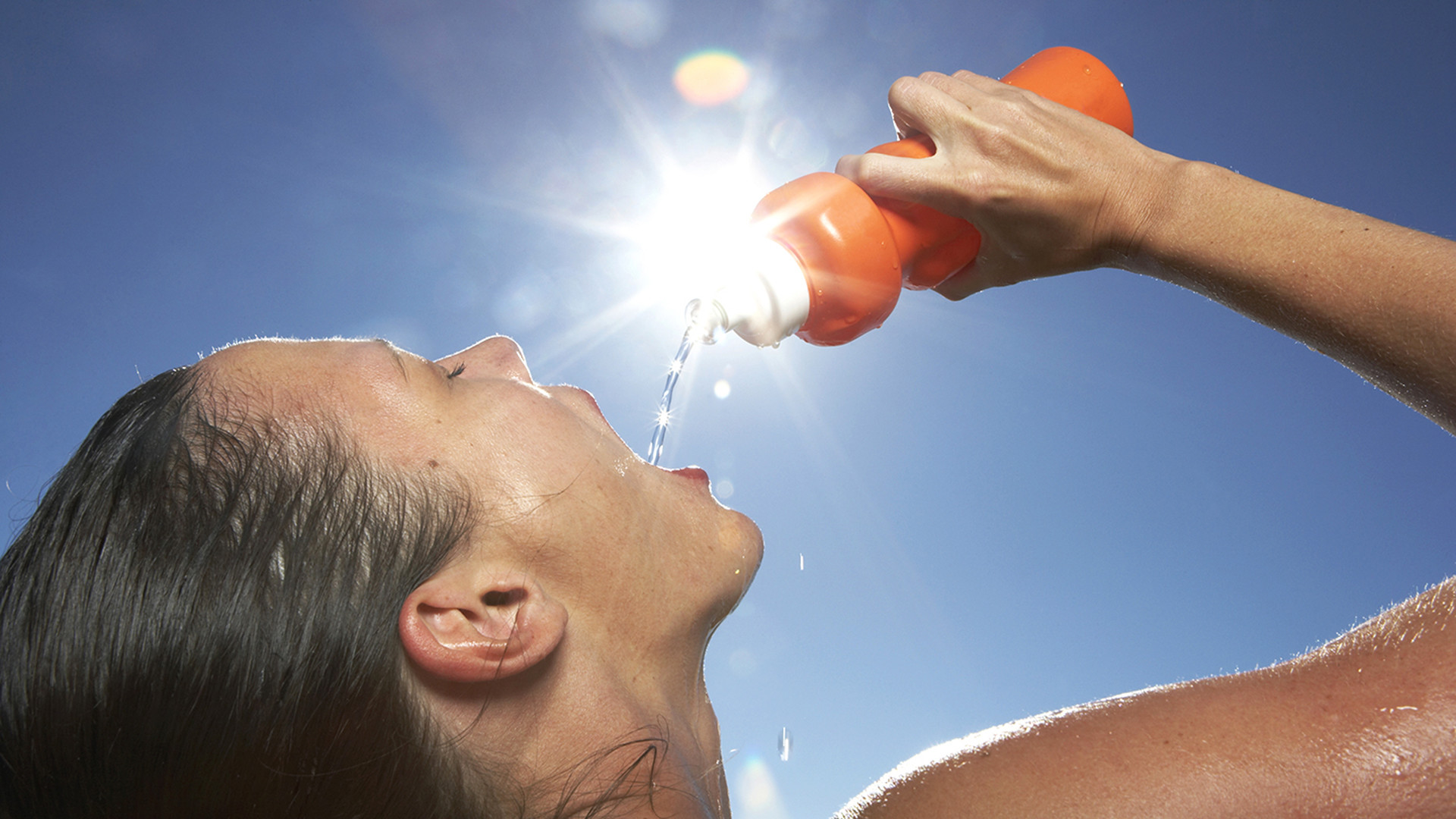
Muscle weakness, spasms or cramps
Seizures
Coma
There are many possible reasons someone might develop hyponatremia other than drinking too much water. Still, runners who are participating in long events like marathons, ultras and triathlons are at higher risk because they are more likely to over-consume water in an effort to stay hydrated.
How can you prevent hyponatremia?
Unfortunately, it’s impossible to say how much water is too much, because every individual’s hydration needs are different, but in general, runners should aim to take in only as much fluid as they lose during a race. For most people, thirst is a good guide to determine how often and how much they need to drink.
Another effective solution is to choose a sports drink during a run or race instead of water. This way, you’re replacing electrolytes (like sodium) while you drink, which will help to maintain your sodium balance.
Just remember to practice using these types of beverages during your training runs before using them during a race because, for some, they can cause gastrointestinal upset.
Finally, even when you’re not running, you should avoid excessive water intake. The color of your urine is usually a good indicator of your hydration status, and you should aim for it to be pale yellow in color. Clear pee is a sign you’re drinking too much and you should set the water glass down.
(08/25/2021) ⚡AMPby Brittany Hambleton
Sanlam Cape Town Marathon has been announced as an Abbott World Marathon Majors Candidate Race
The Sanlam Cape Town Marathon has officially been confirmed as an Abbott World Marathon Majors (AbbottWMM) candidate race - the first marathon in Africa to be nominated.
The announcement marks the commencement of a multi-year evaluation process conducted by AbbottWMM.
In order to become a Major, the Sanlam Cape Town Marathon will be required to meet certain criteria for three years and if successful, will join an elite group of races - Tokyo Marathon, Boston Marathon, Virgin Money London Marathon, BMW-BERLIN Marathon, Bank of America Chicago Marathon and TCS New York City Marathon - as a new member of the prestigious Abbott World Marathon Majors in 2025.
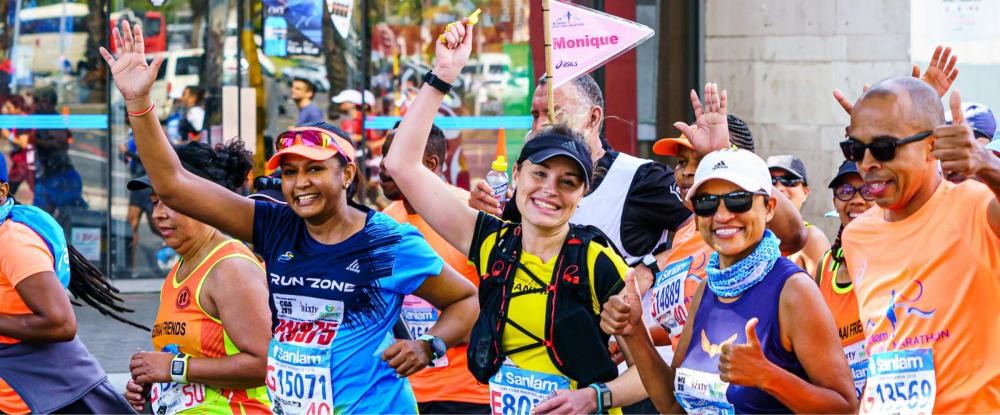
“We have always believed that the Sanlam Cape Town Marathon could be Africa’s first Abbott World Marathon Major, so becoming a candidate race is a tremendous honour”, said Sanlam Cape Town Marathon Chairman, Francois Pienaar at the announcement event at Cape Town Stadium.
“It acknowledges the Sanlam Cape Town Marathon as a global event that has consistently delivered a top quality world-class race, and one that continuously innovates and creates world-first initiatives like the immersive audio experience during the 2020 virtual race.
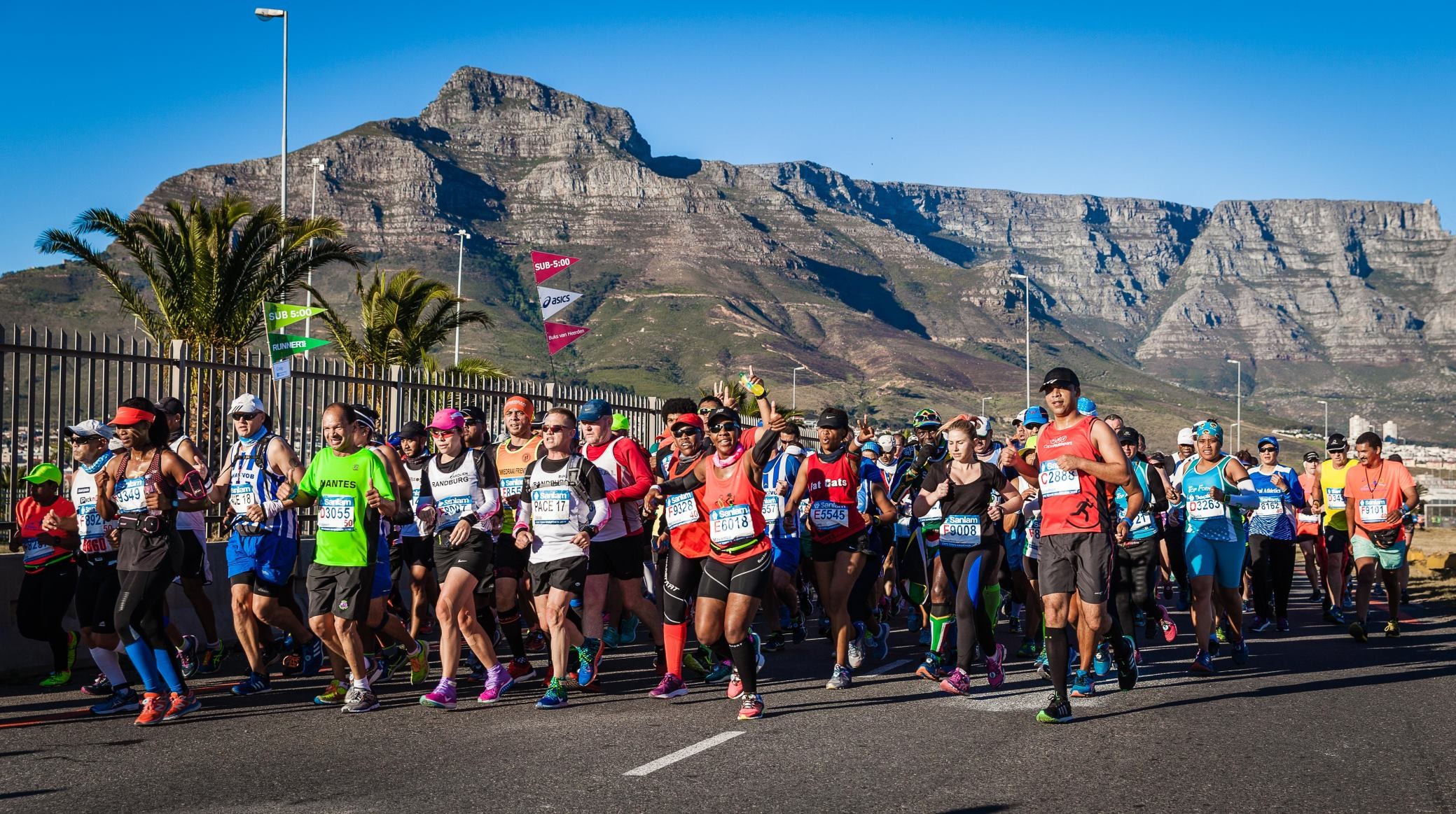
“Becoming an Abbott World Marathon Major would be like hosting a world championship event every single year, and achieving this status would be a tremendous boost for the city, country and continent. Africa is home to the best marathon runners in the world and we hope they will get the opportunity to run an Abbott World Marathon Major on home turf in the coming years.”
Headline sponsor Sanlam is celebrating its eighth sponsorship year and is equally thrilled at the prospect of the event becoming a jewel in the AbbottWMM crown.
Sydney Mbhele, Chief Executive of Sanlam Brand, says: “This is our eighth year as headline sponsor of the Sanlam Cape Town Marathon and we have always believed deeply in the vision for this race – to become Africa’s first Abbott World Marathon Major. Africa is our home, this is our race and we are absolutely committed to investing in the potential of this wonderful continent. Our purpose is to help people across Africa live with confidence and this race is the perfect way to foster the growth of Africa’s economy, and to showcase our people’s unparalleled potential. Creating a lasting legacy for generations to come is a vision and dream we share with all our partners.
“And now we are celebrating coming a step closer. The collective confidence that the continent will garner from hosting an event of this stature will deliver value in many ways, enabling us to benefit economically and socially from a world-class event. We extend our sincerest congratulations to all of our partners who have worked tirelessly to elevate the event to this level. We have no doubt that in just three short years, we will tick all the boxes and have the honour of hosting the continent’s first major on home soil.”
Cape Town is a port city on the tip of South Africa’s southwest coast that is overlooked by the world-renowned Table Mountain, an official New7Wonder of Nature. It is consistently rated as one of the world’s most beautiful cities and most popular tourist destinations - renowned for its exquisite natural beauty, sweeping vistas, beaches, family friendly activities and some of the best restaurants in the world.
Cape Town Executive Mayor Dan Plato said that this candidacy means a lot for Cape Town, South Africa and Africa, and will further solidify the Mother City’s reputation as a sports capital. “We are proud to be the host of SA and Africa’s first Abbott World Marathon Majors Candidate and wholeheartedly support the Sanlam Cape Town Marathon in the coming years.
“We know that these evaluation years will already offer a tremendous economic boost for Cape Town and its residents, and expect an annual influx of approximately 10,000 international athletes and their supporters in the coming years - especially once the Sanlam Cape Town Marathon earns Abbott World Marathon Major status. We can’t wait to welcome more recreational and elite marathoners to Cape Town; it’s time to show the world how we run a marathon to the African beat.”
Pienaar noted that the Sanlam Cape Town Marathon already meets many of the requirements set by the Abbott World Marathon Majors, and that continued enhancements will be made to the race. This also includes a new strategic partnership with Infront, the media and marketing specialists who will join the event on this exciting journey, noted Pienaar. “We are pulling out all the stops to achieve these goals, and are excited to receive the support from our runners, spectators, sponsors and the City to make this dream a reality.”
Hans-Peter Zurbruegg, Senior Vice President Personal & Corporate Fitness at Infront, said: “We are happy to become a shareholder of the Sanlam Cape Town Marathon and we fully buy into the ambition to reach AbbottWMM status by 2025. This is exciting news for the city of Cape Town, South Africa and Africa. Our direct involvement forms part of our growing ambition to further enter the African market and will both strengthen our relationship with the AbbottWMM as well as support future business opportunities.”
Added James Moloi, President of Athletics South Africa: "This is an important step in the history of road-running in the country and Africa as a whole. It will be a significant recognition which would elevate the race to another prestigious level.”
Tim Hadzima, Executive Director, Abbott World Marathon Majors said, “The Abbott World Marathon Majors are delighted to welcome the Sanlam Cape Town Marathon into the candidate process from 2022. This presents an exciting opportunity to expand our impact into Africa and further our mission to create, grow and support opportunities for all to discover the power of the marathon community. We look forward to working closely with the team in Cape Town as we start this journey together!”
It was also announced that adidas South Africa will be partnering with the Cape Town Marathon from 2022 and looks forward to supporting the race during its candidacy period as it strives to become the first World Marathon Major on the African continent.
(08/25/2021) ⚡AMPby Running USA
Cape Town Marathon
The Sanlam Cape Town Marathon is a City Marathon held in Cape Town, South Africa, which is sponsored by Sanlam, the City of Cape Town and Vital Health Foods. The marathon is held on a fast and flat course, starting and finishing in Green Point, near the Cape Town Stadium. Prior to existing in its current format, the Cape Town...
more...

